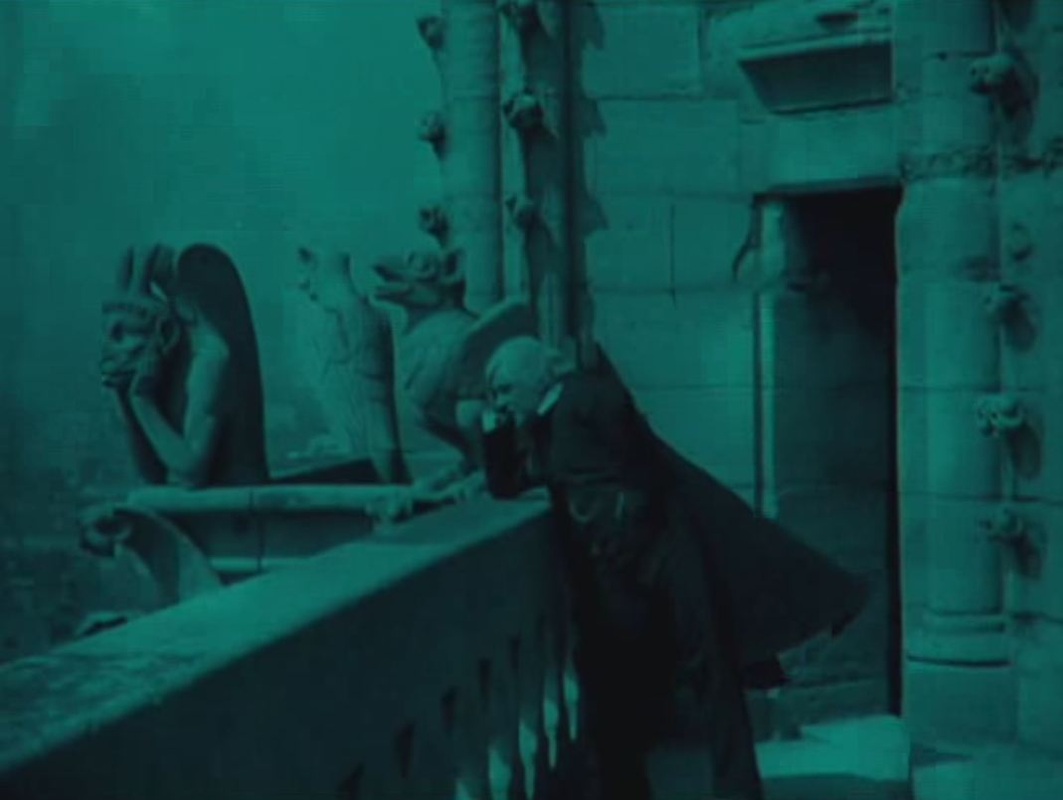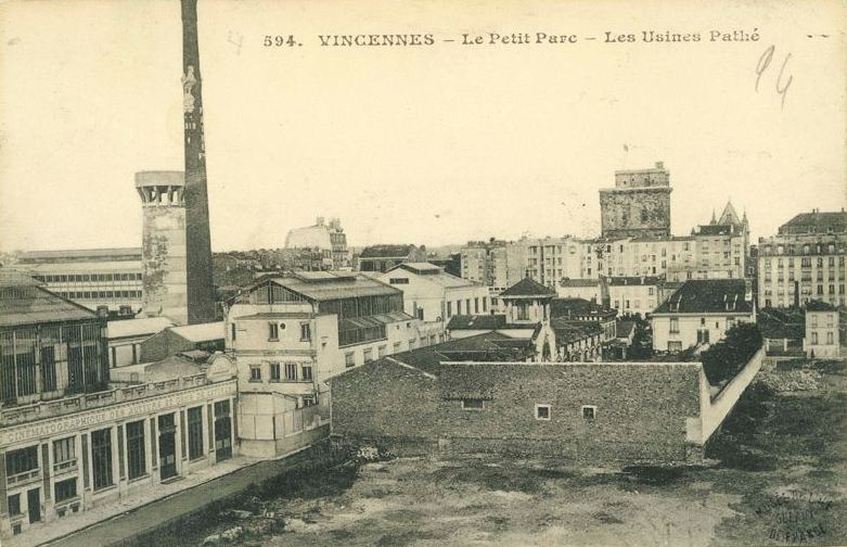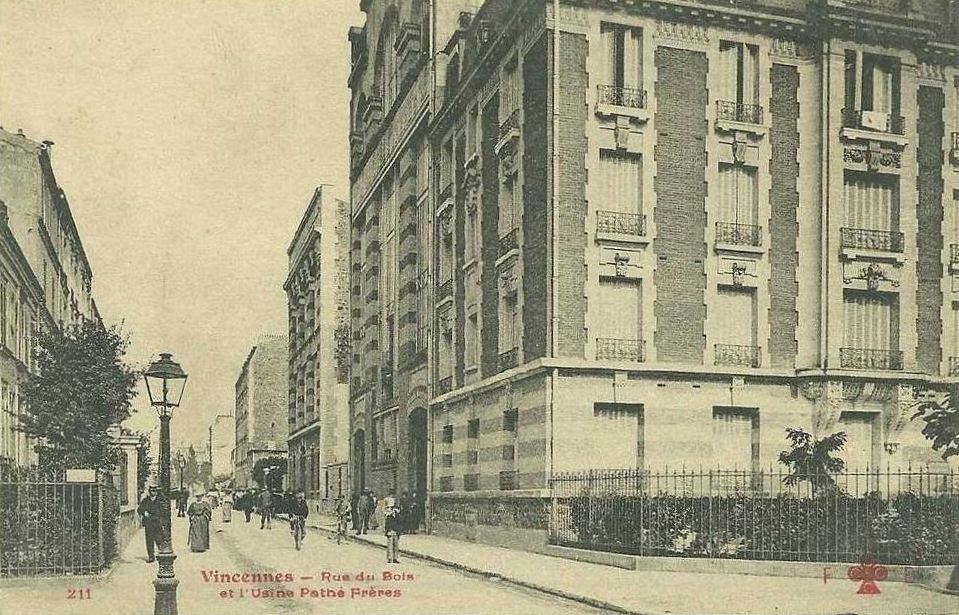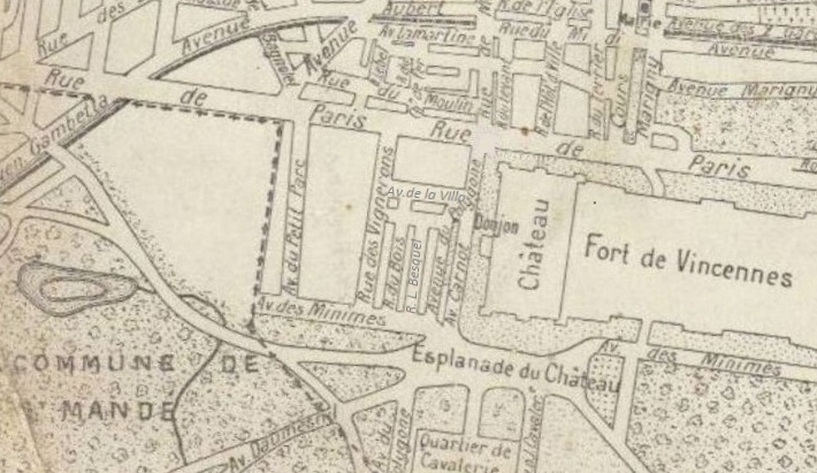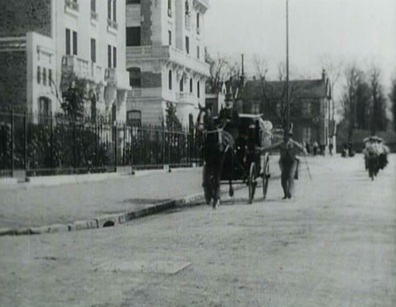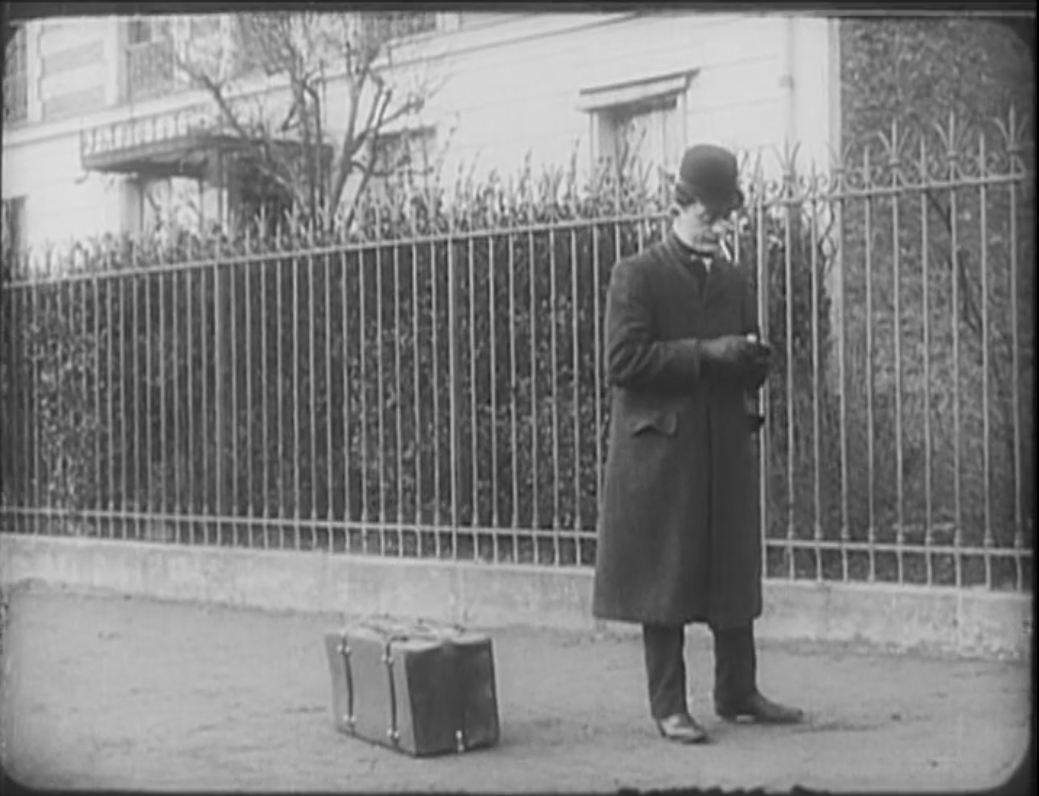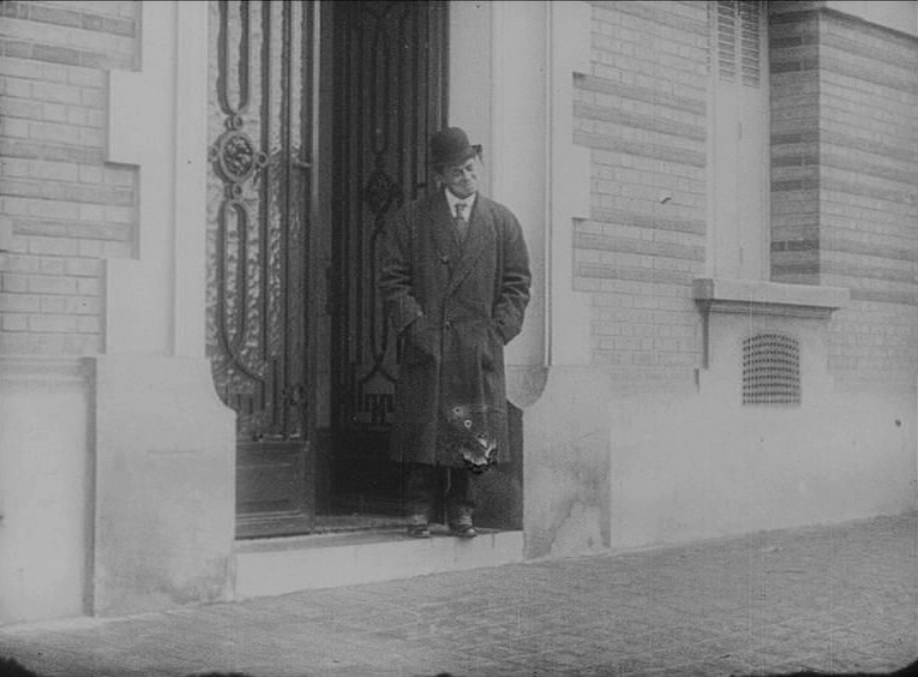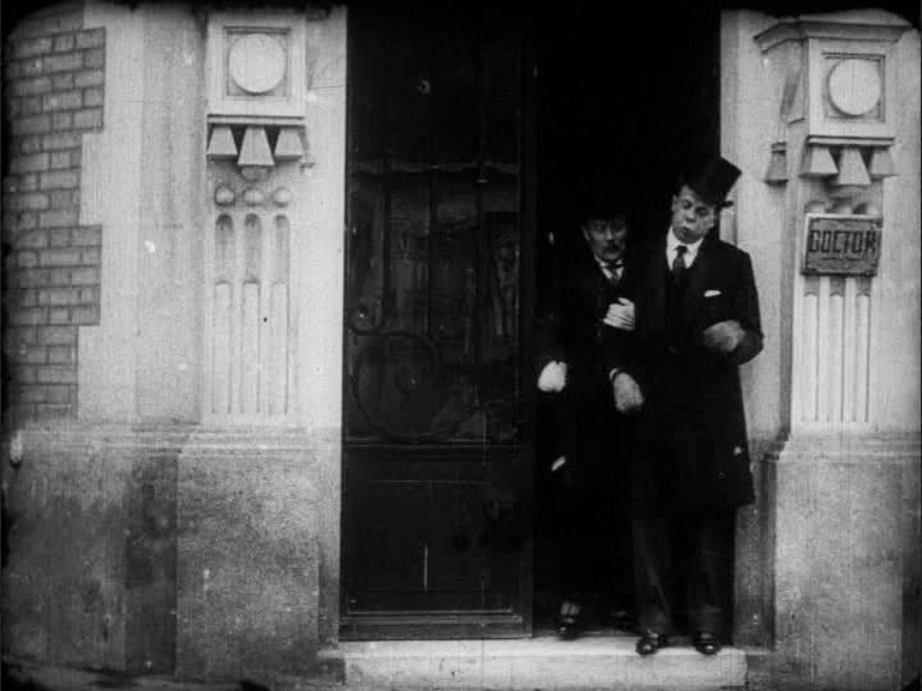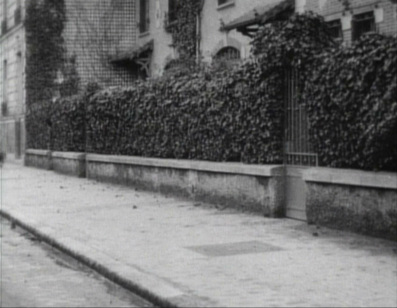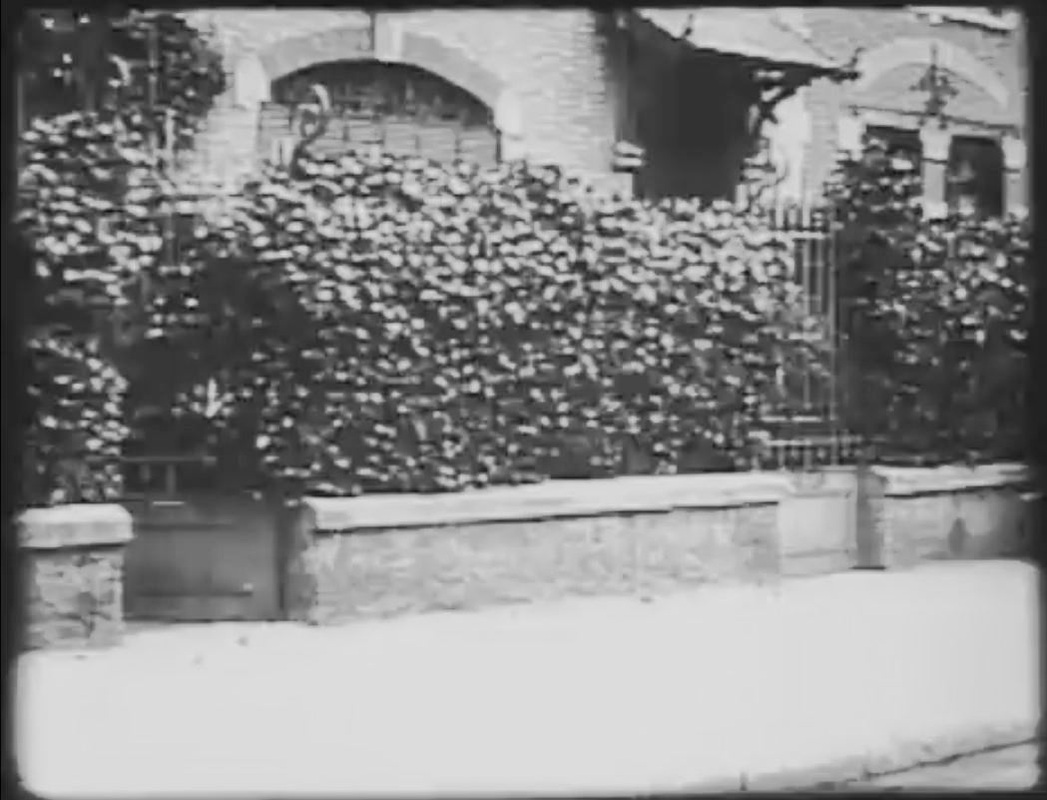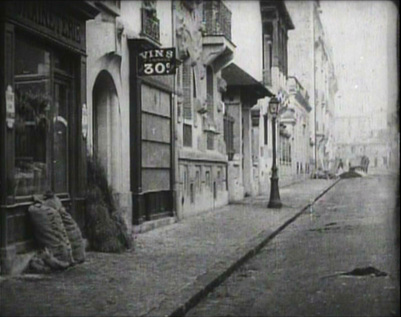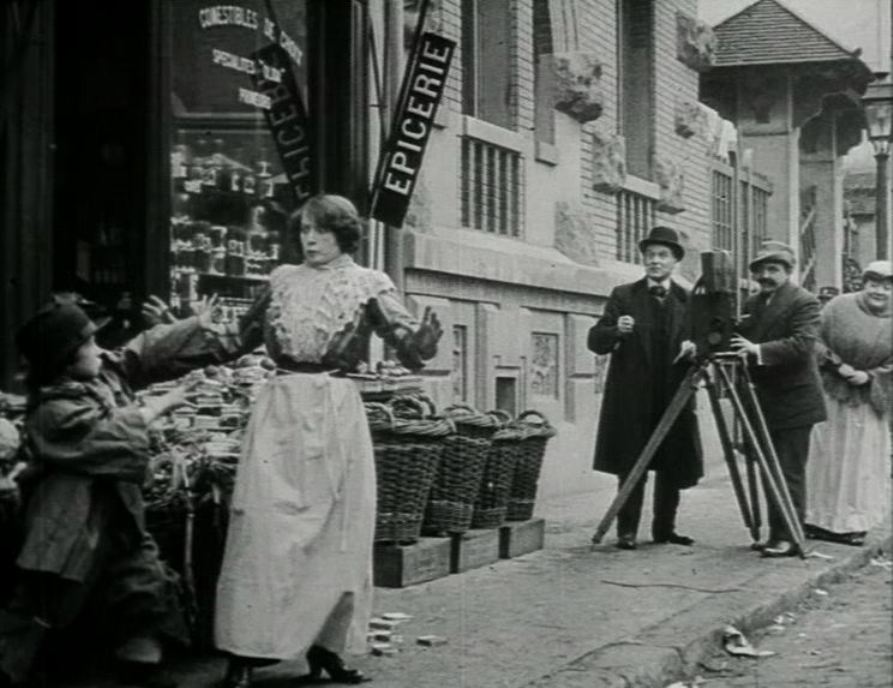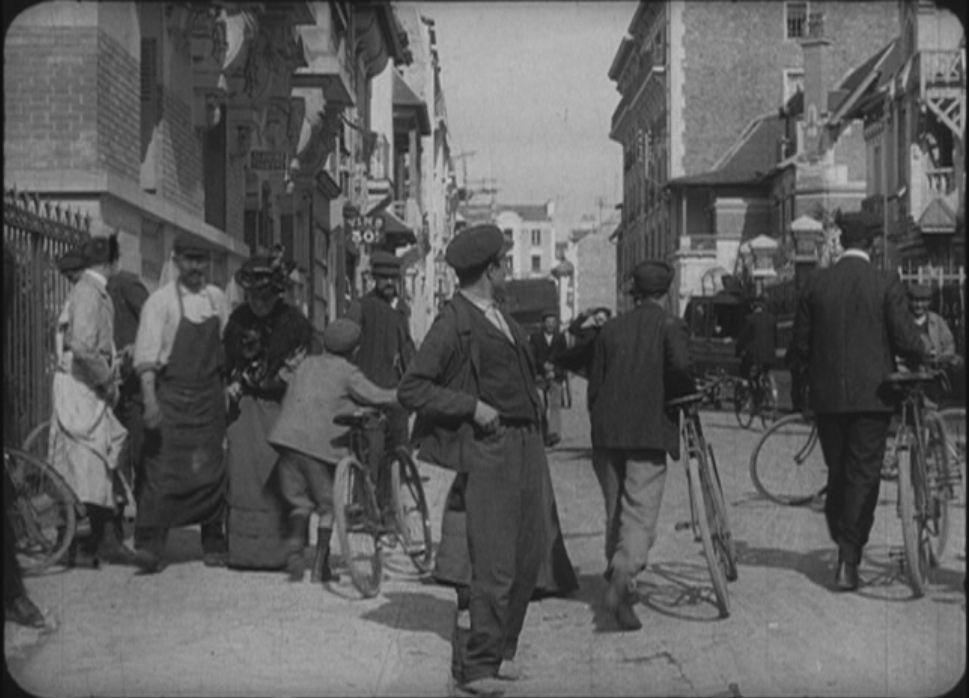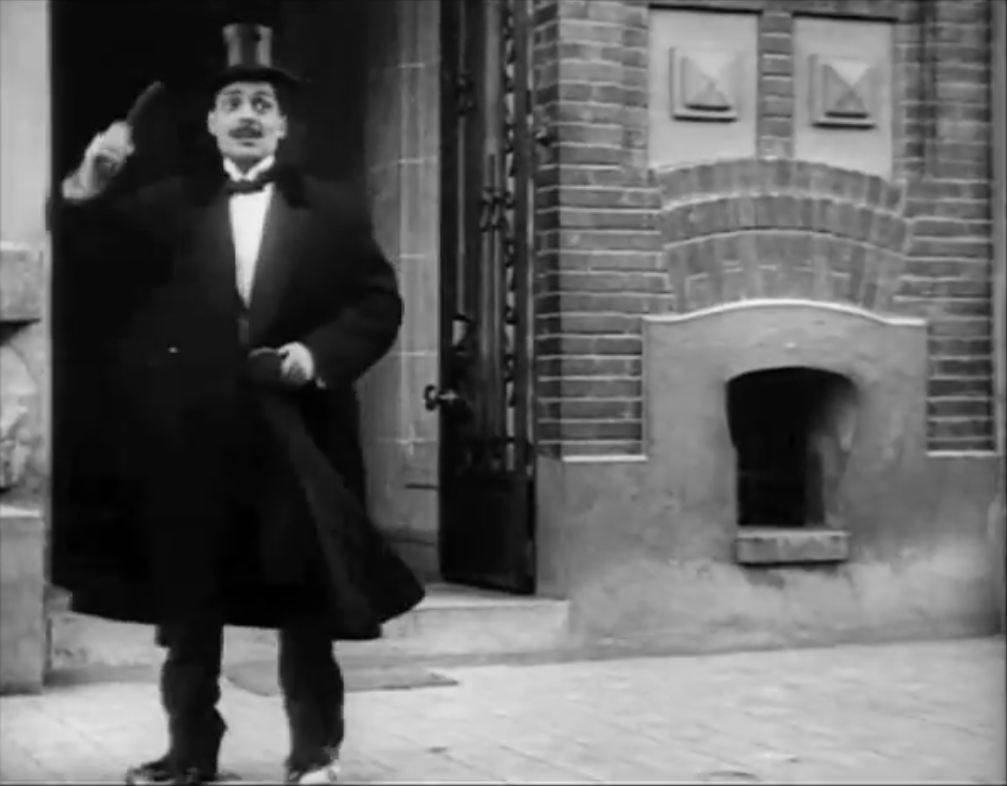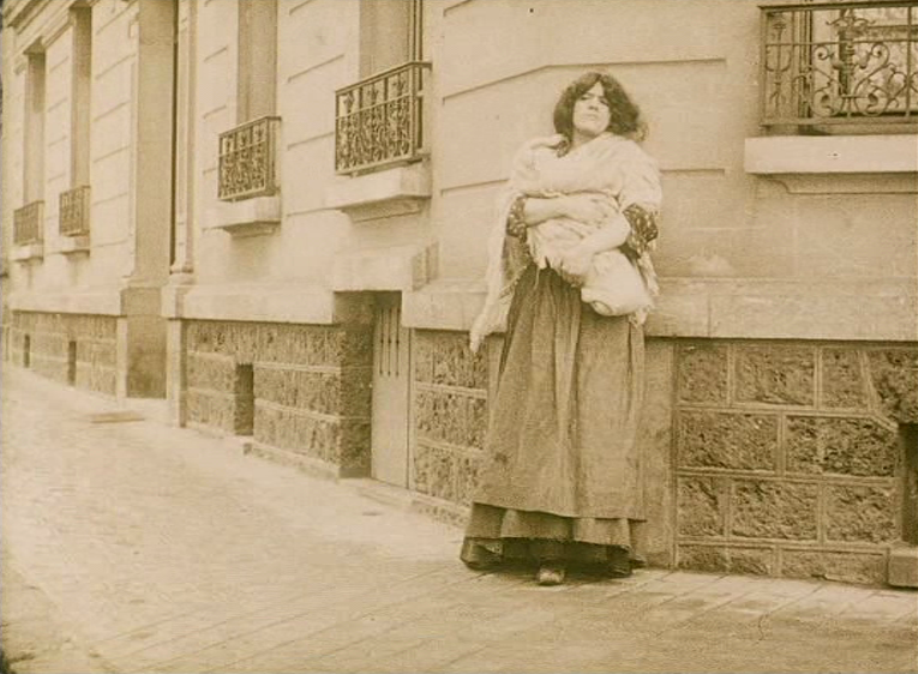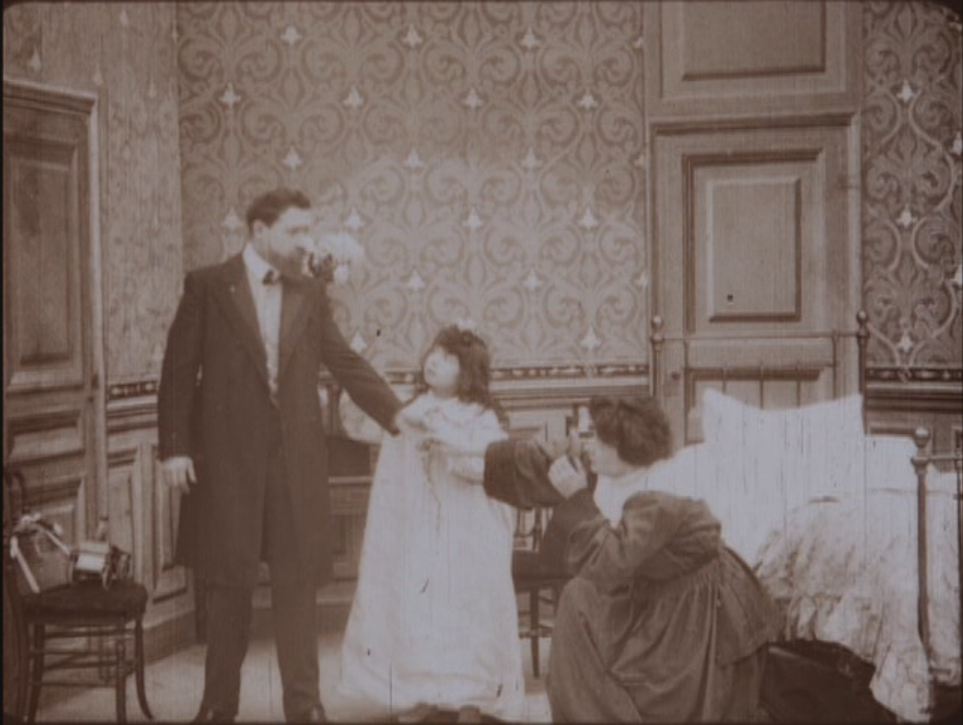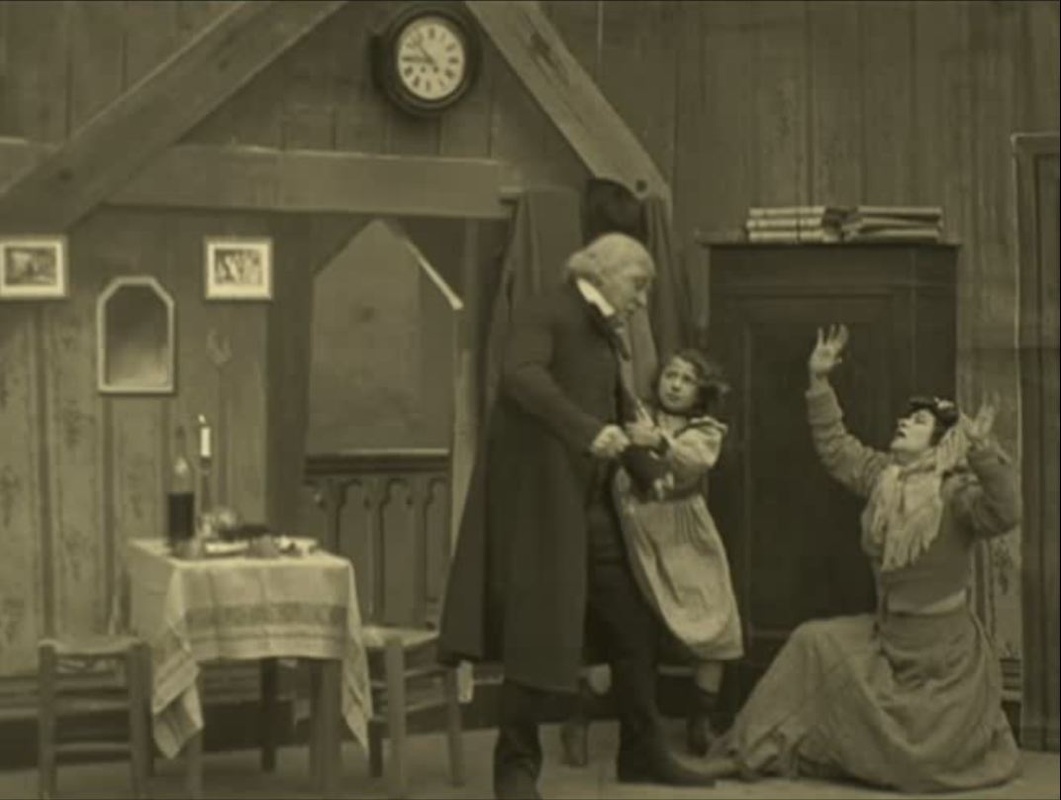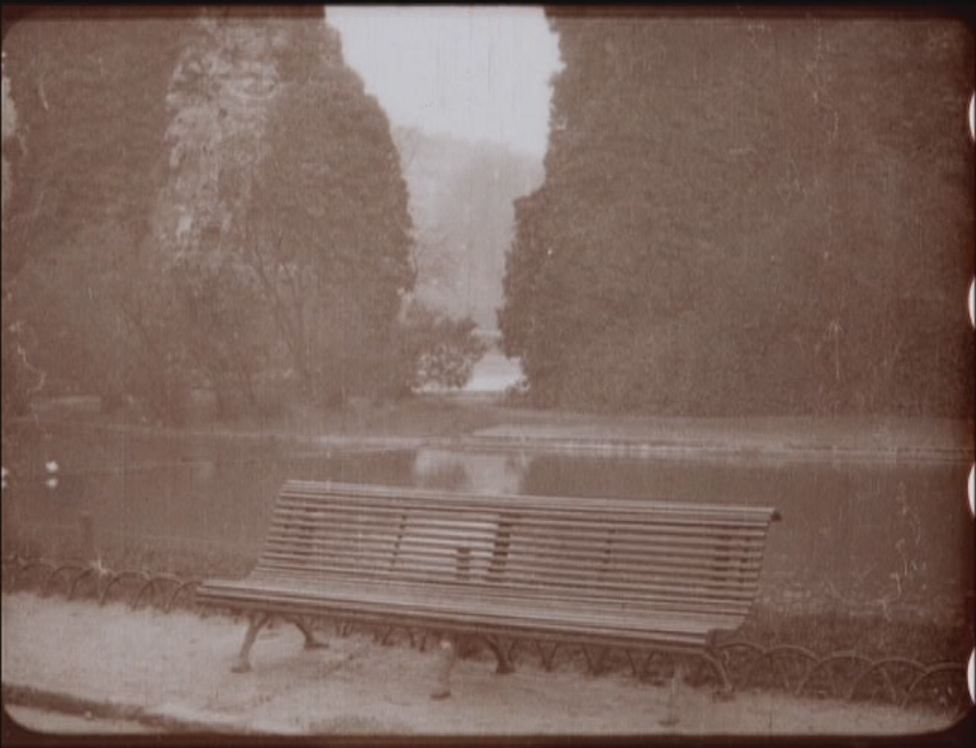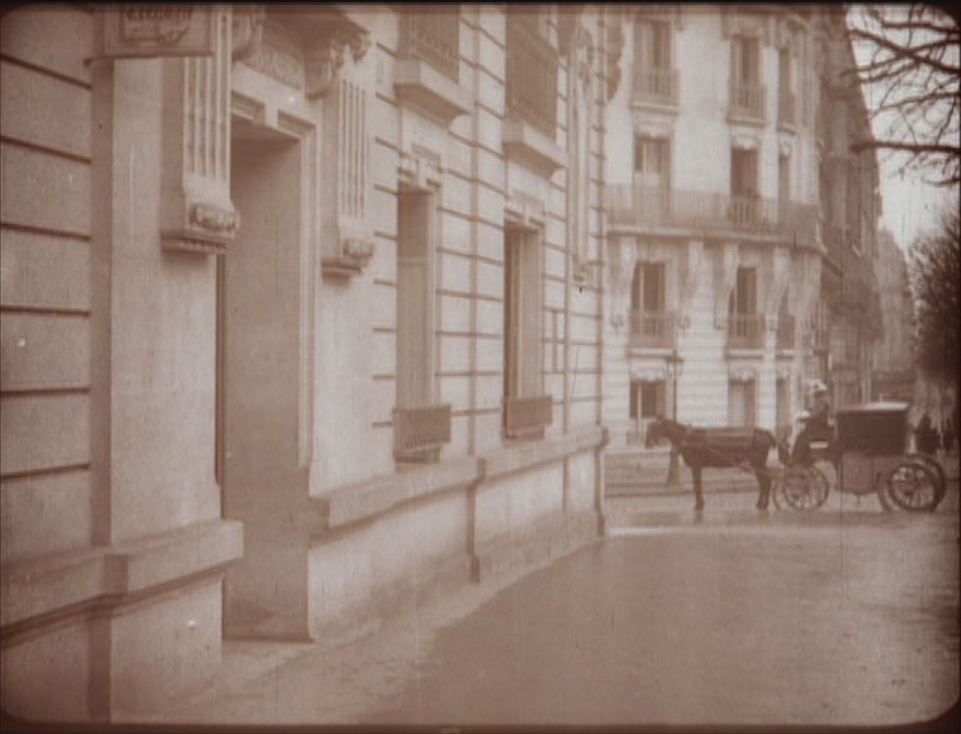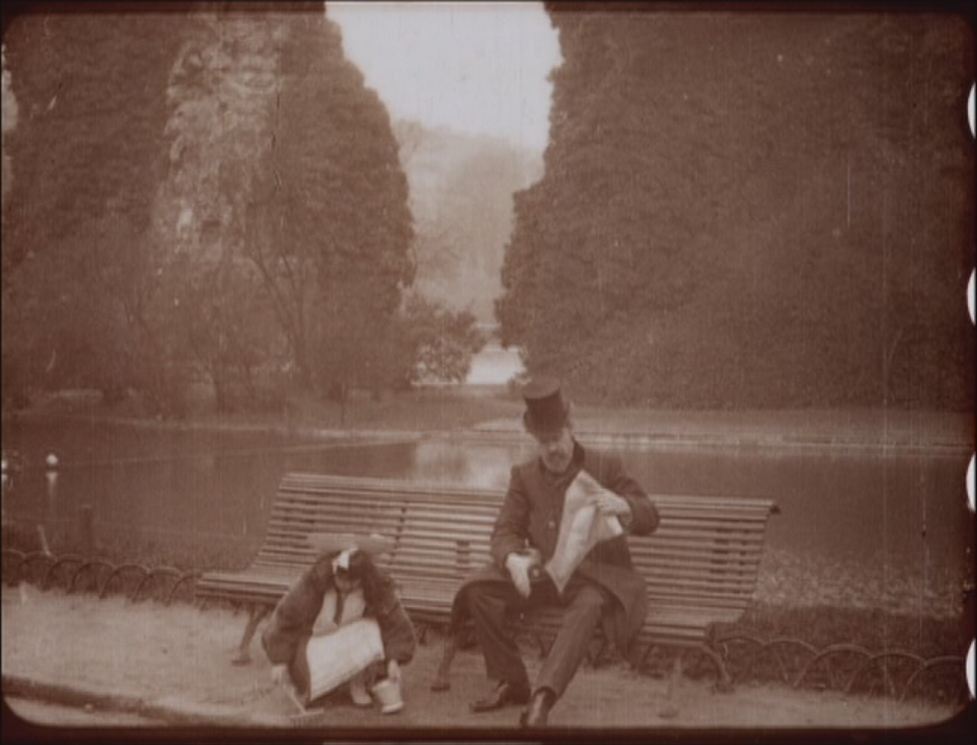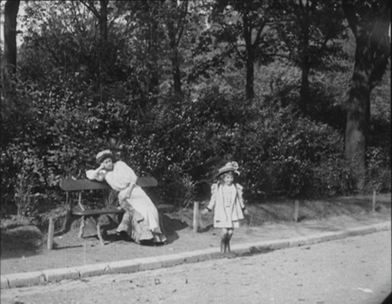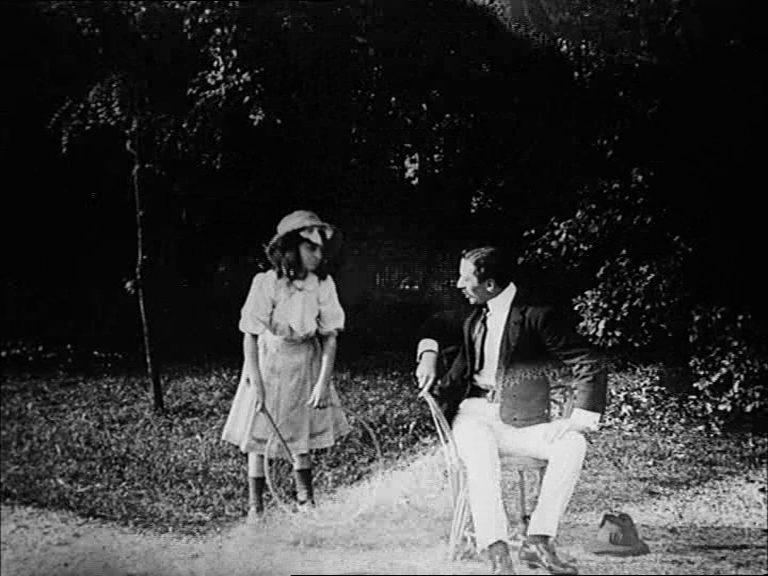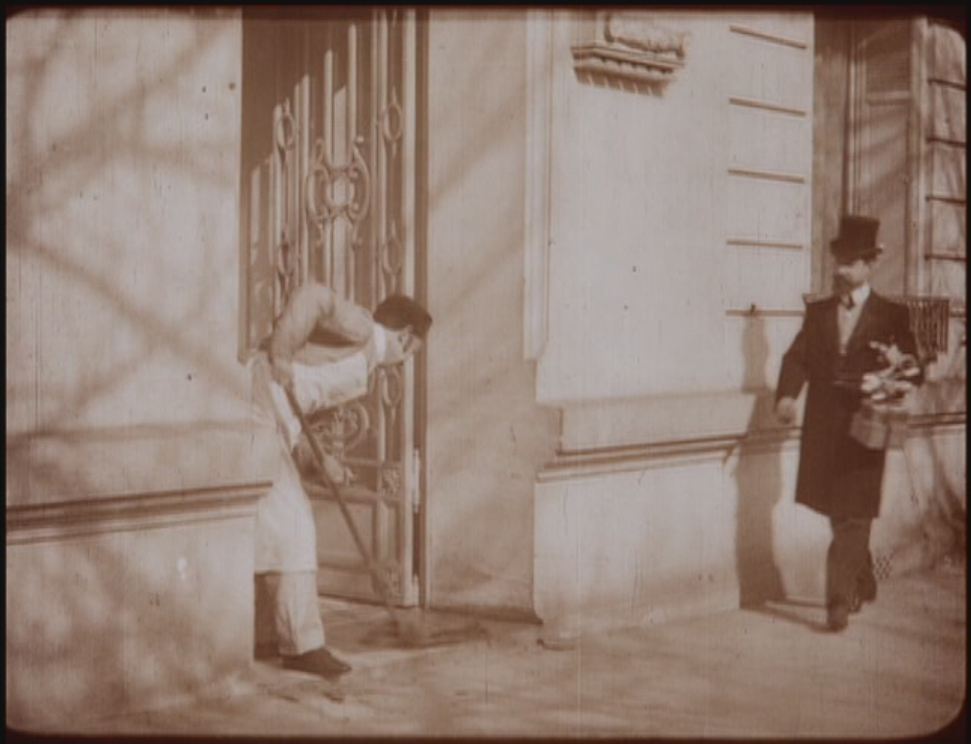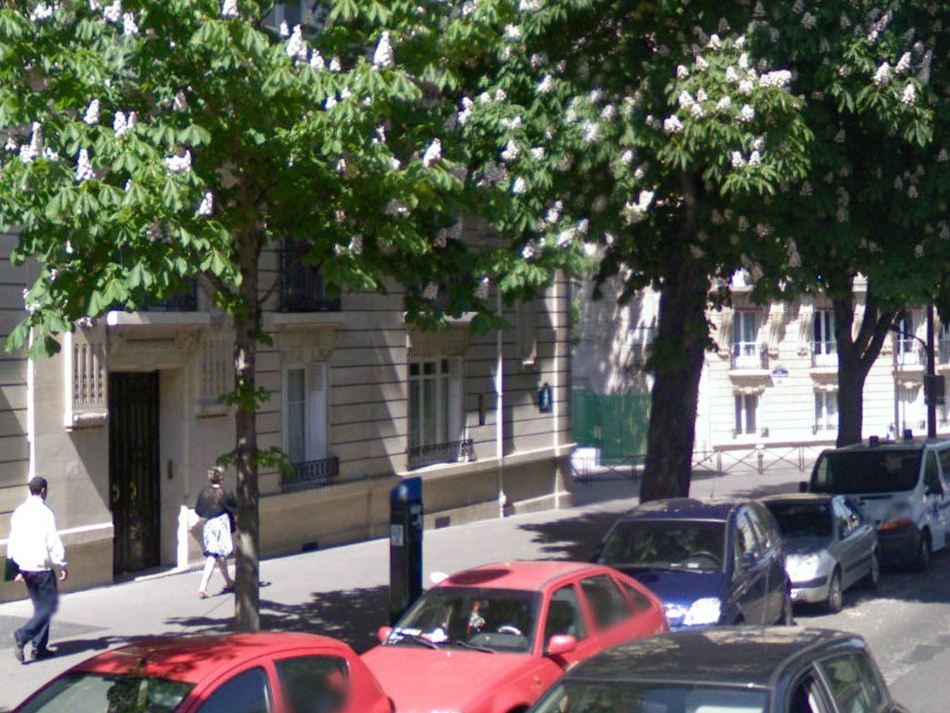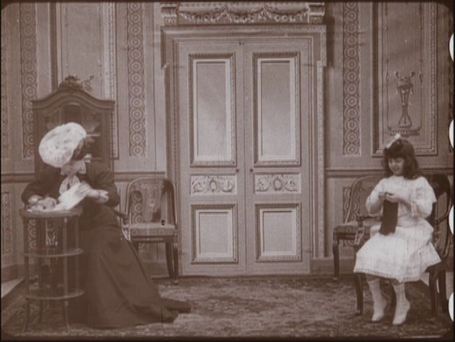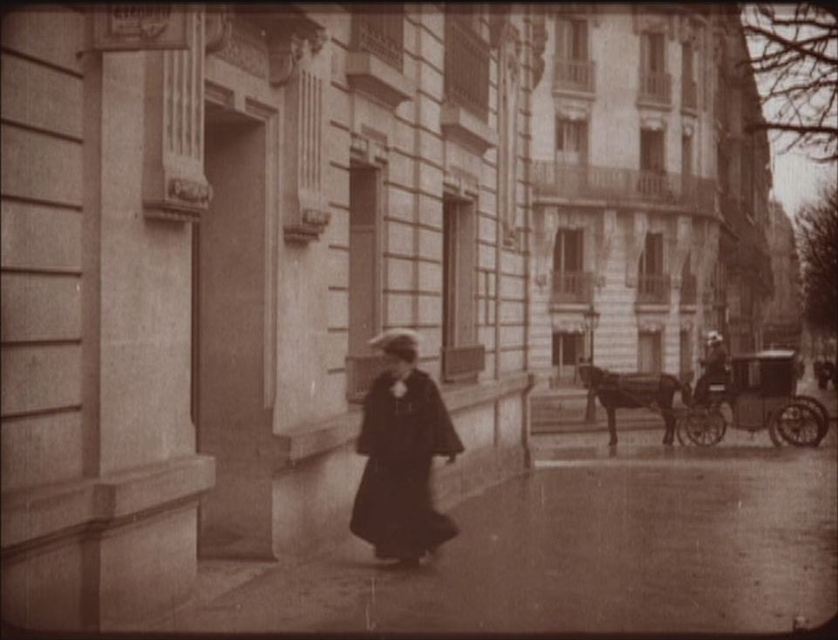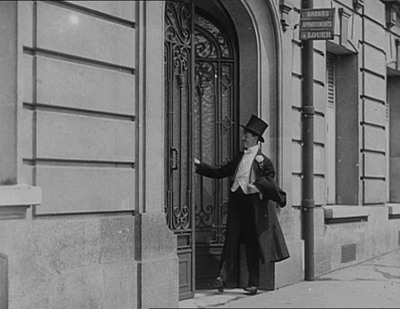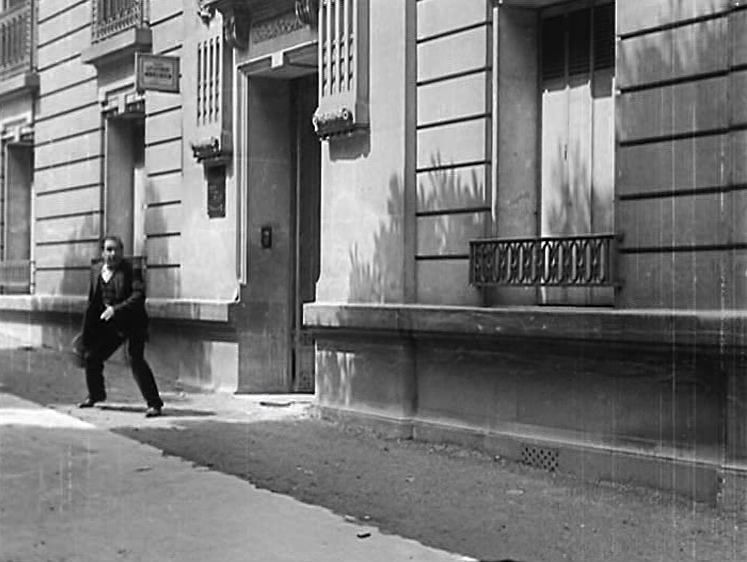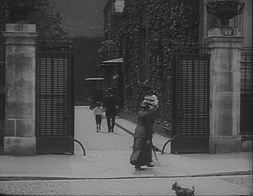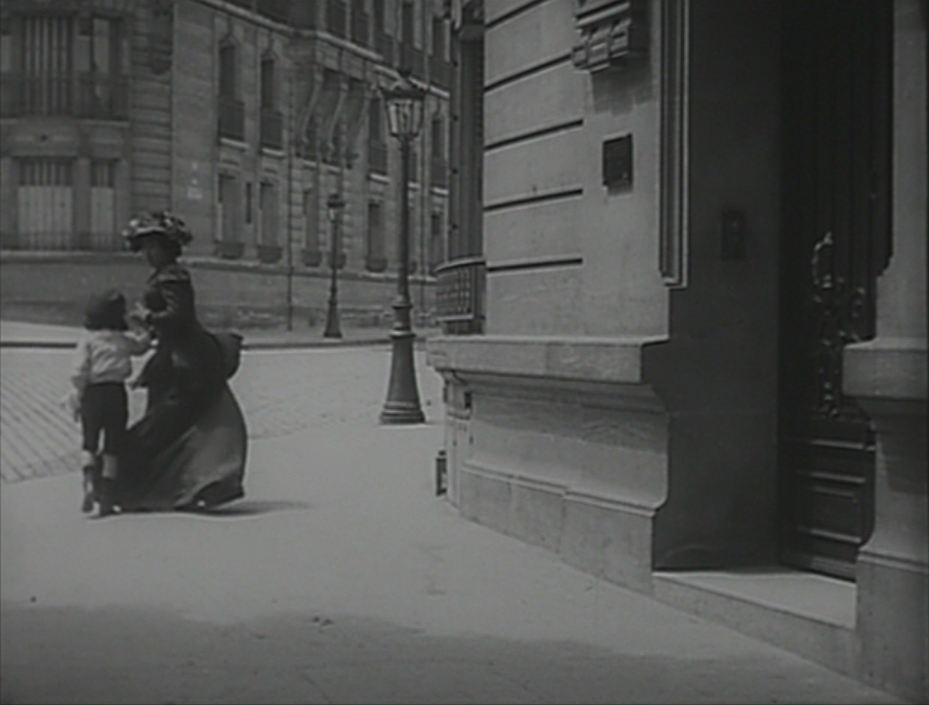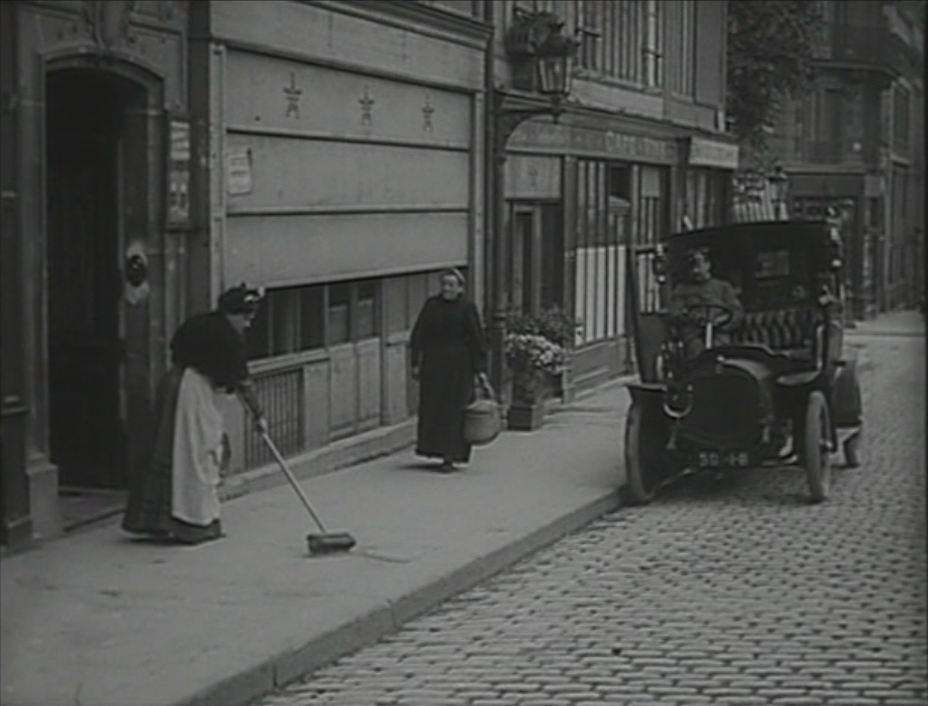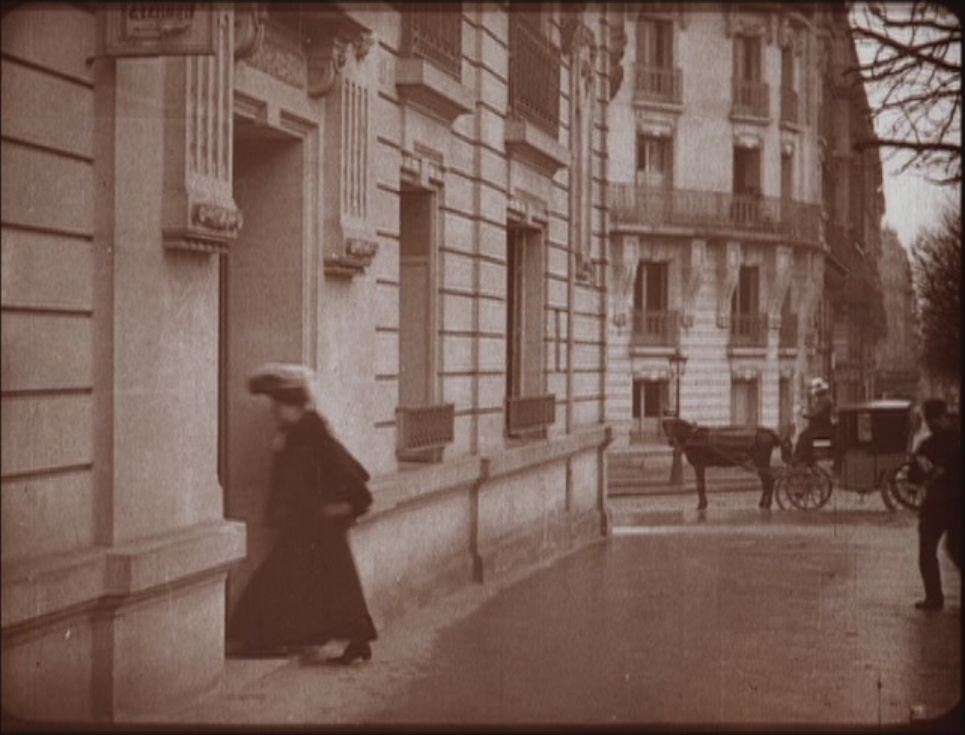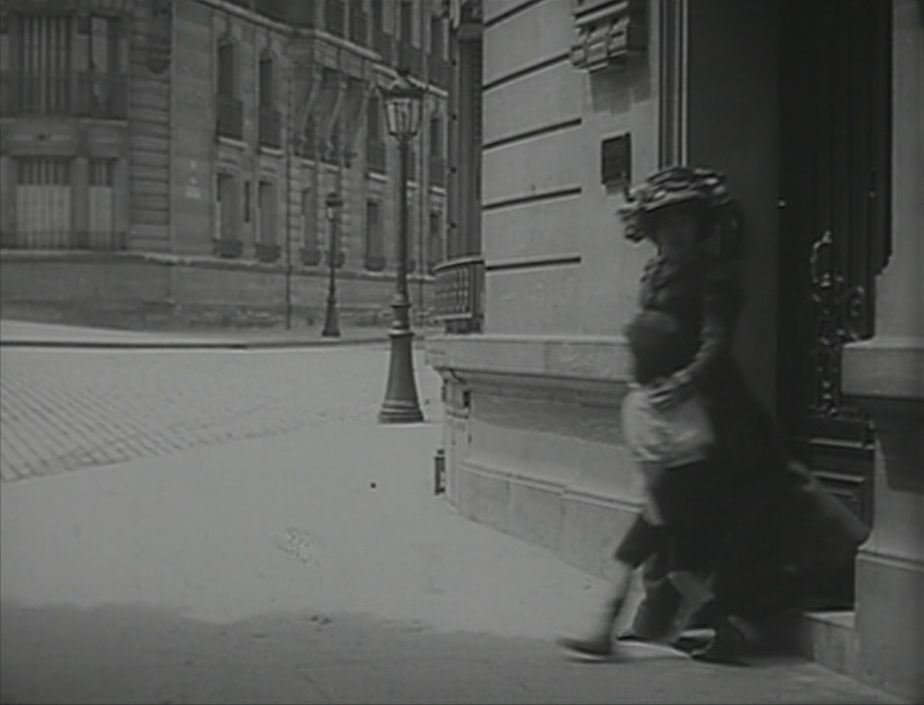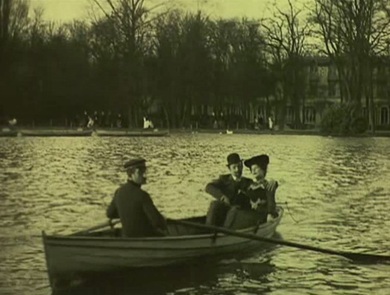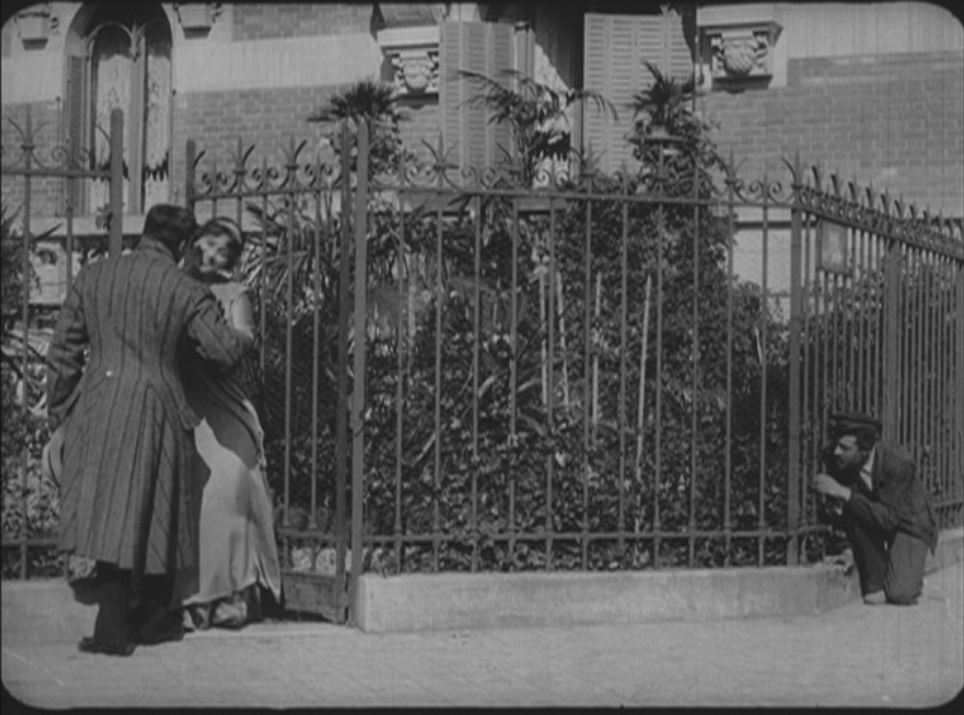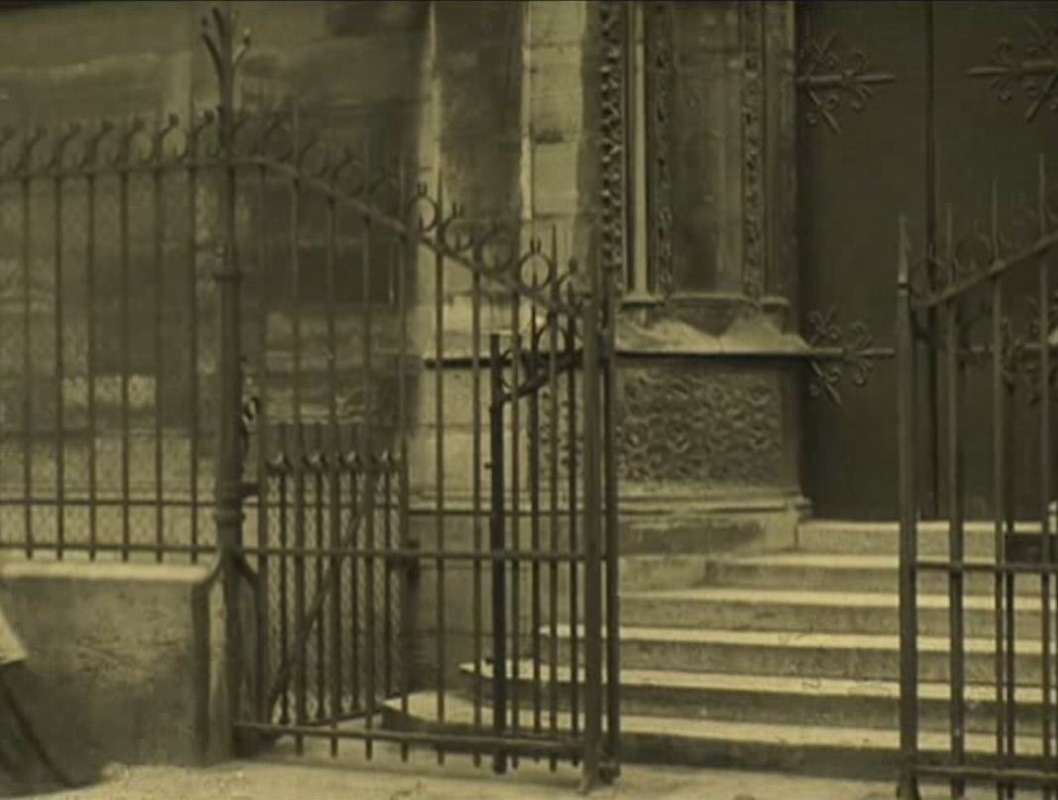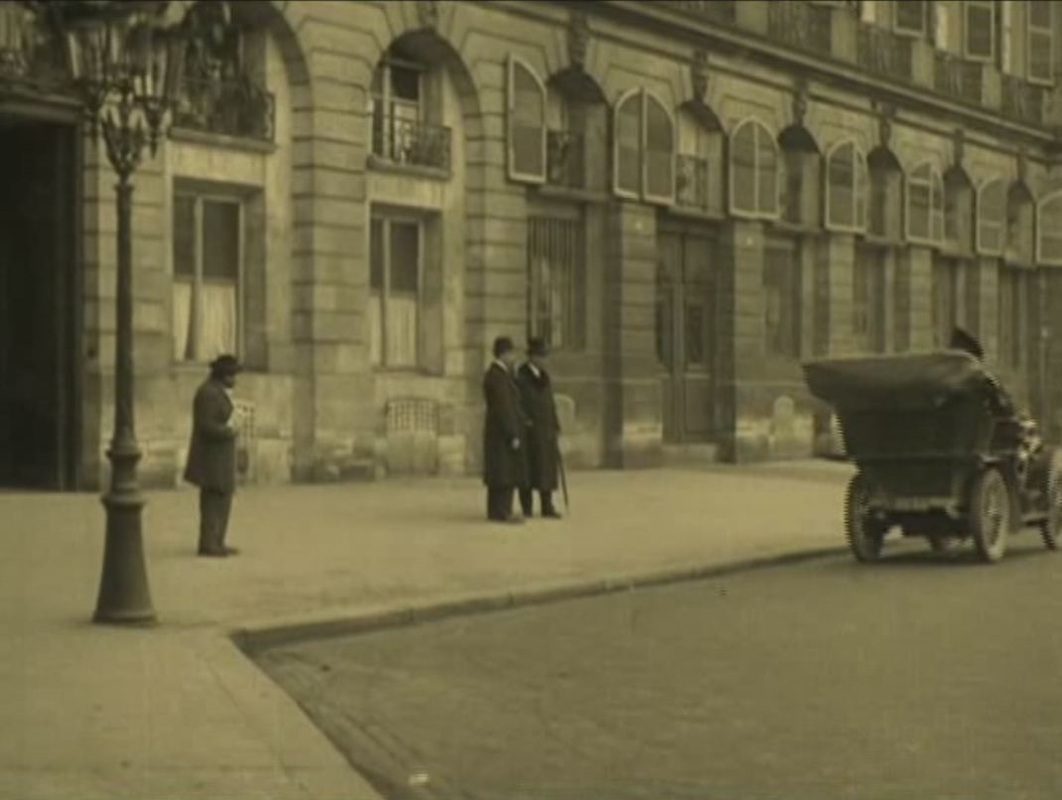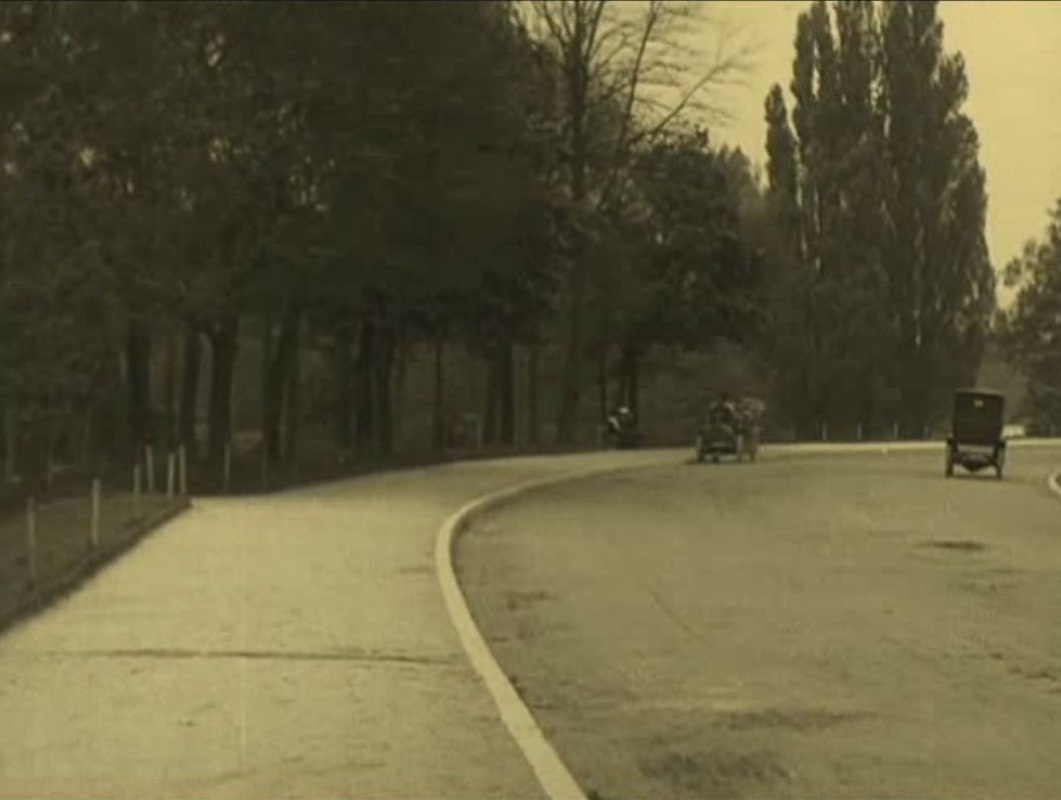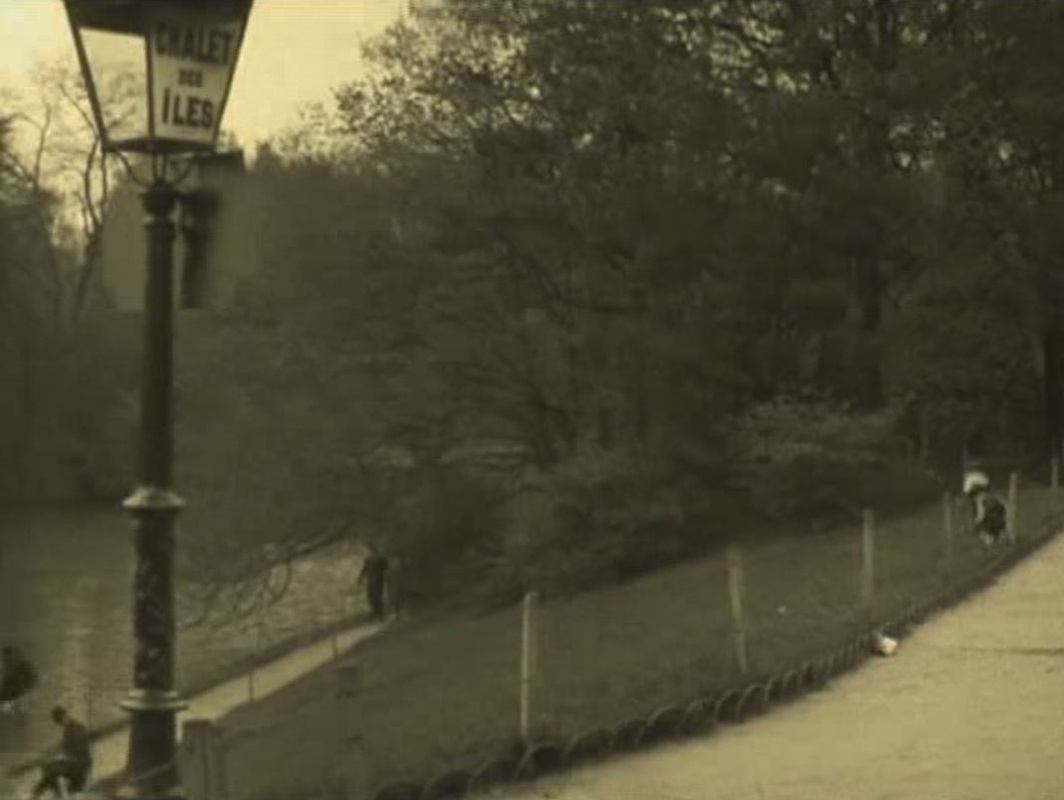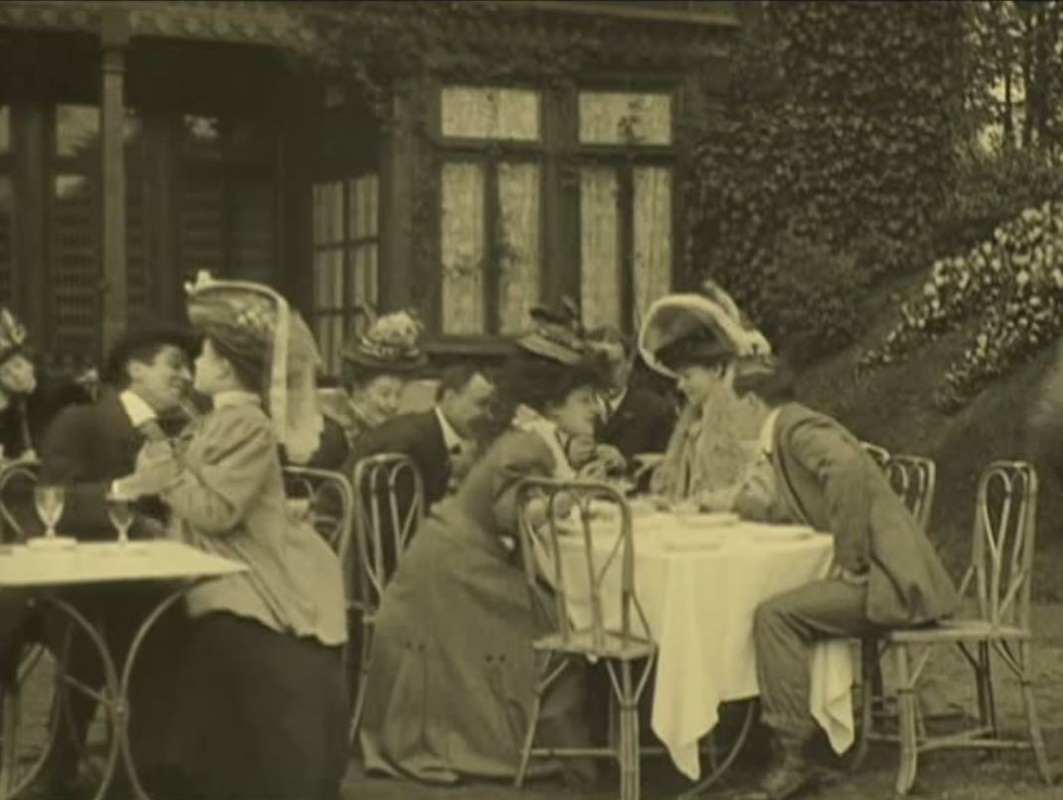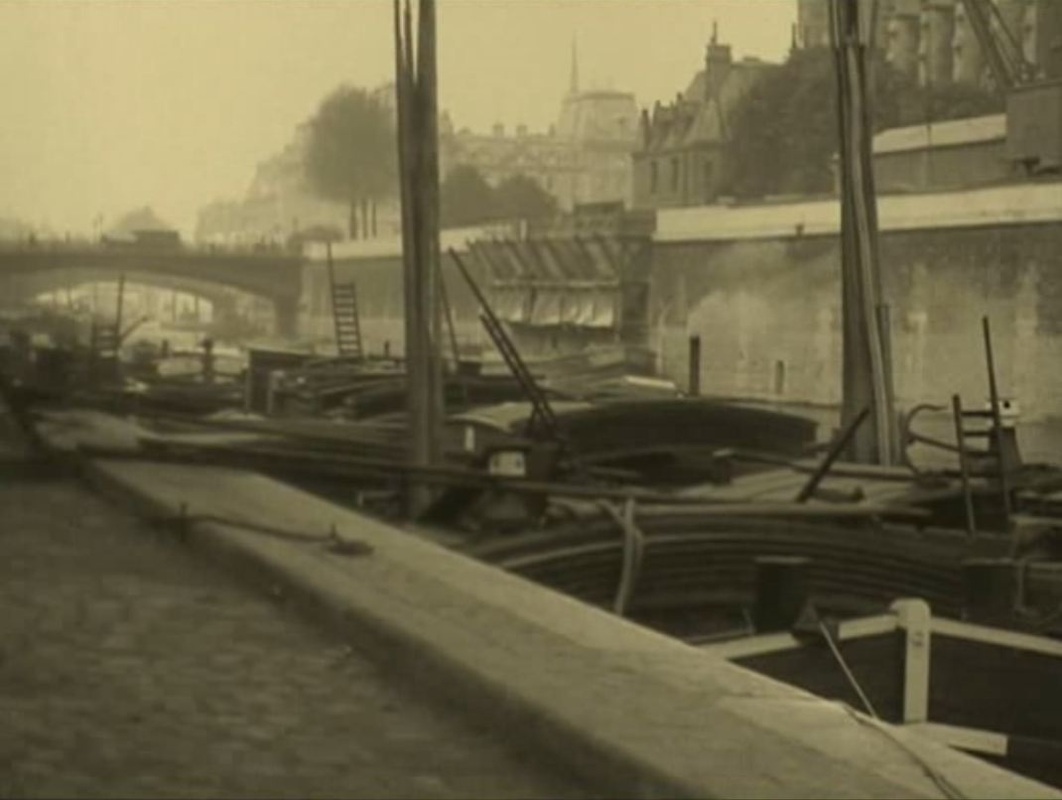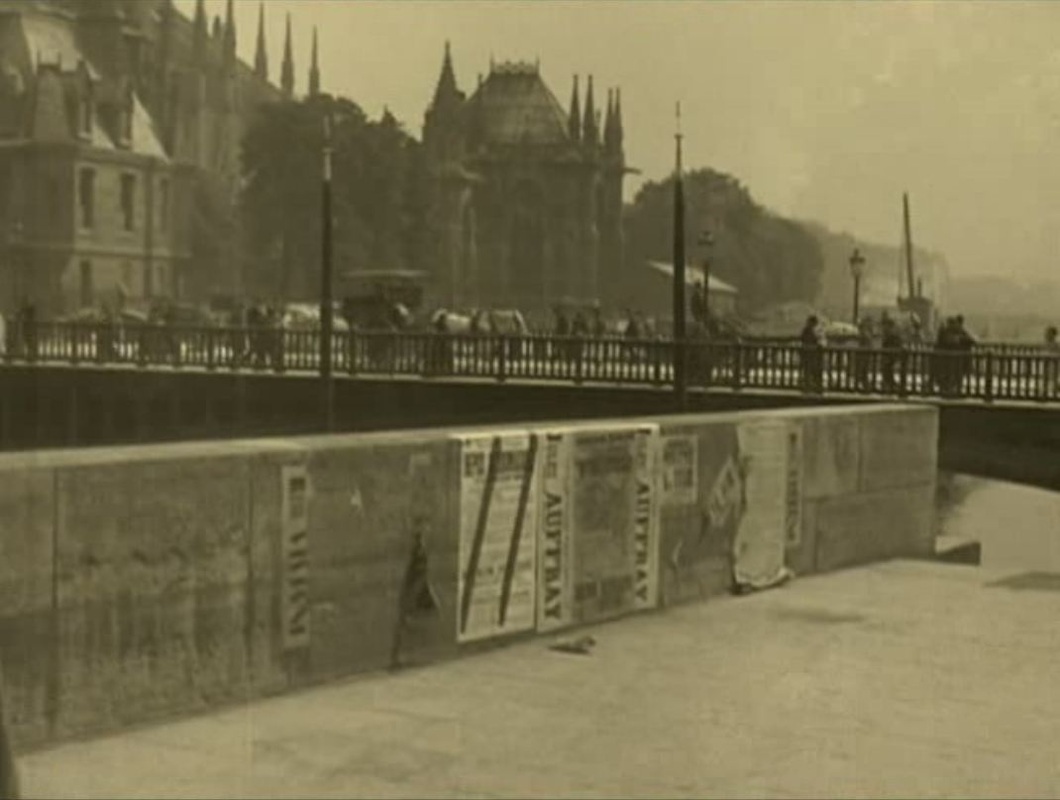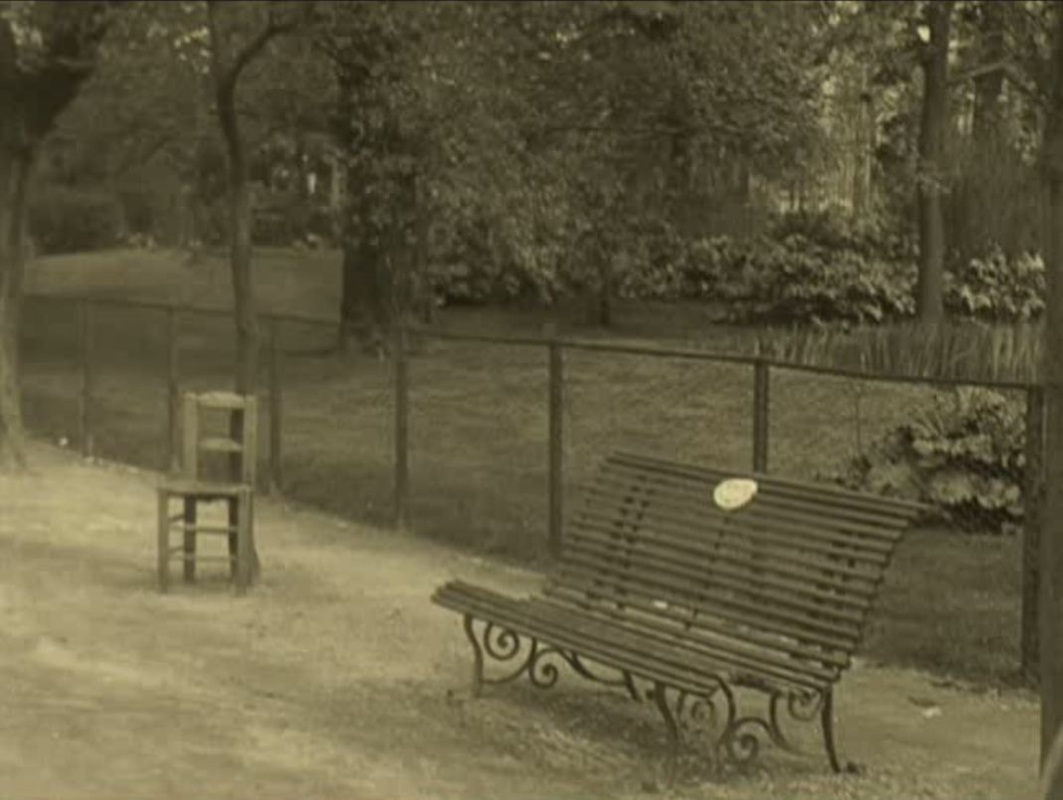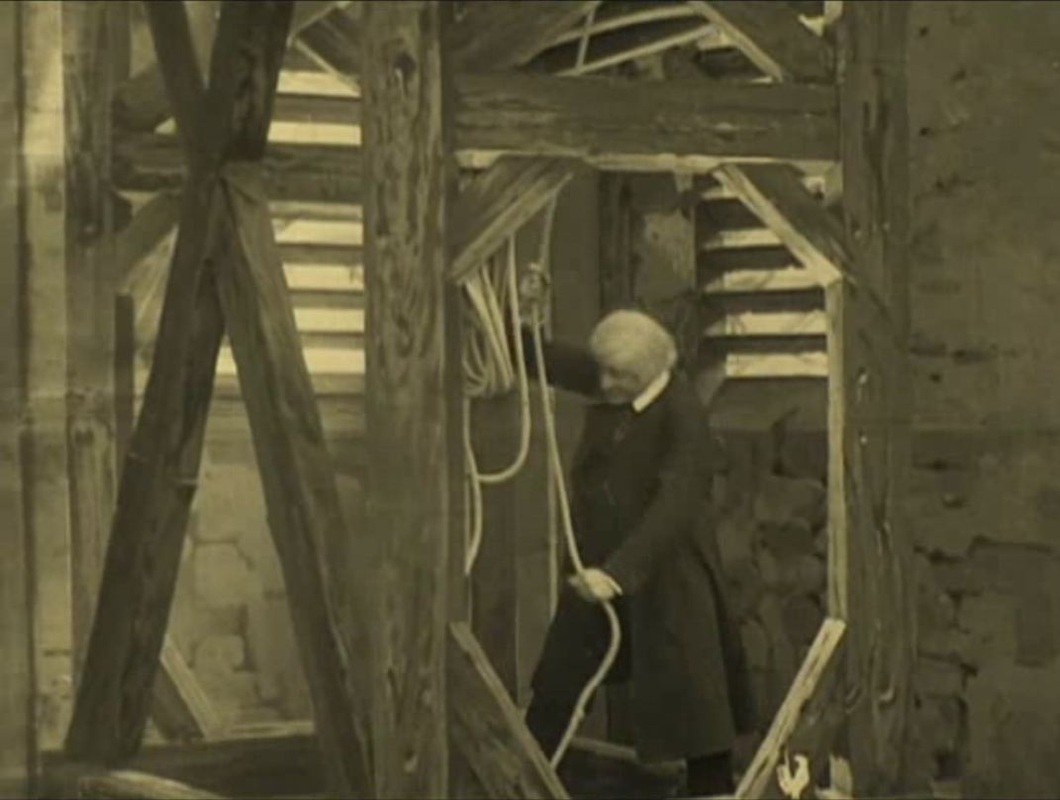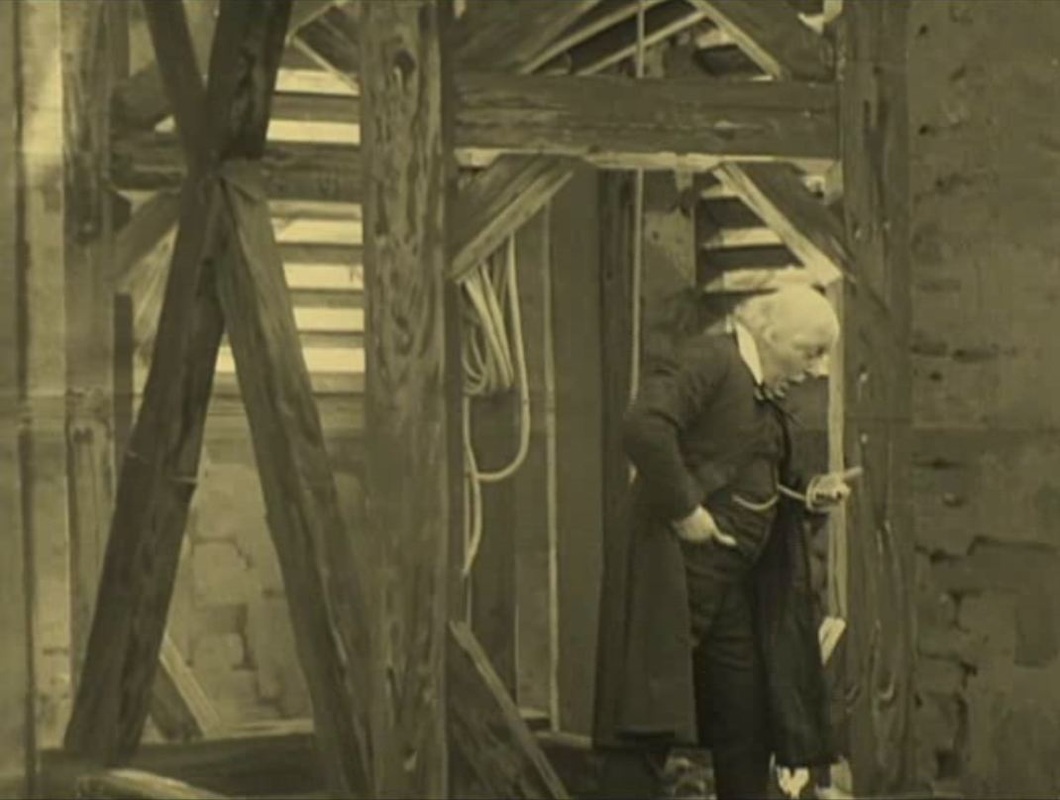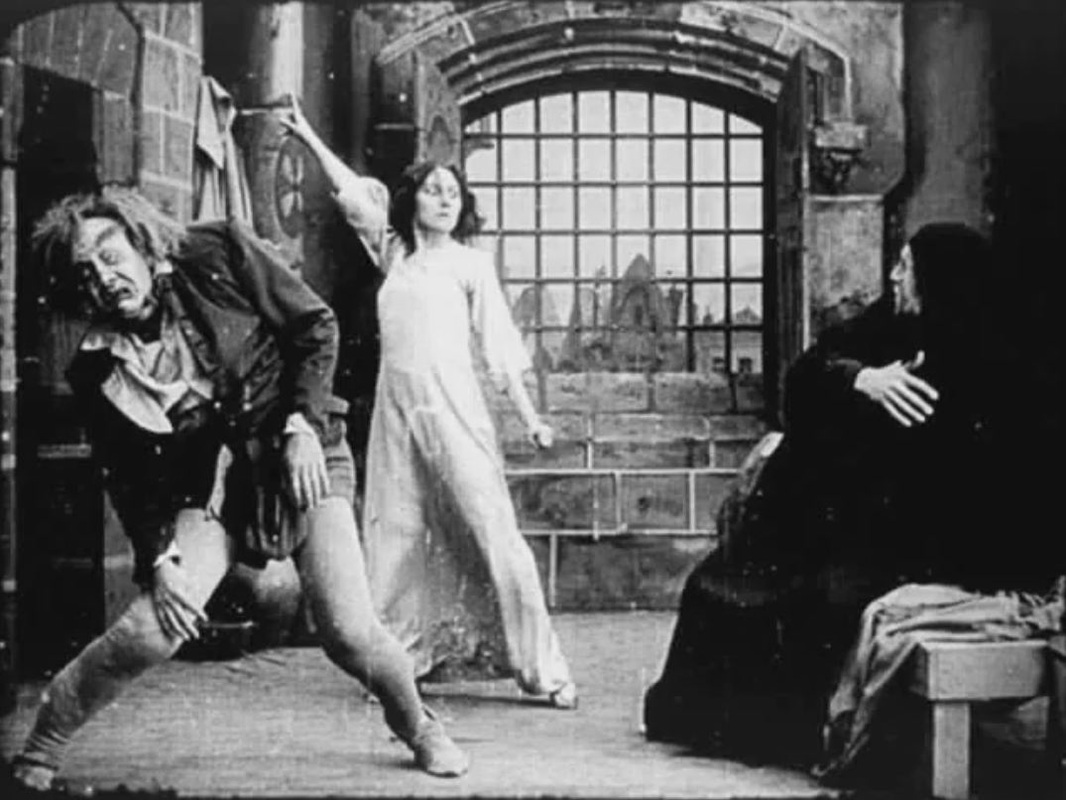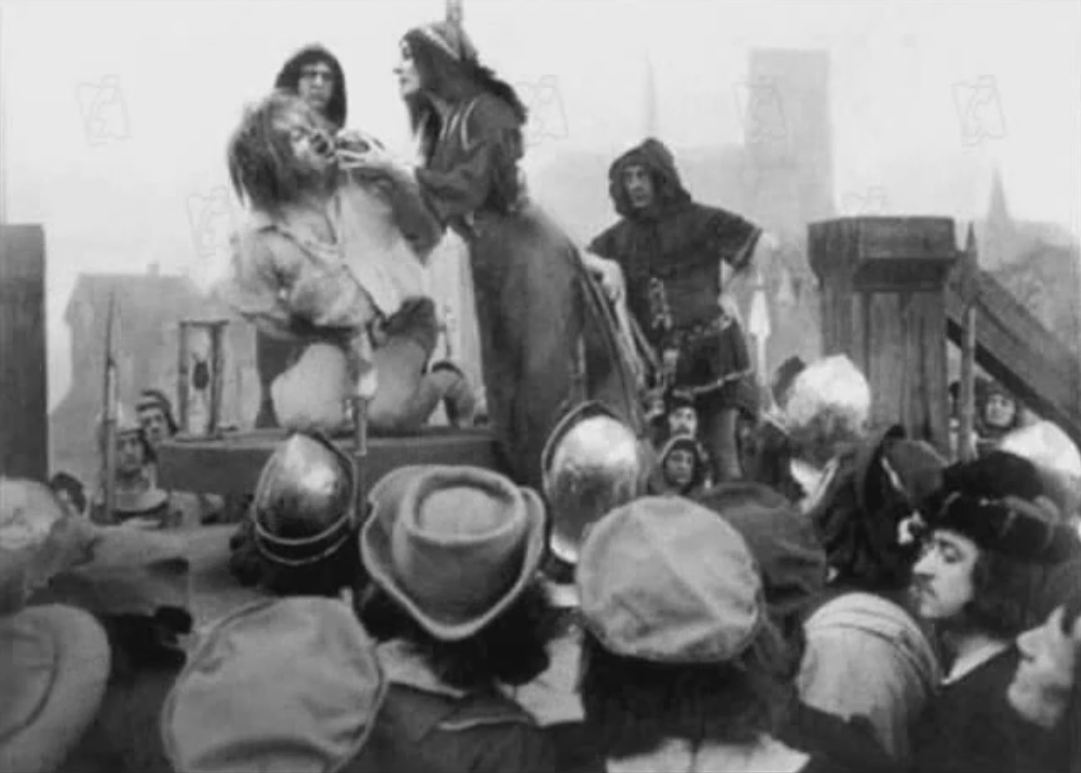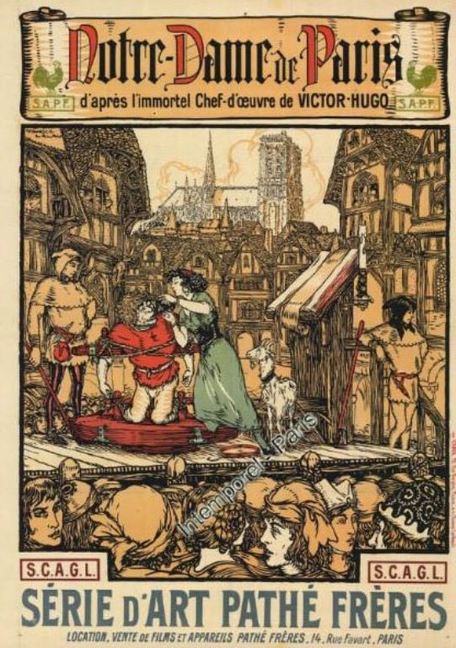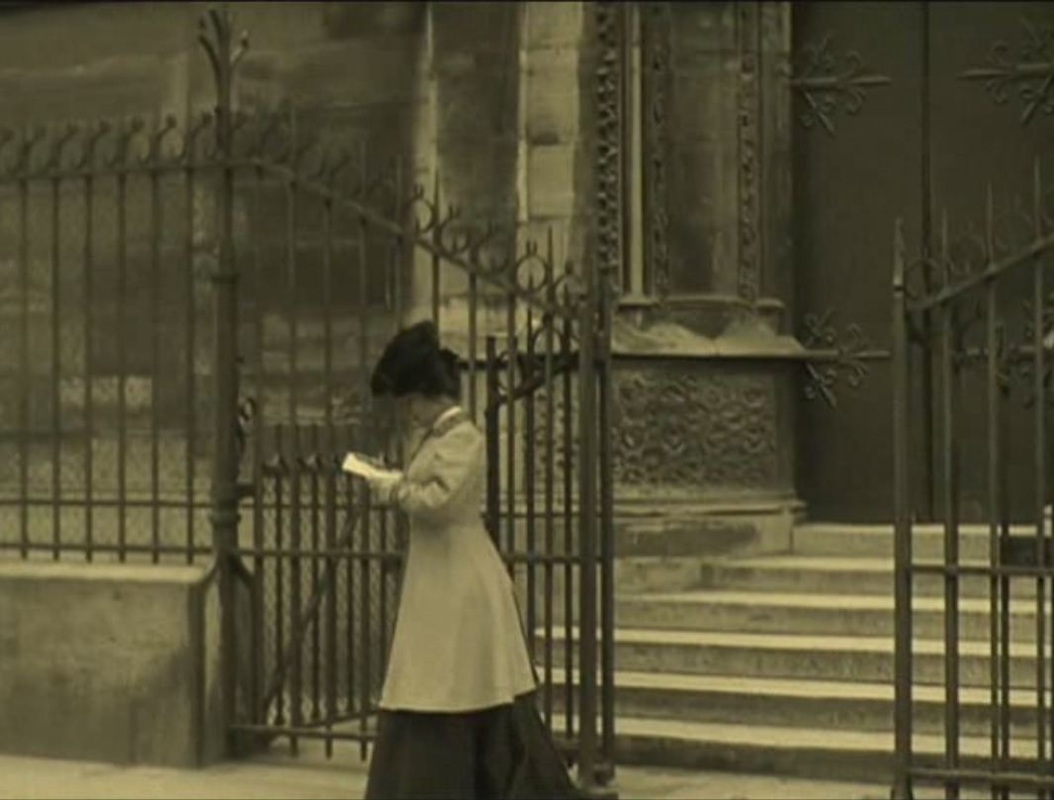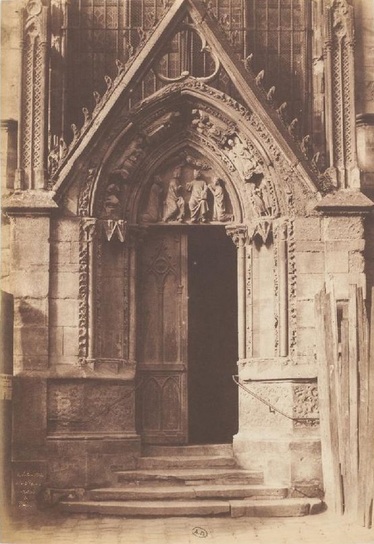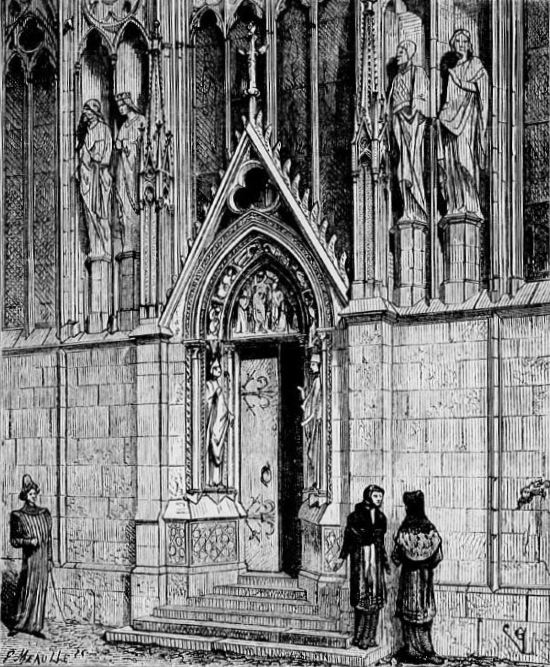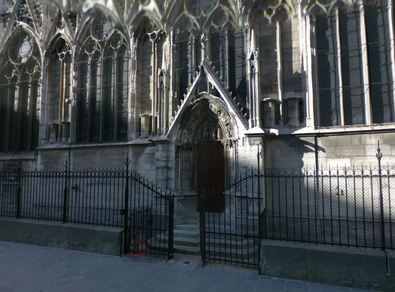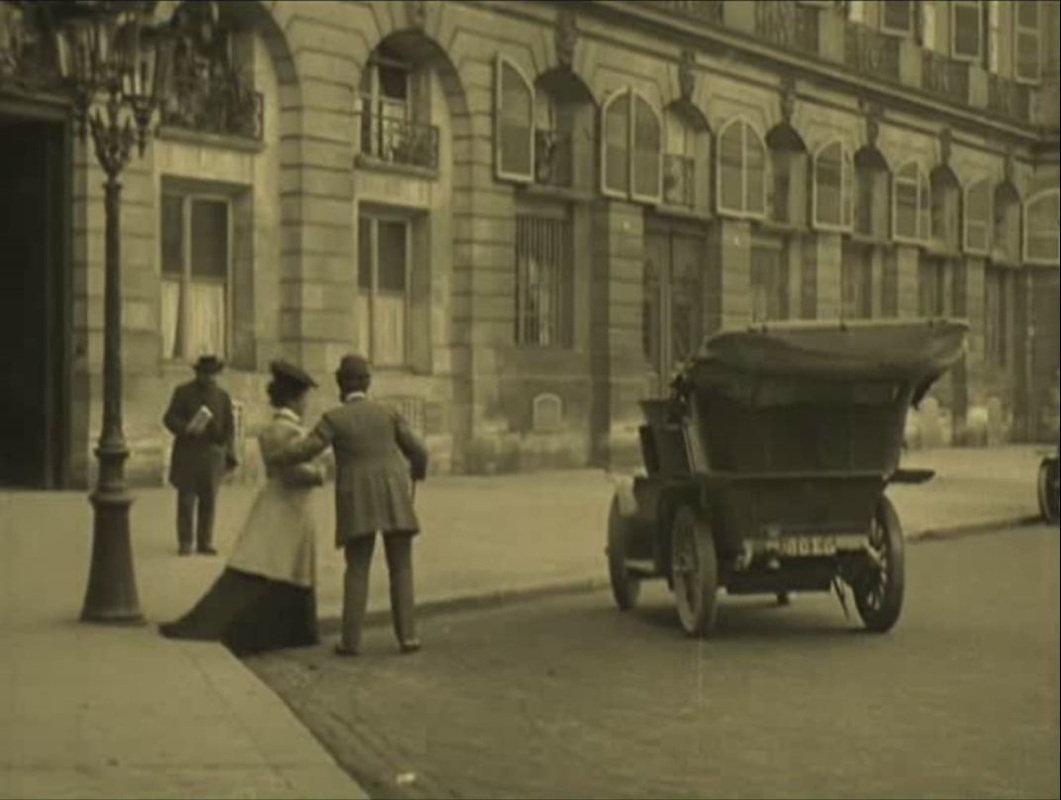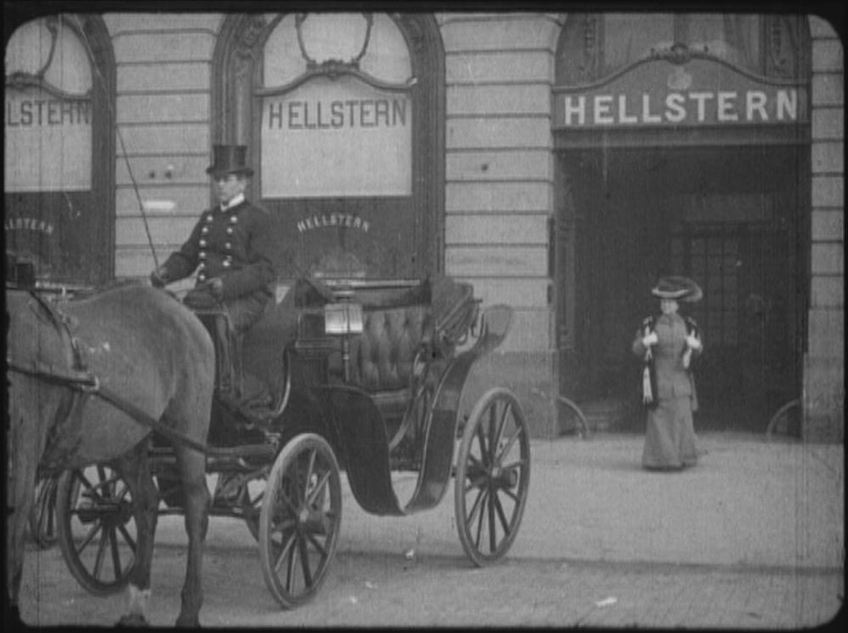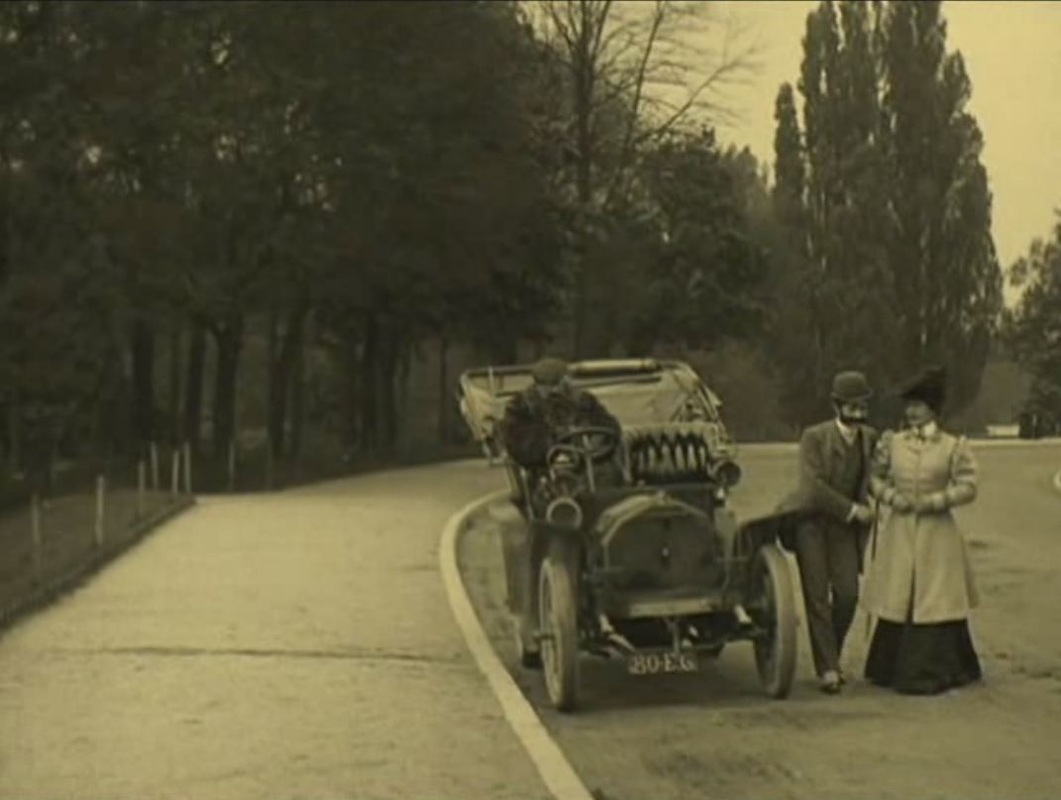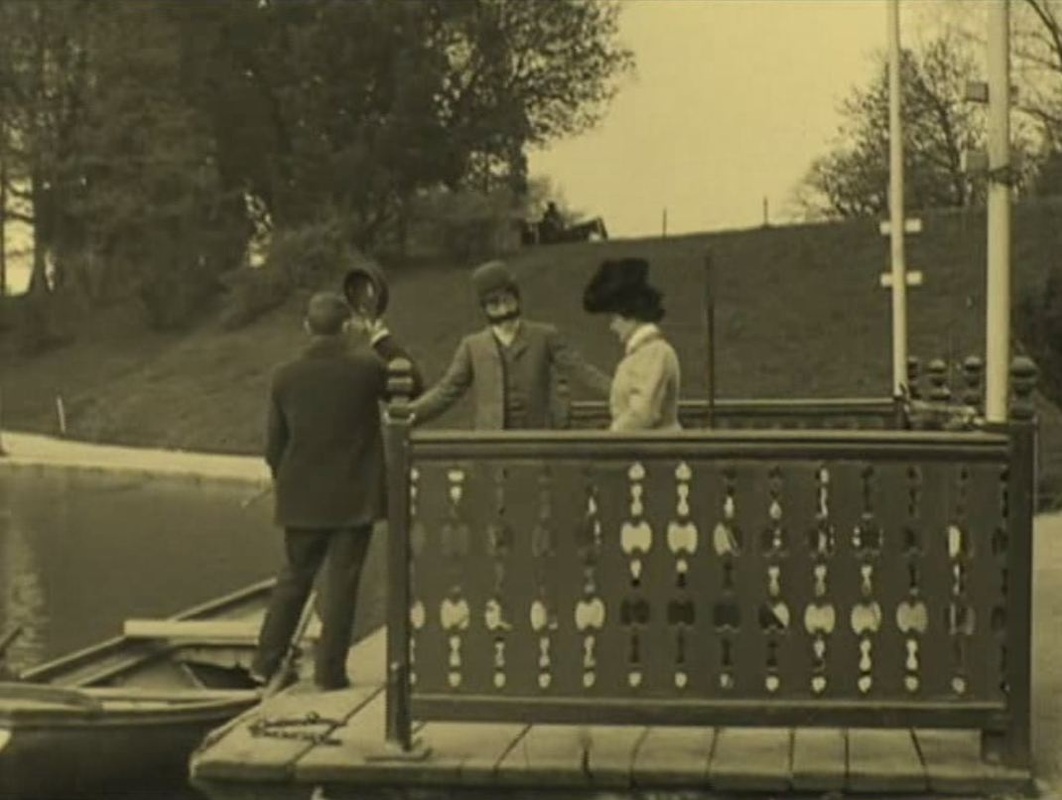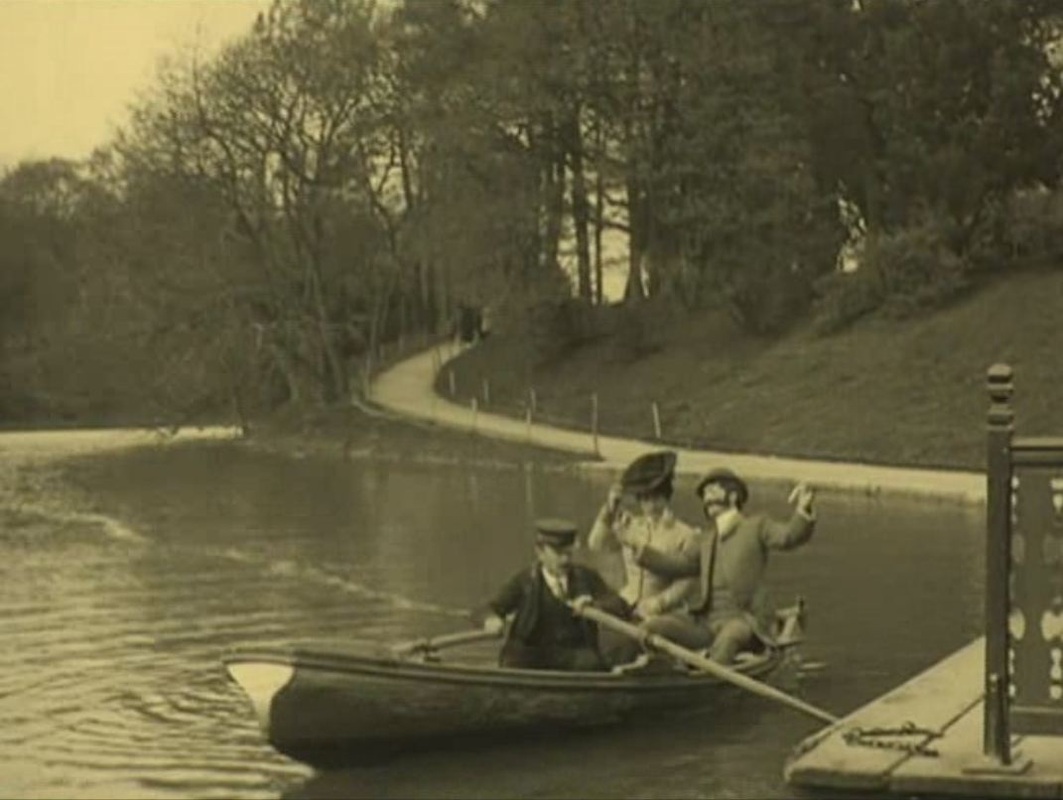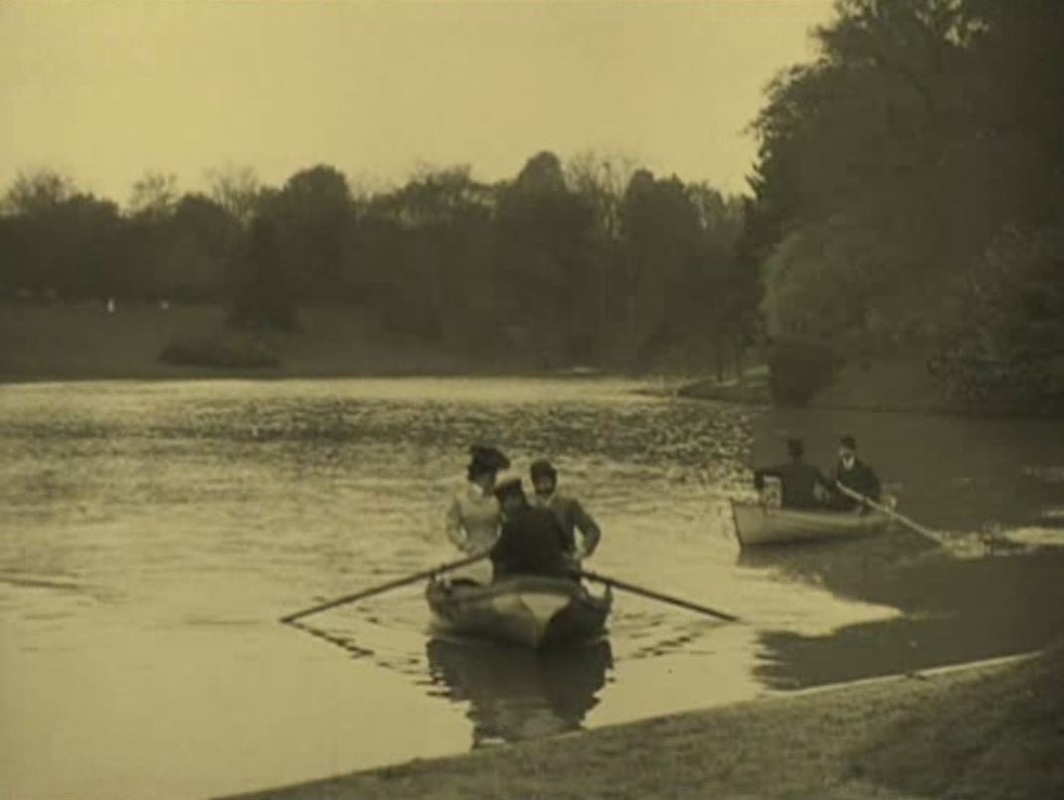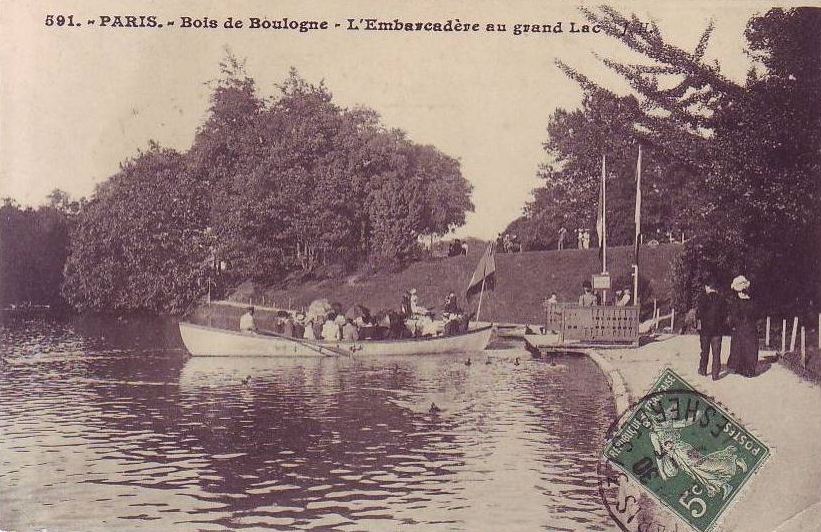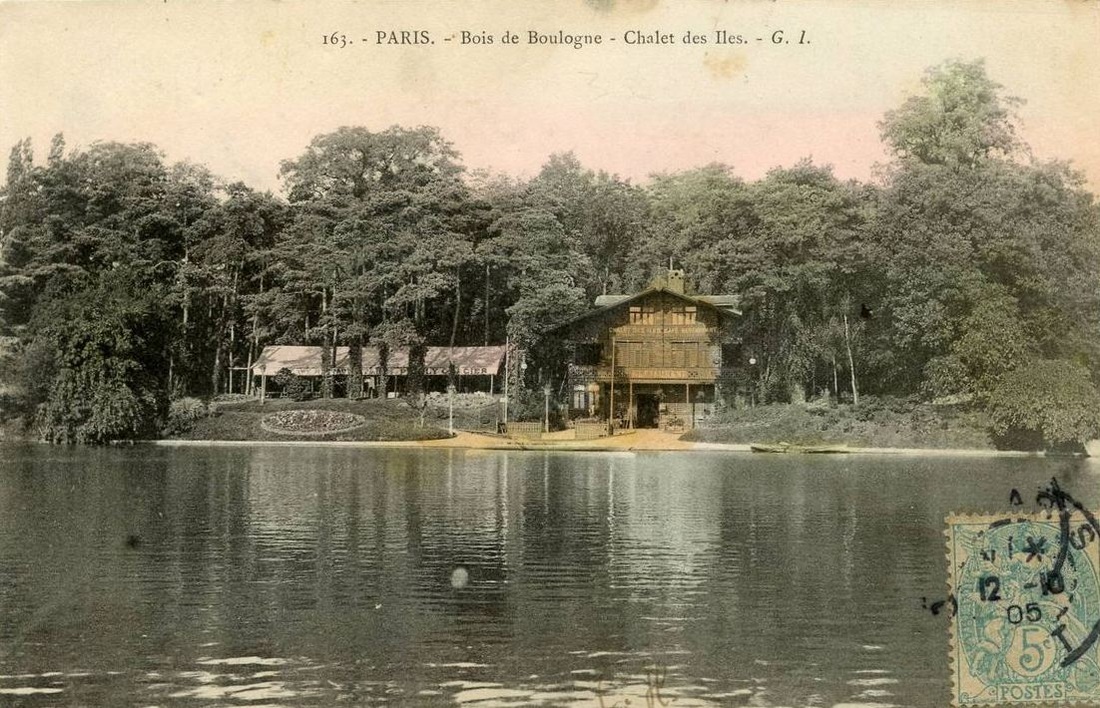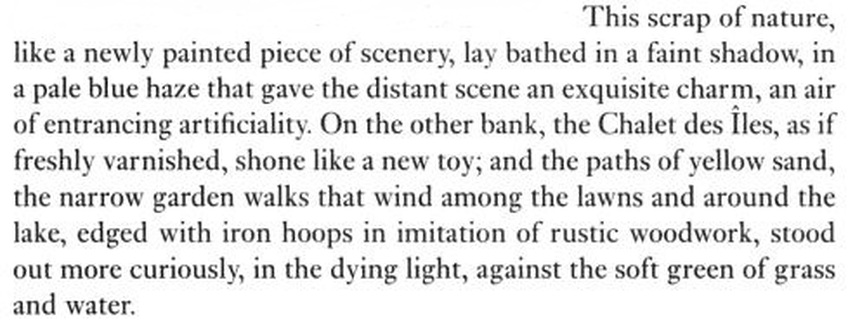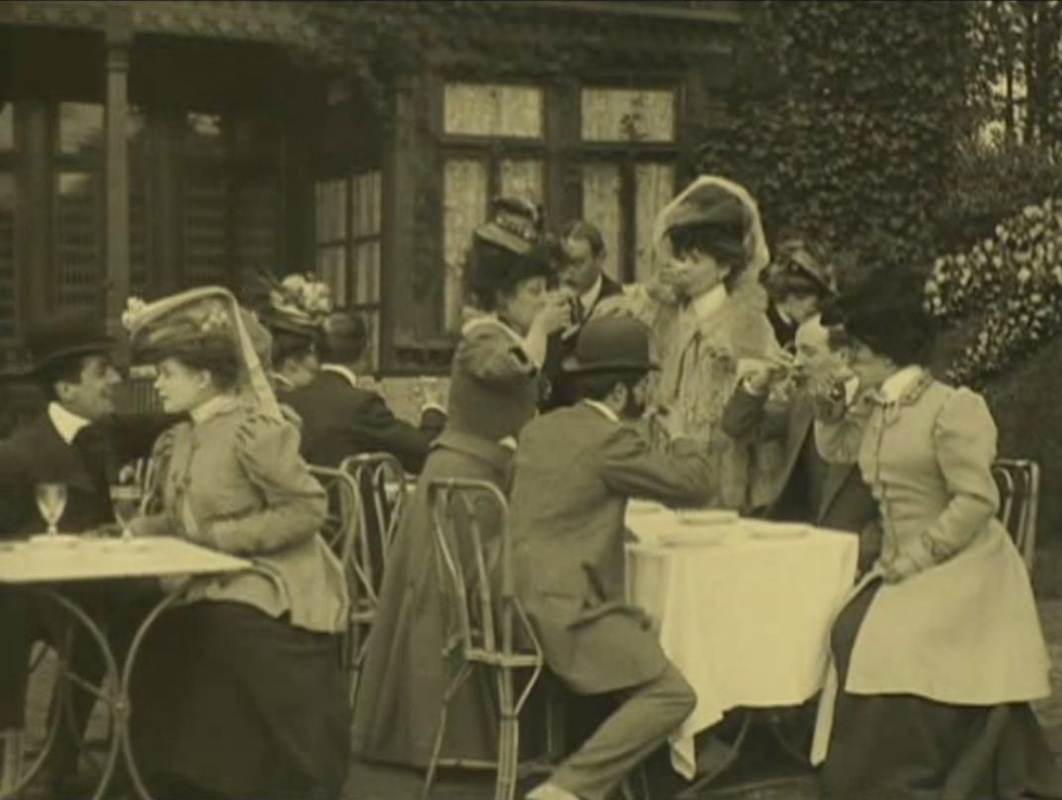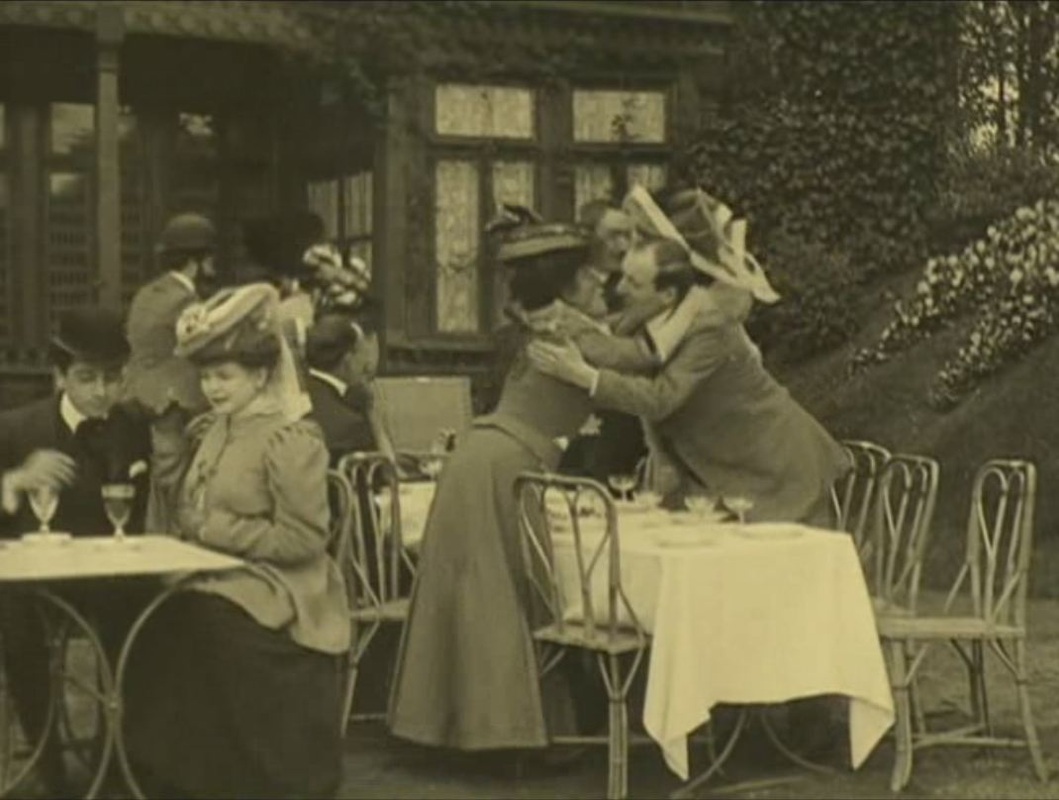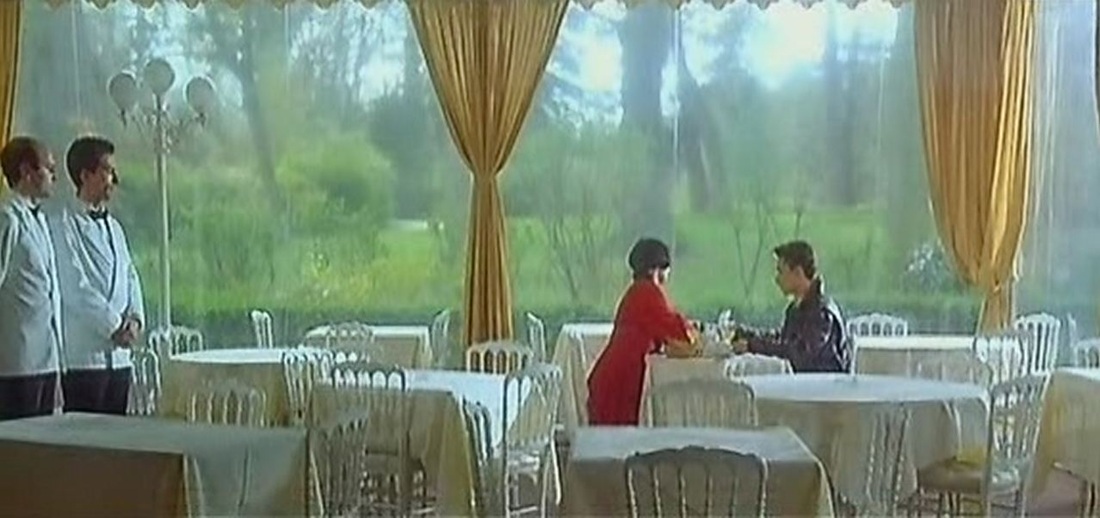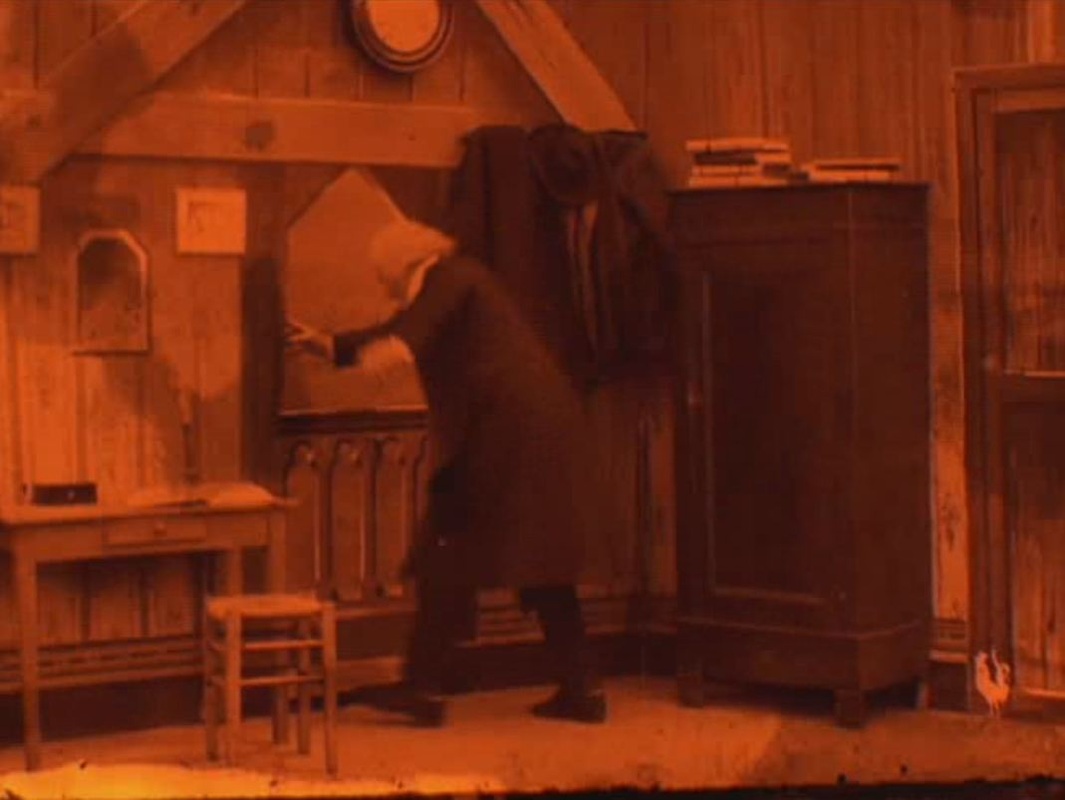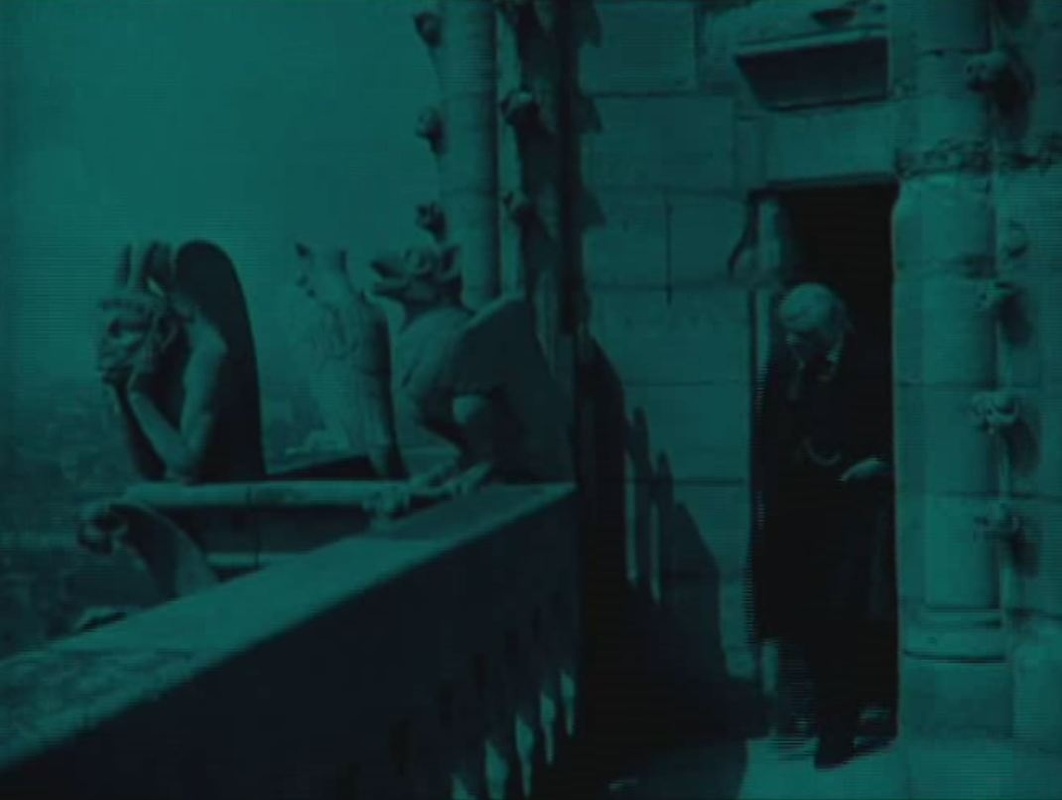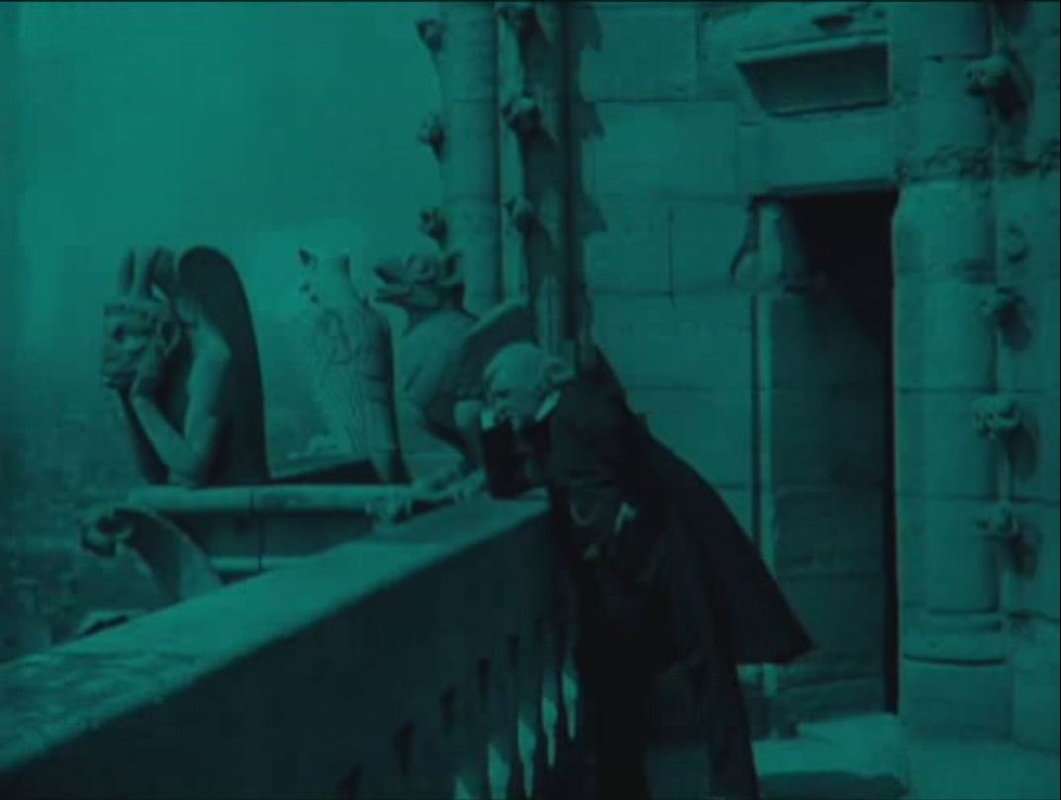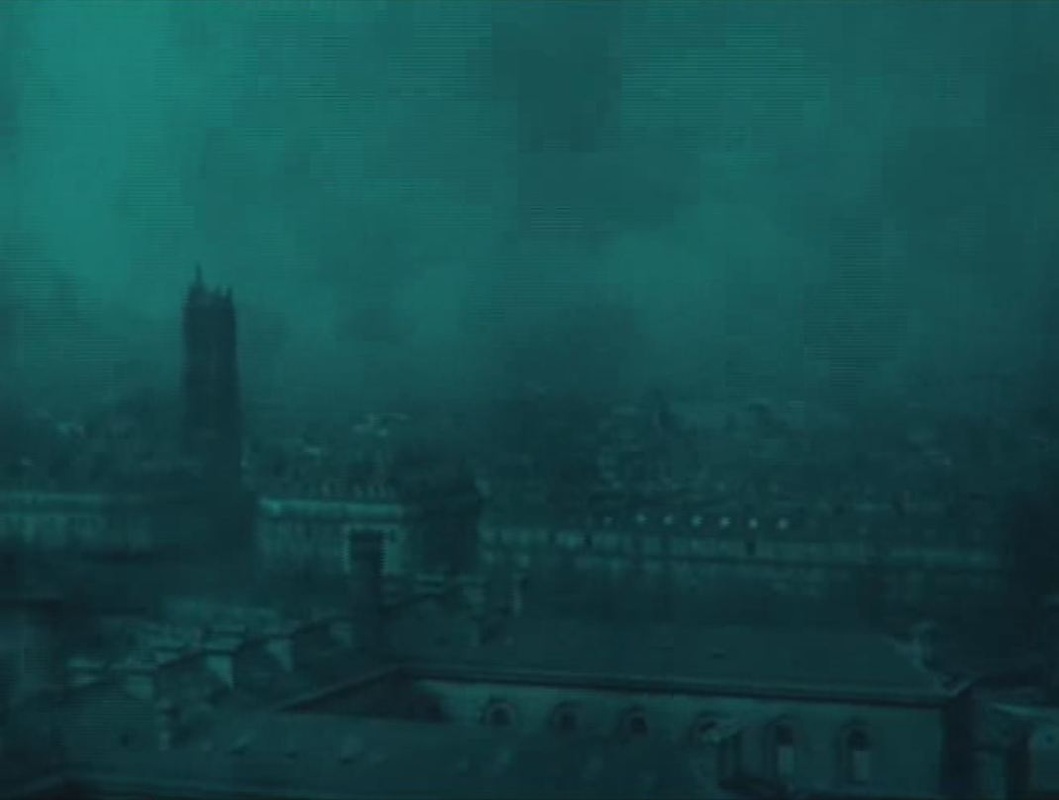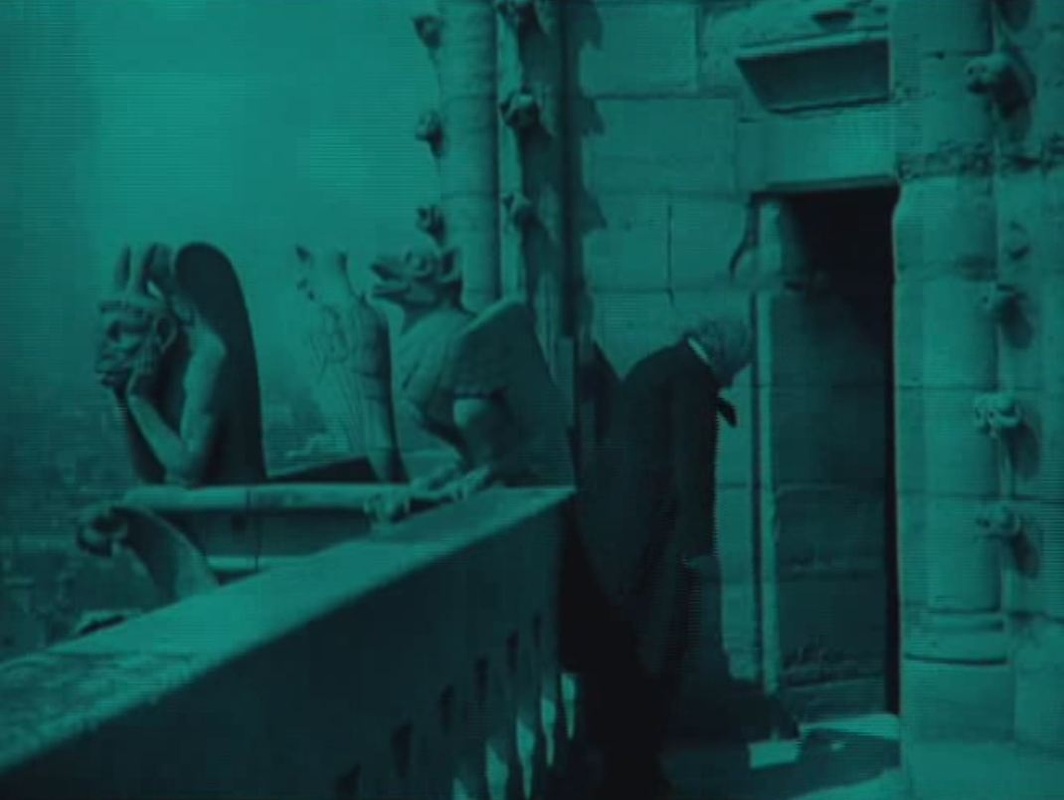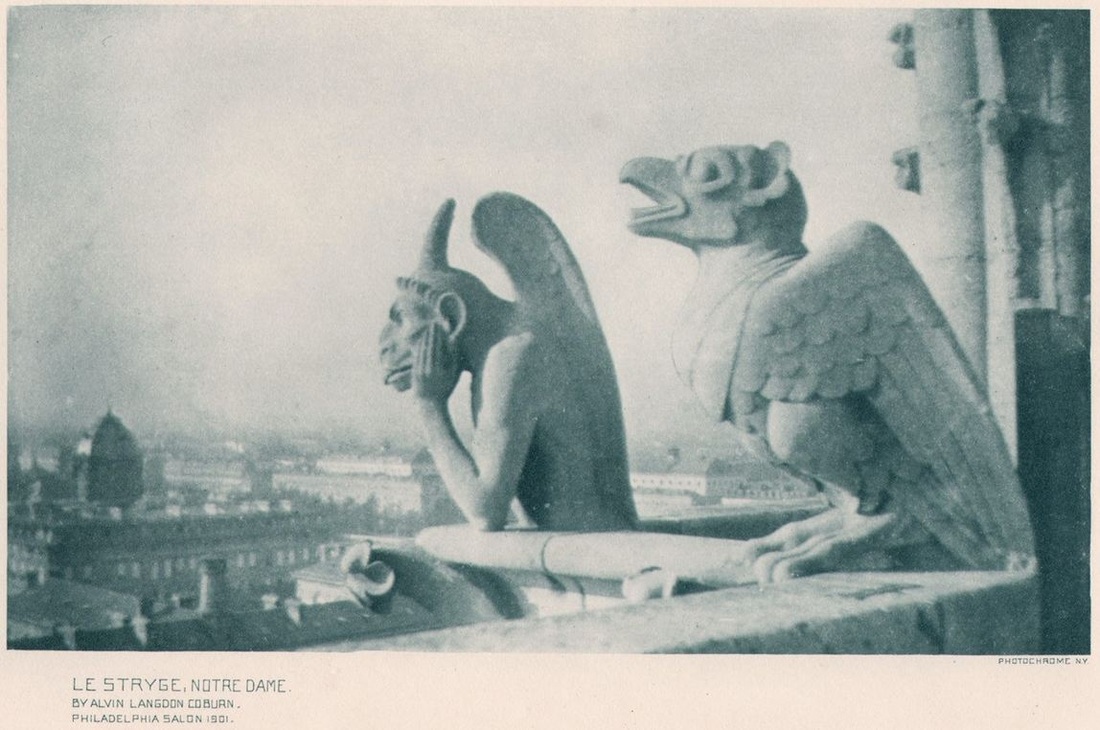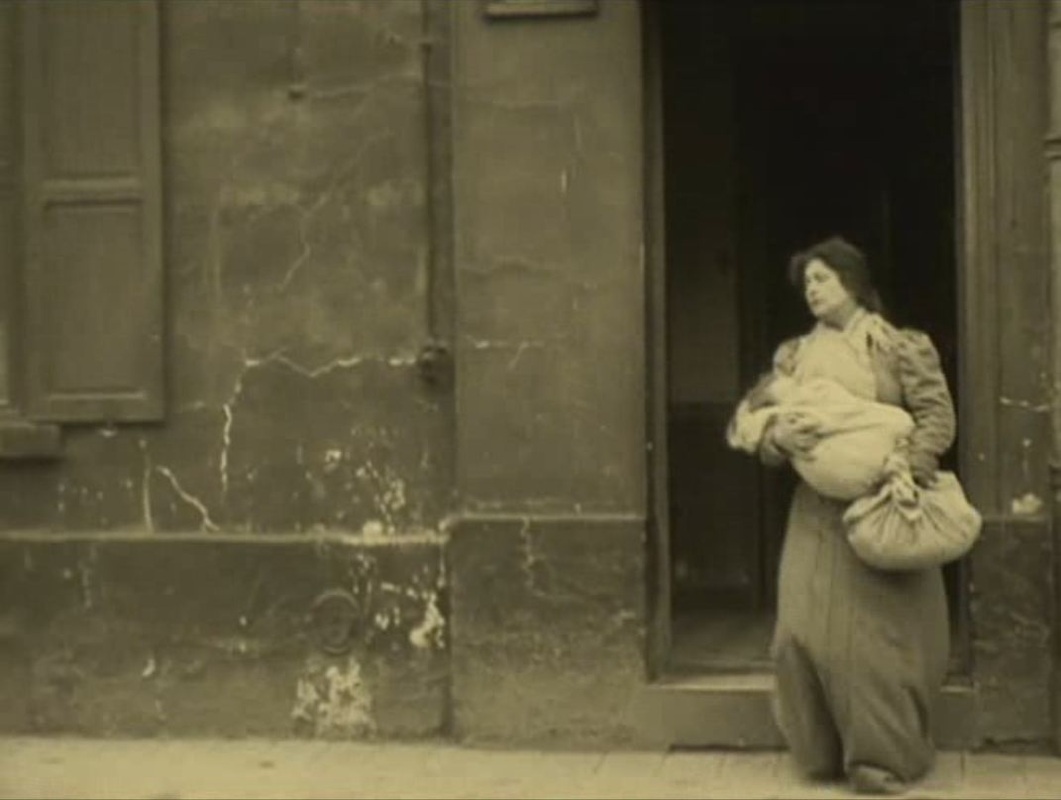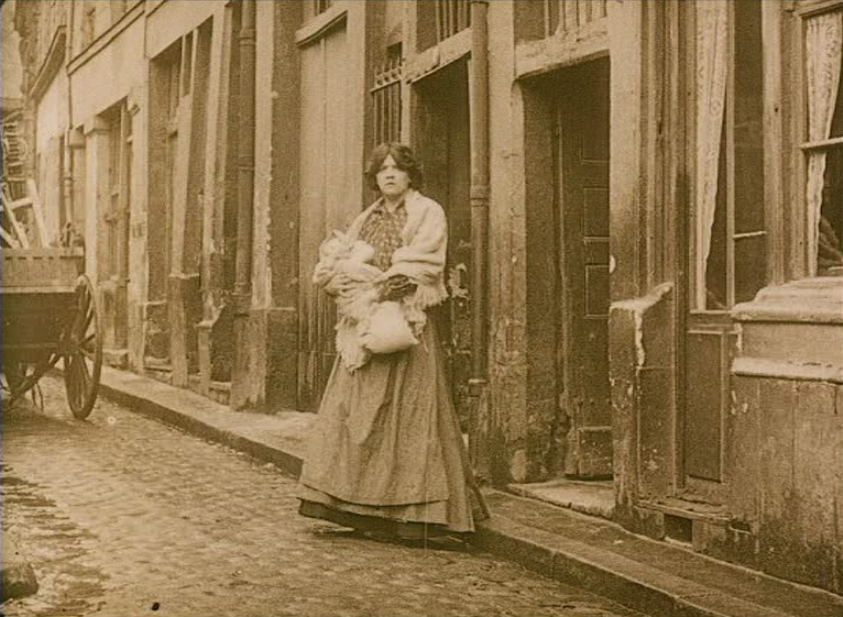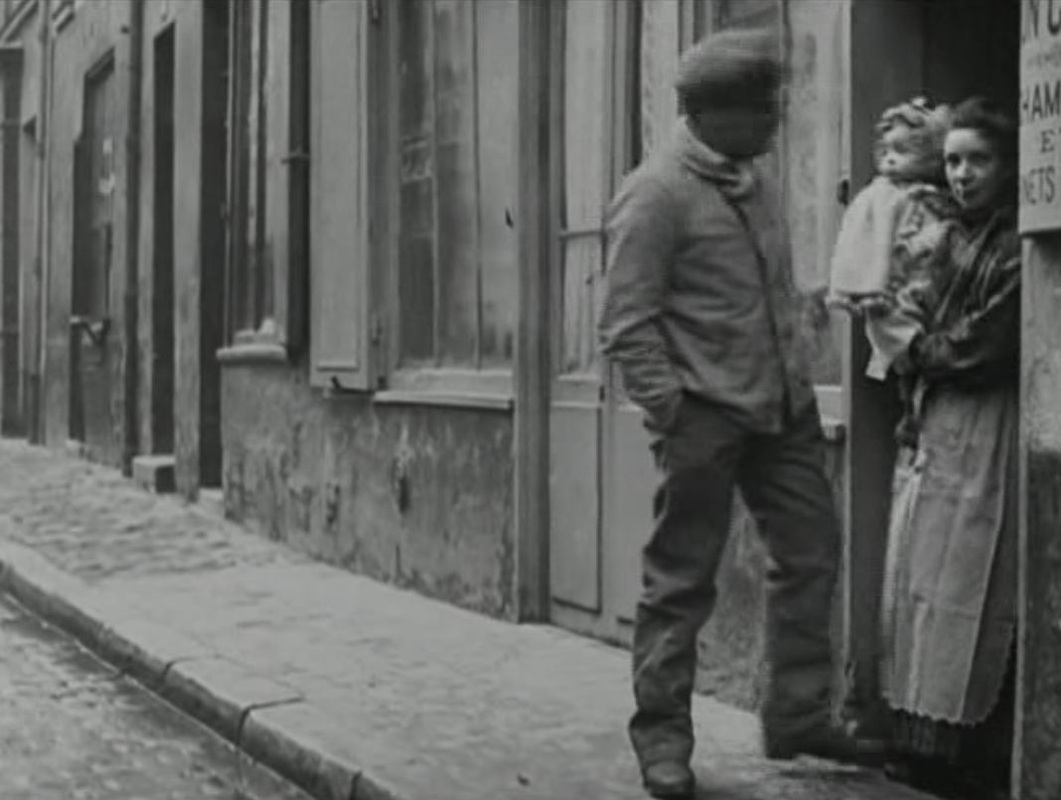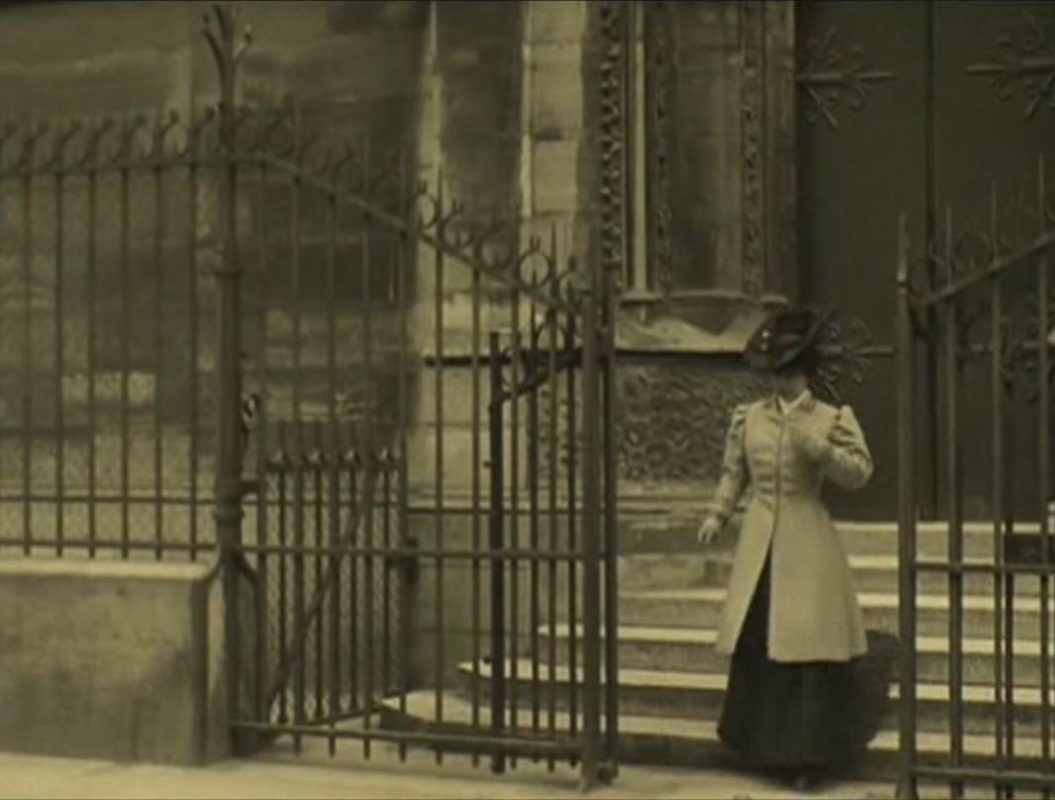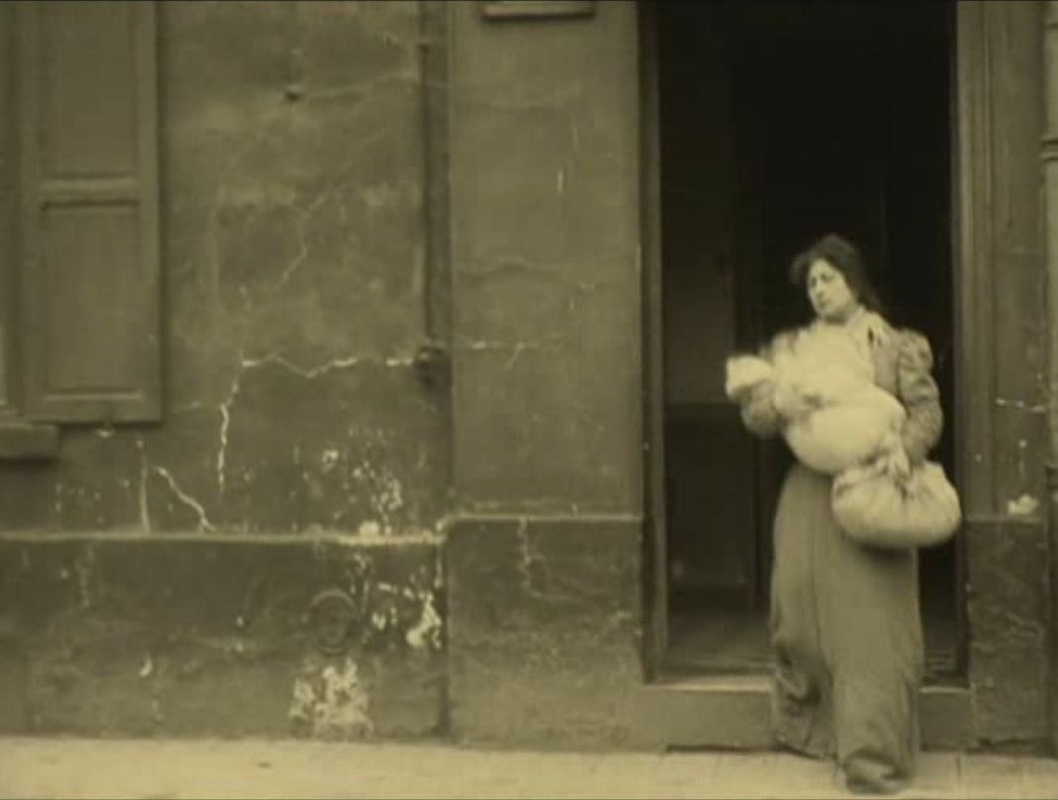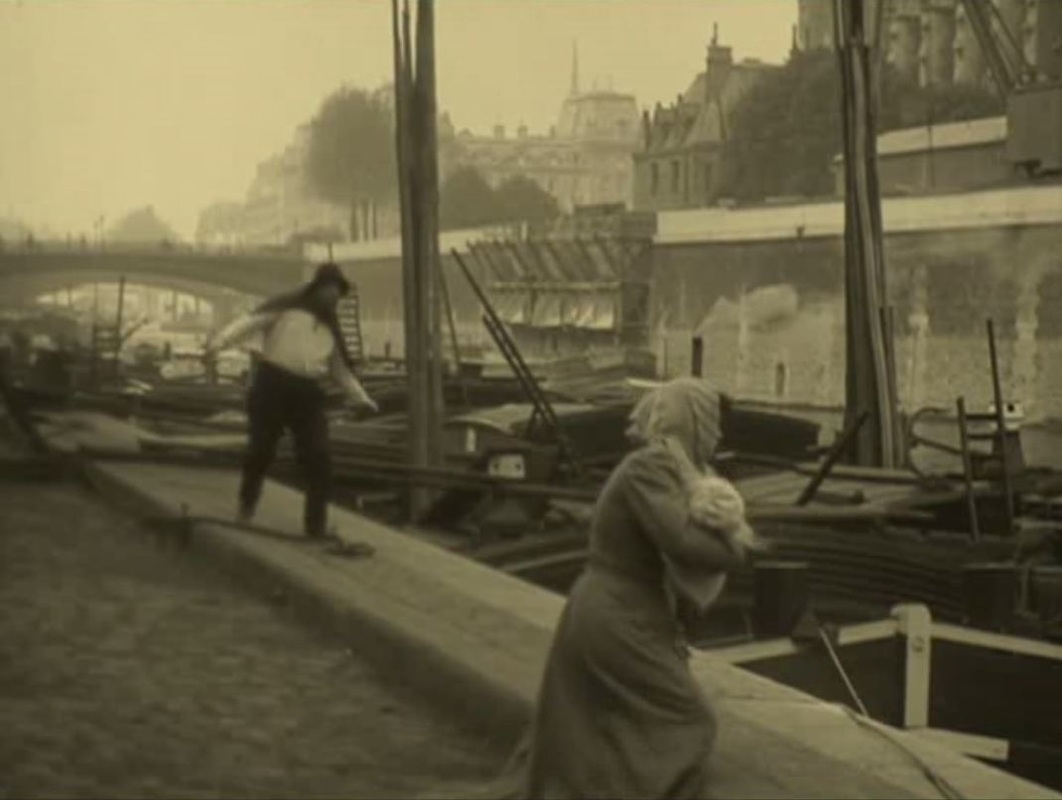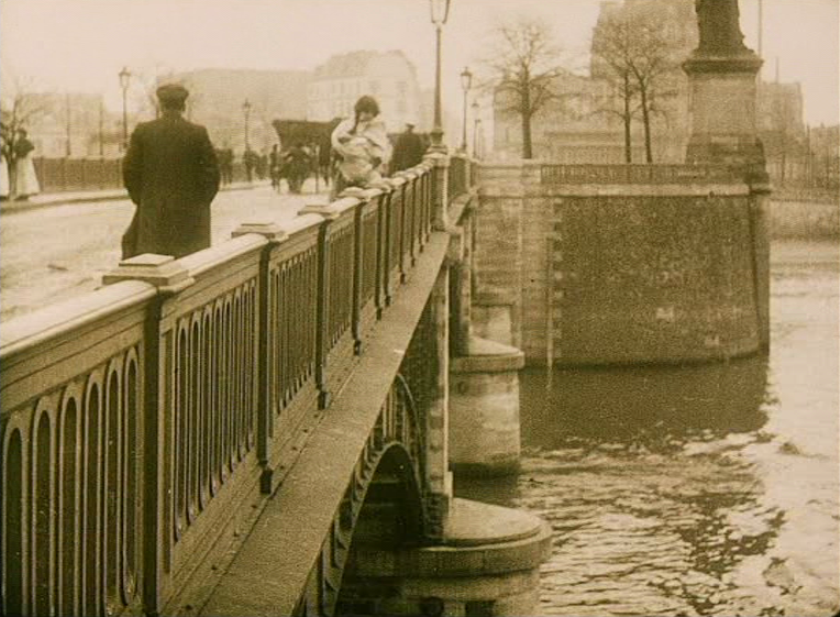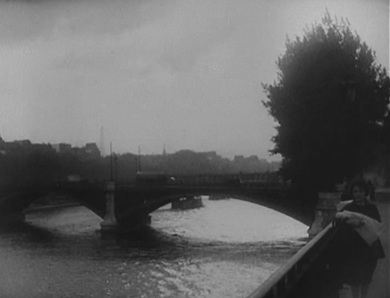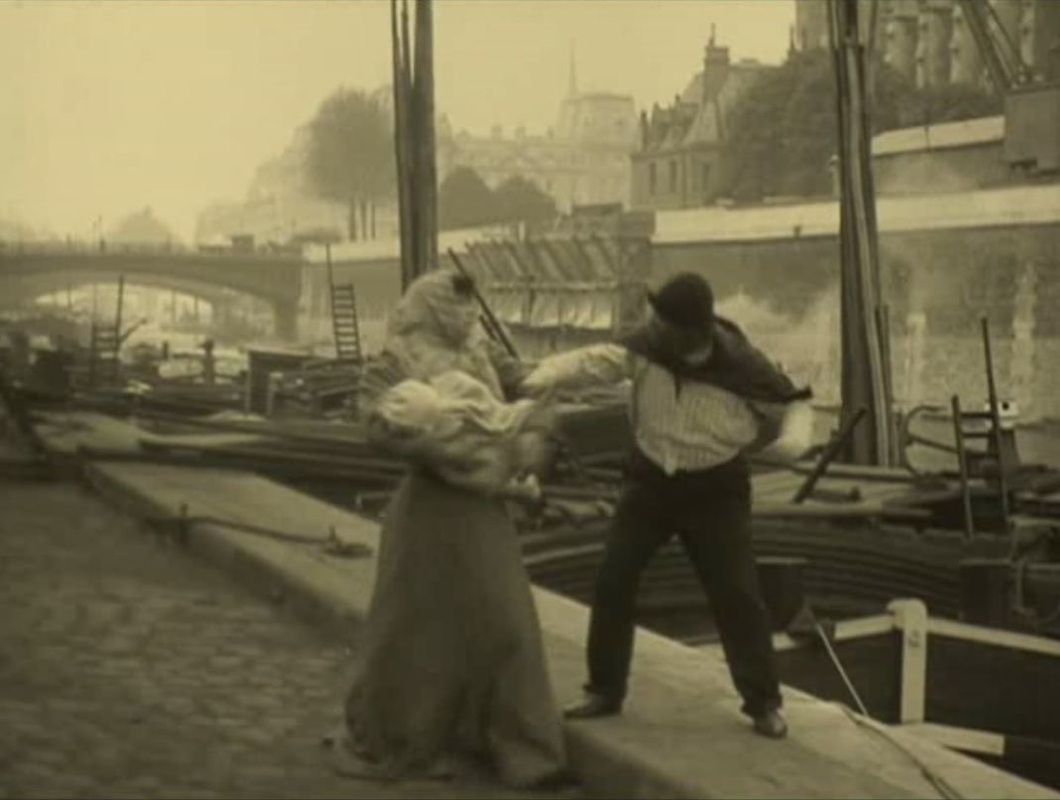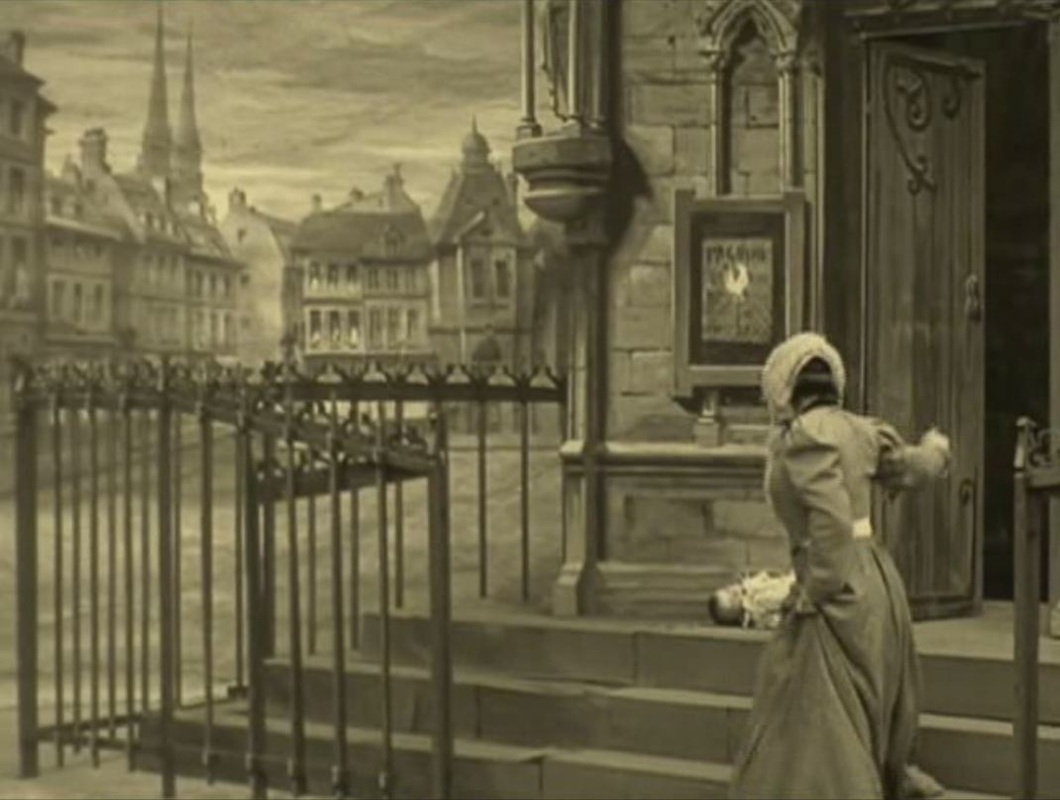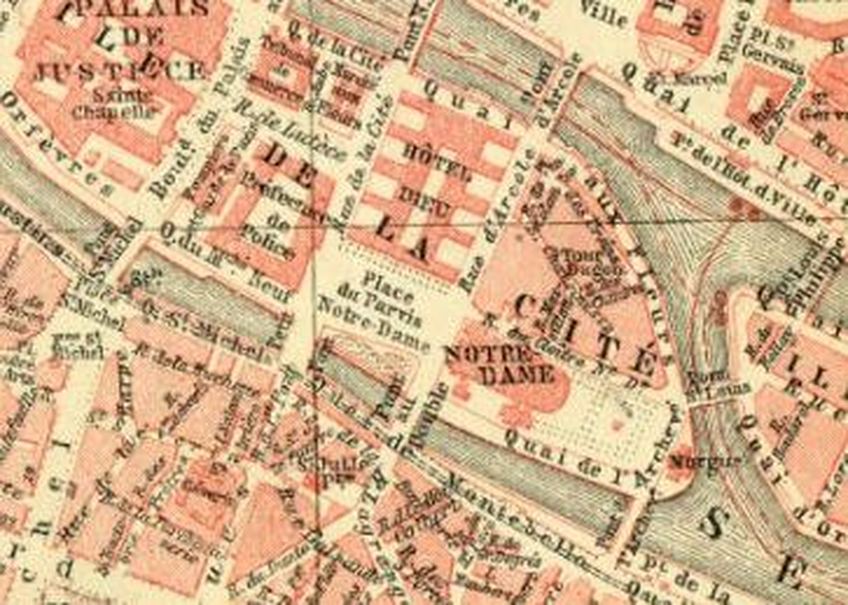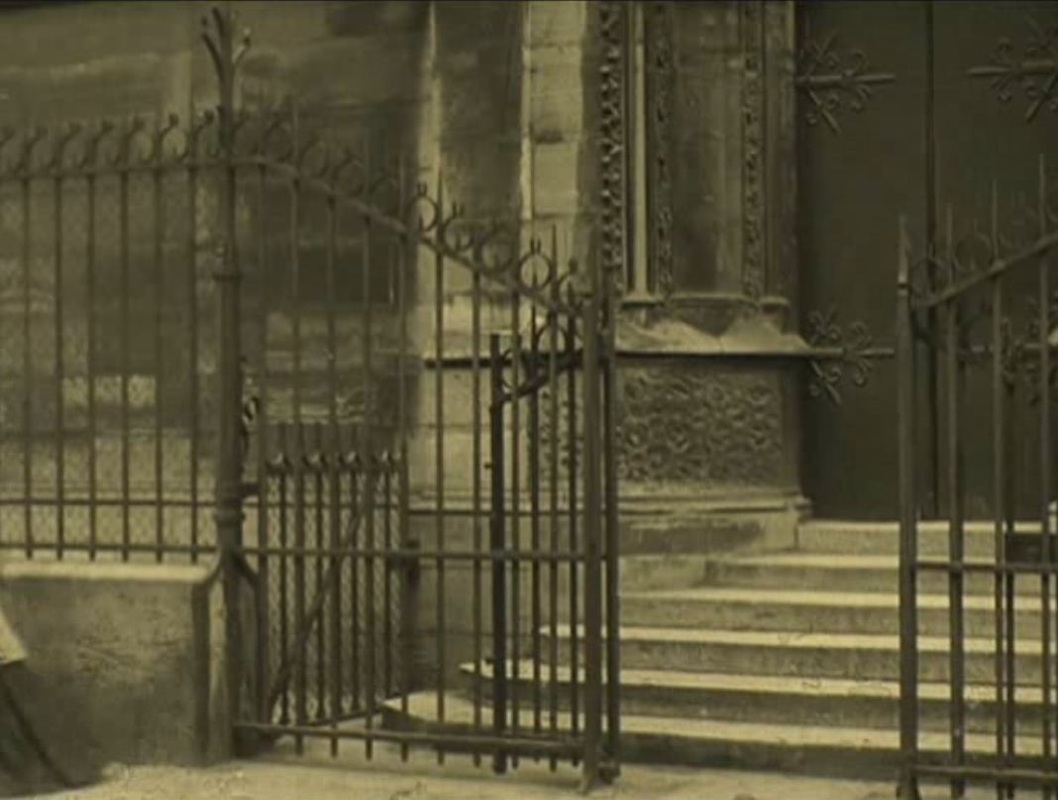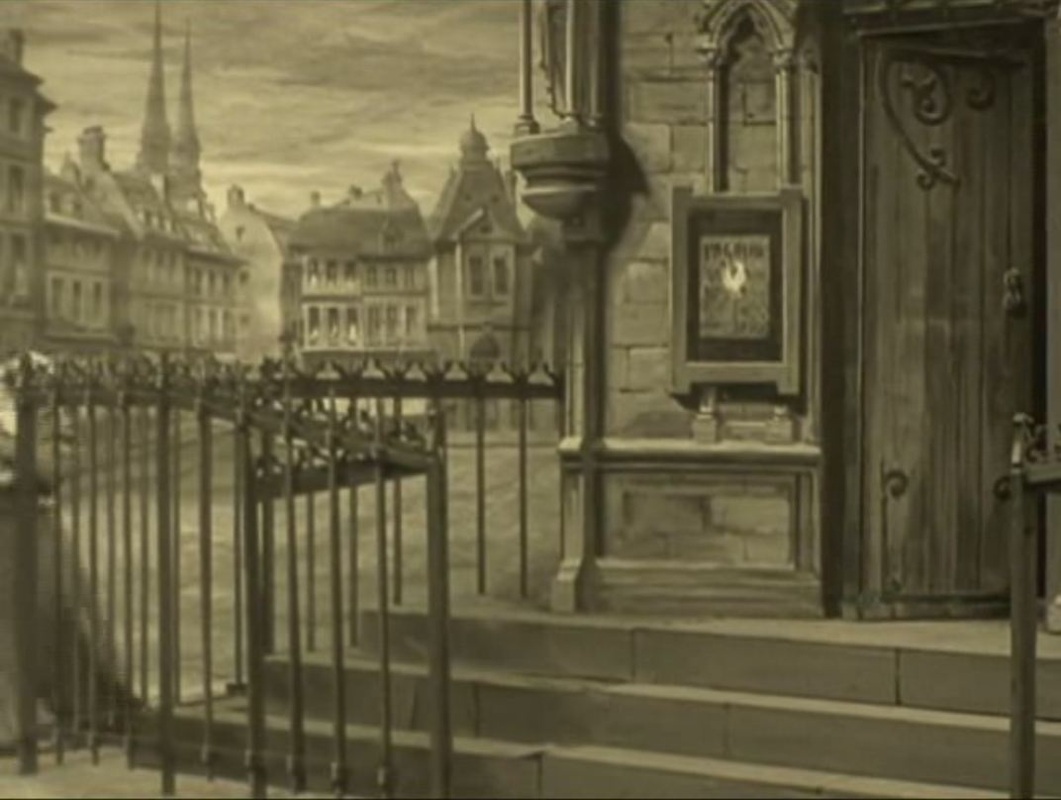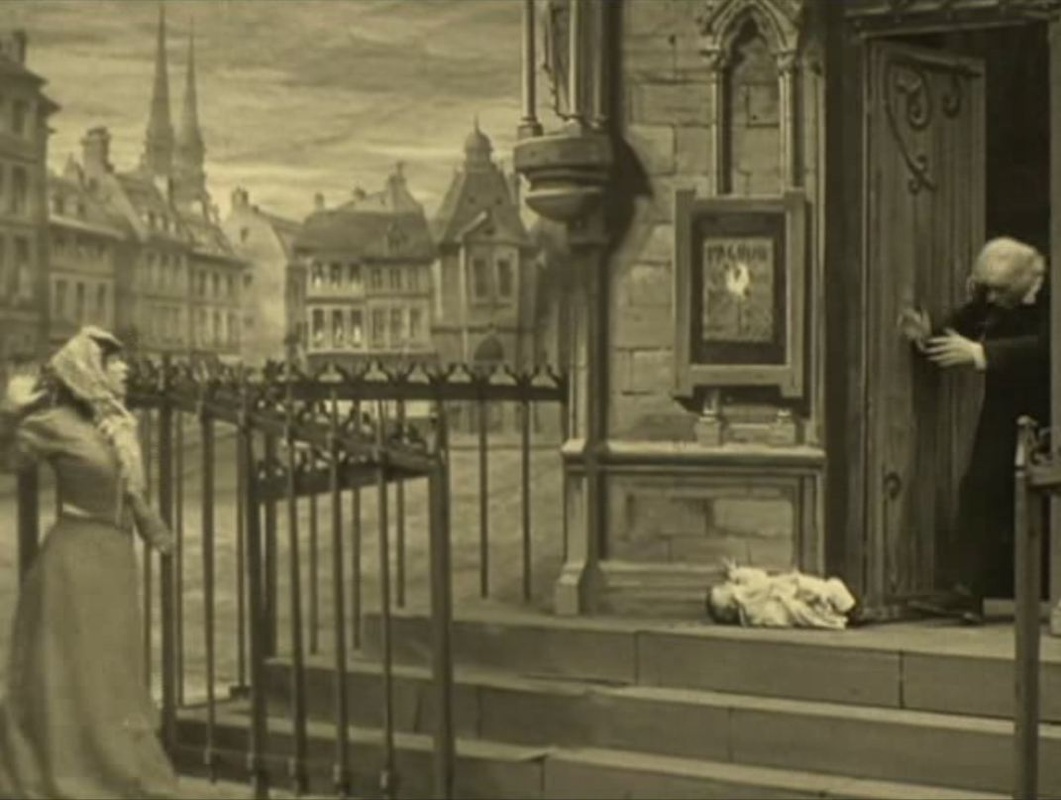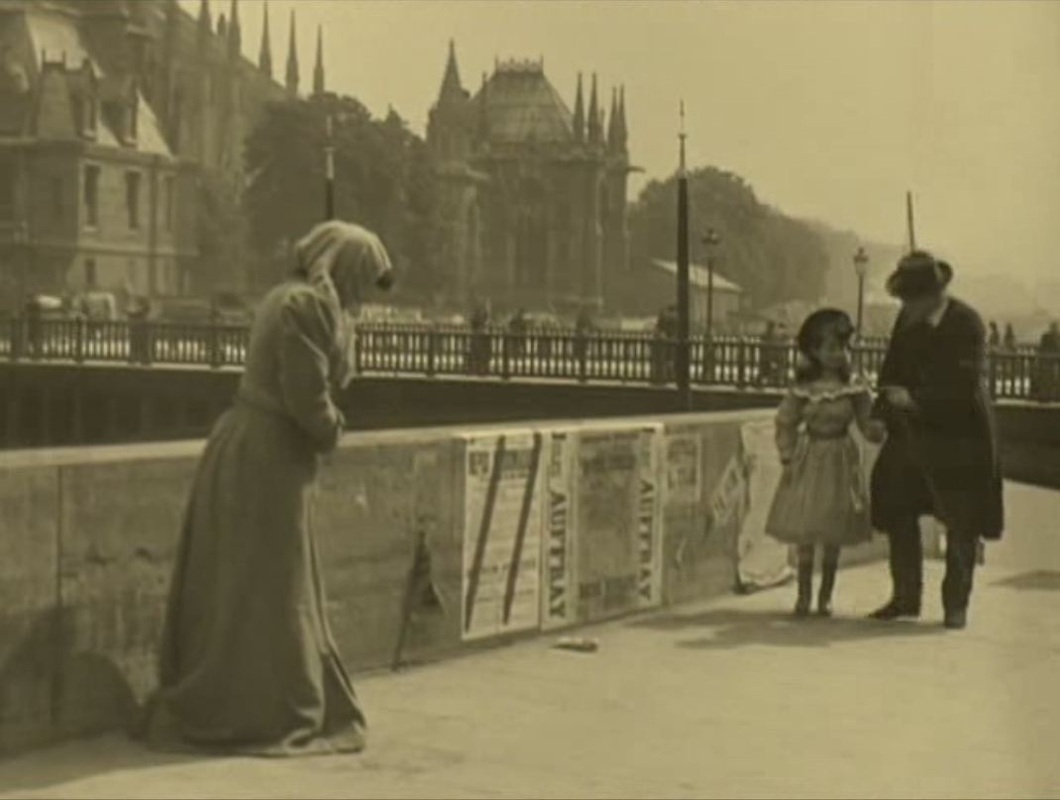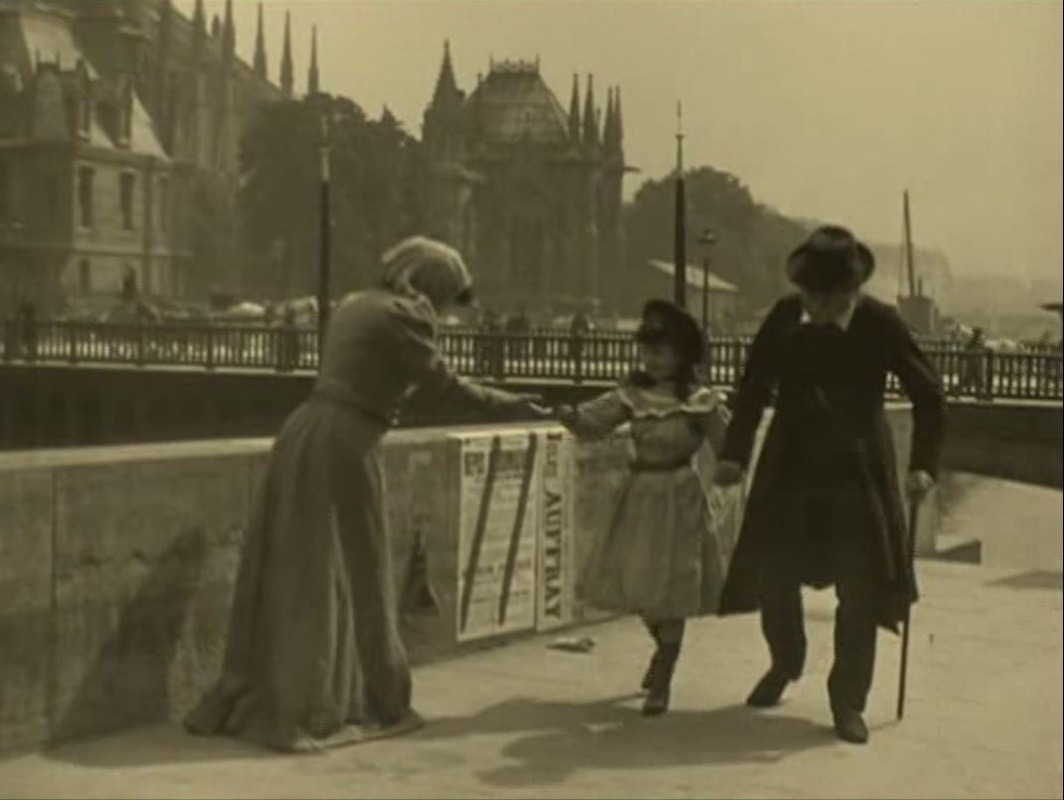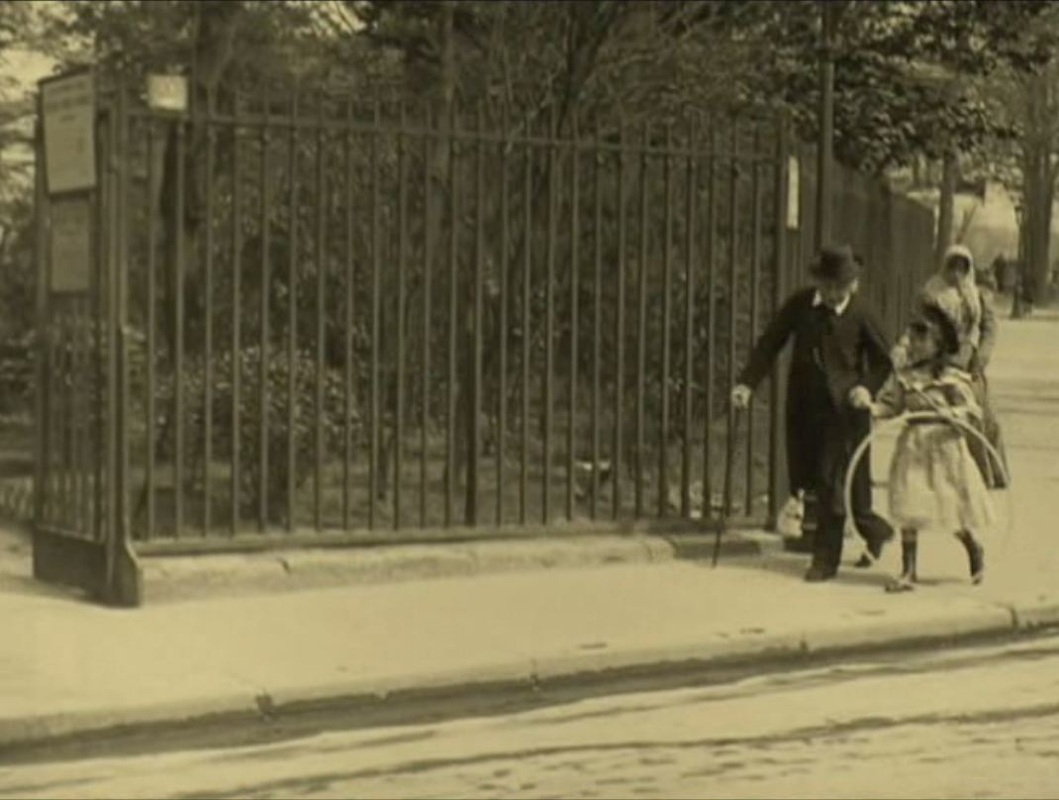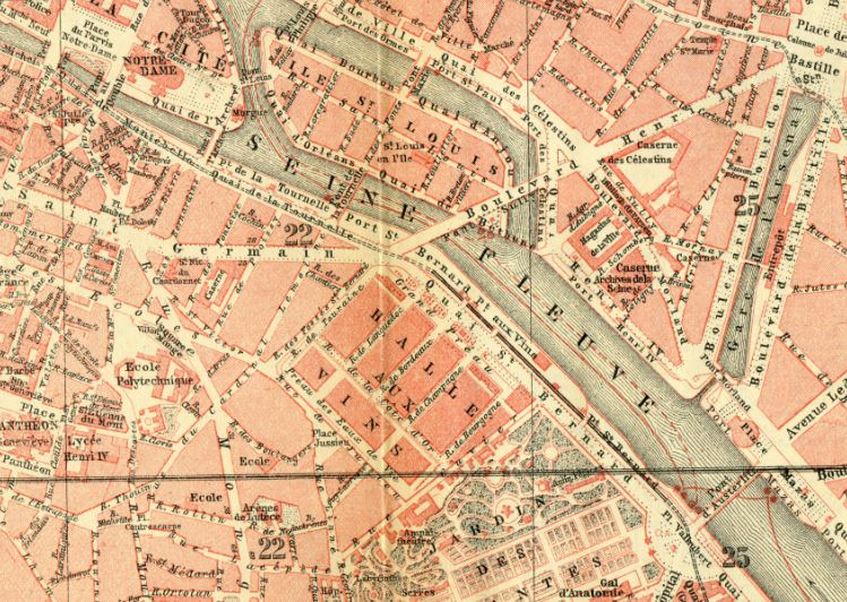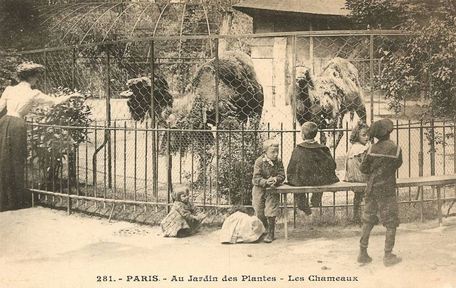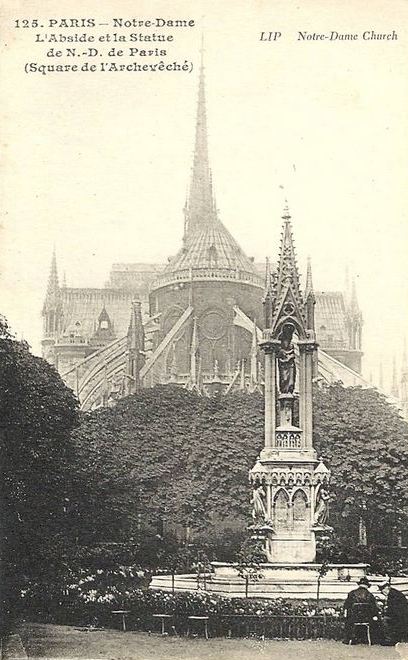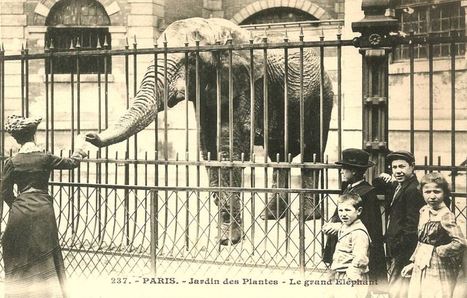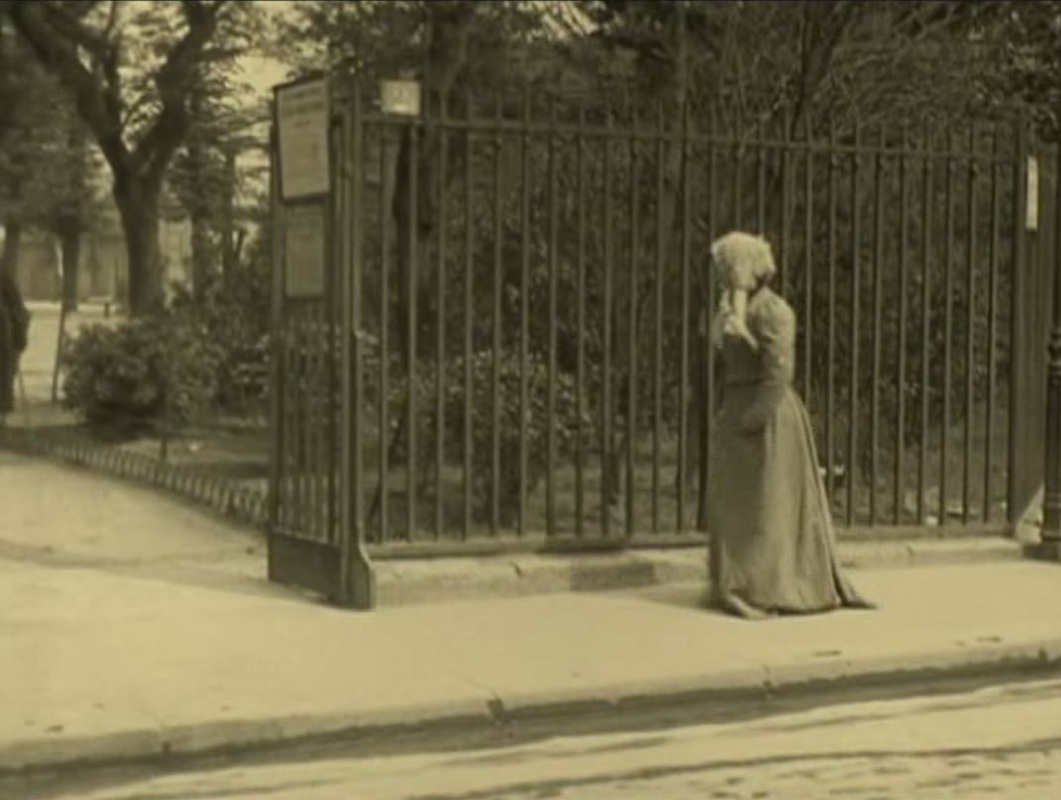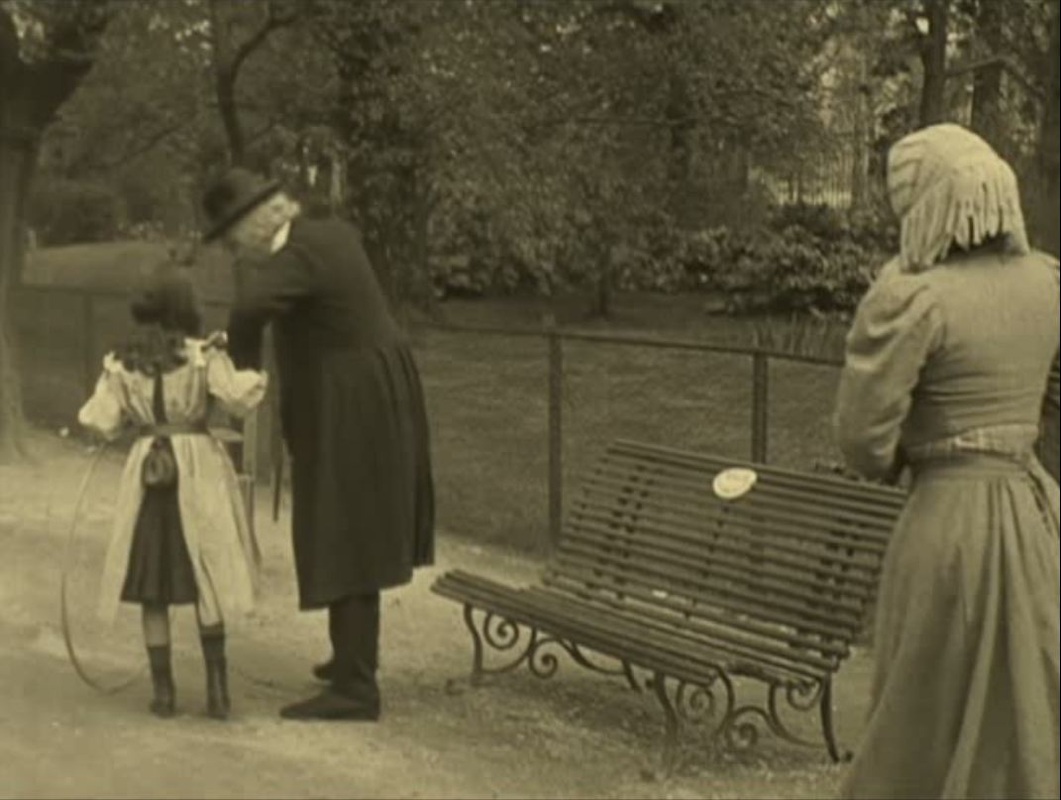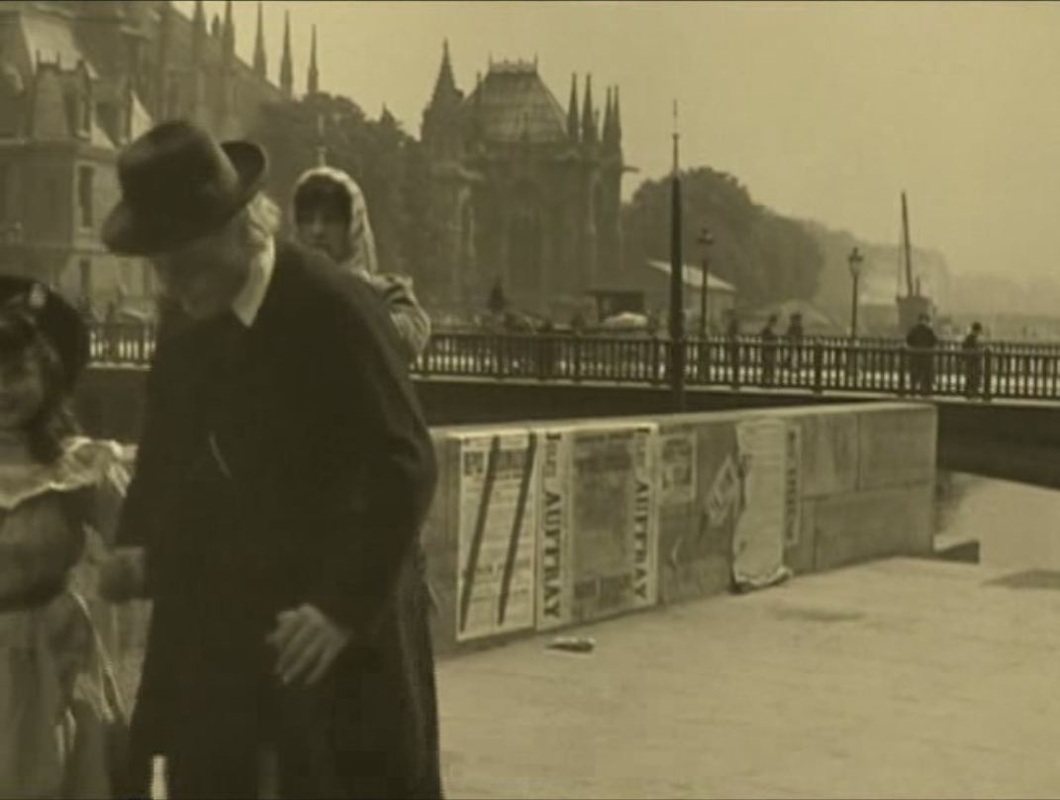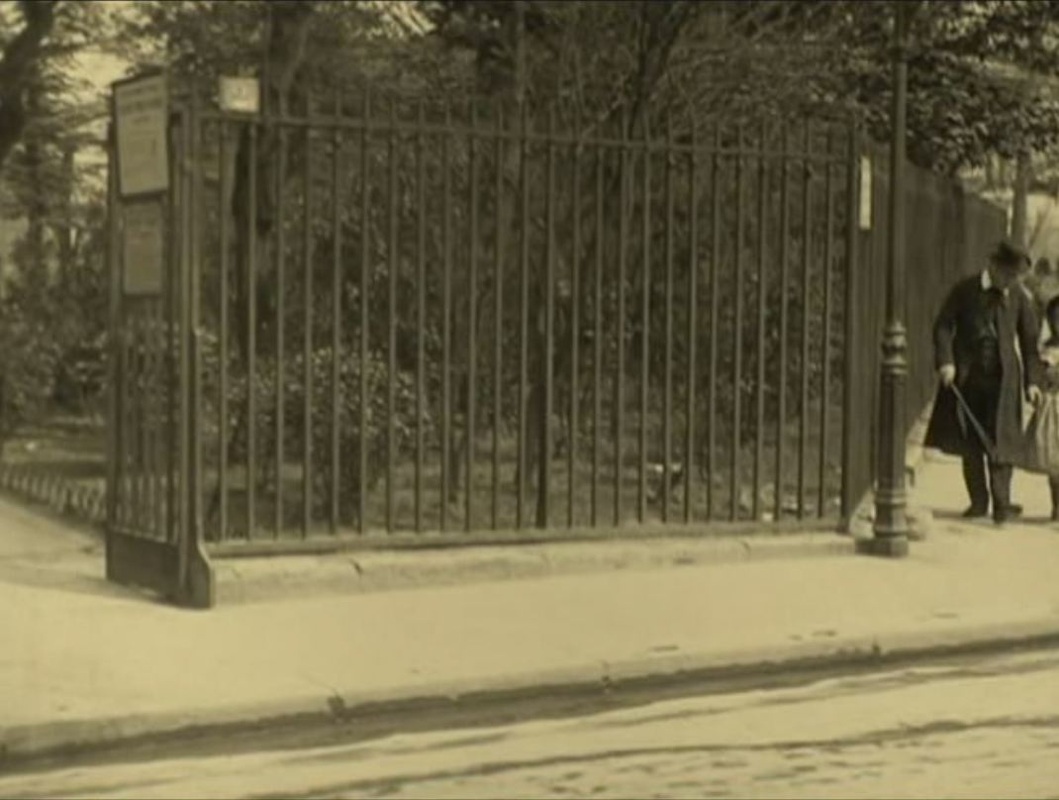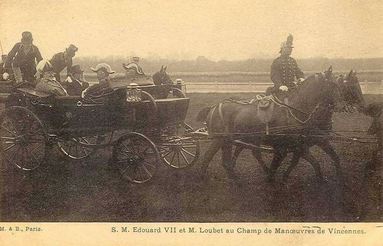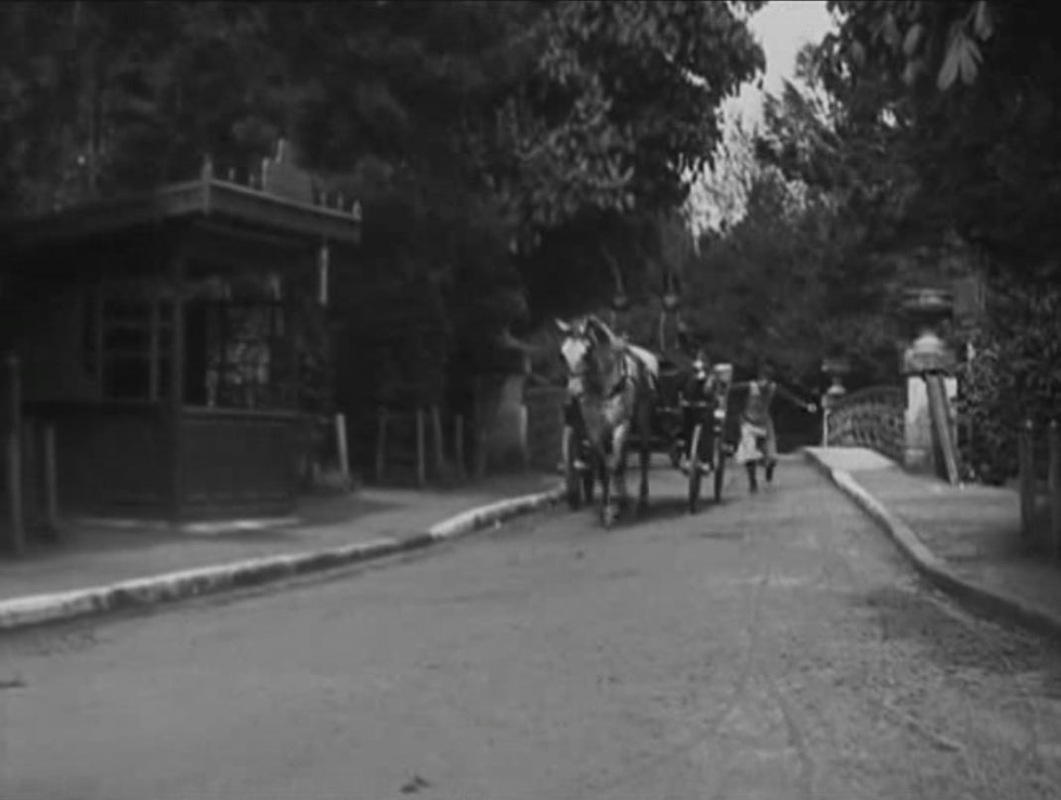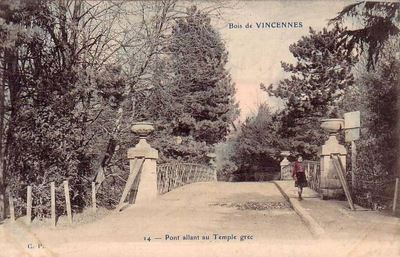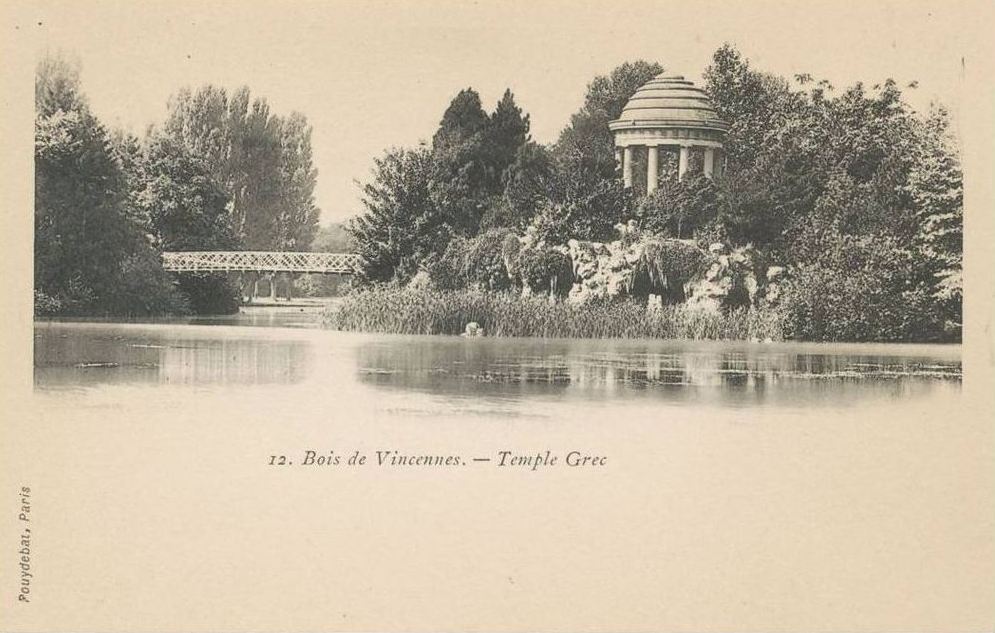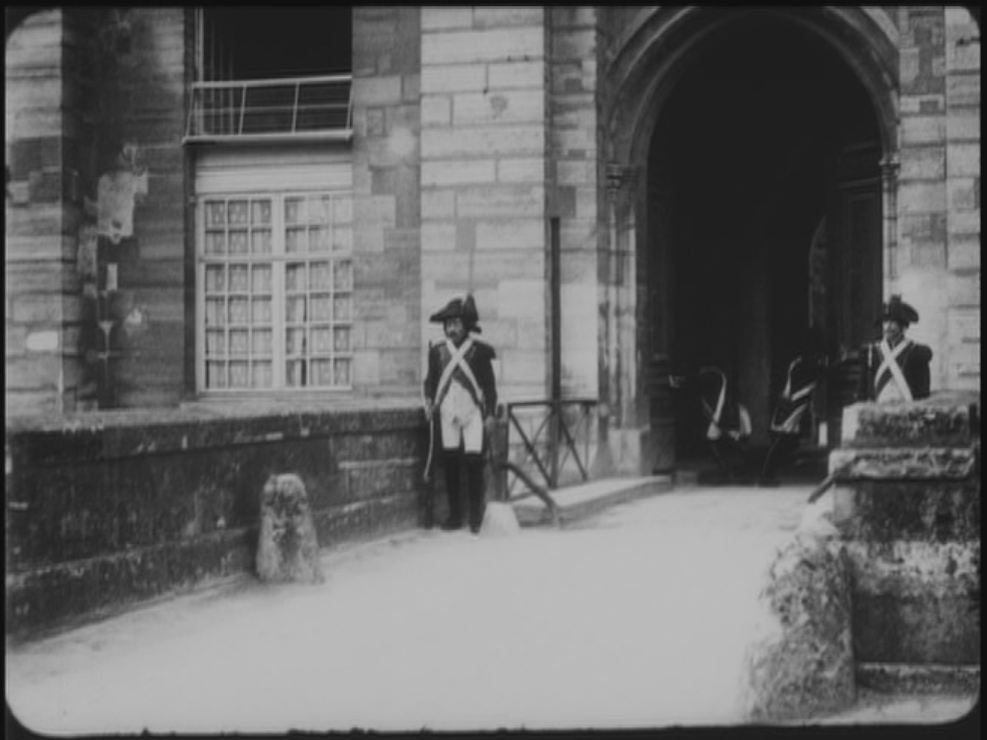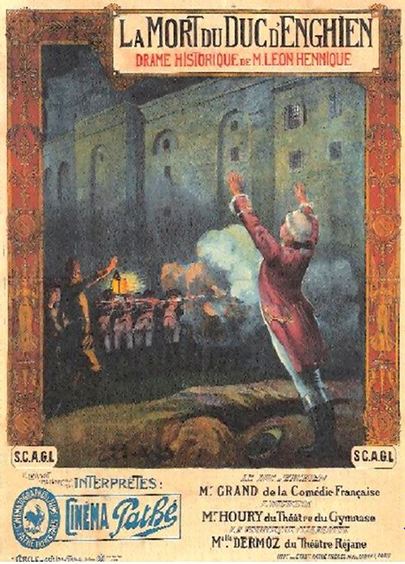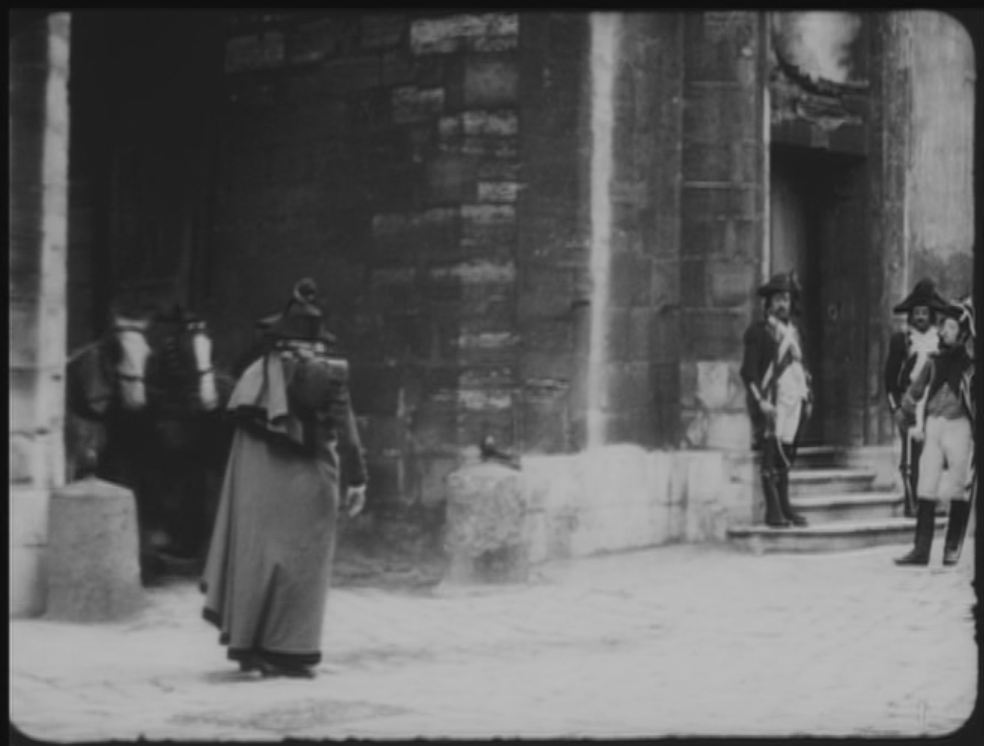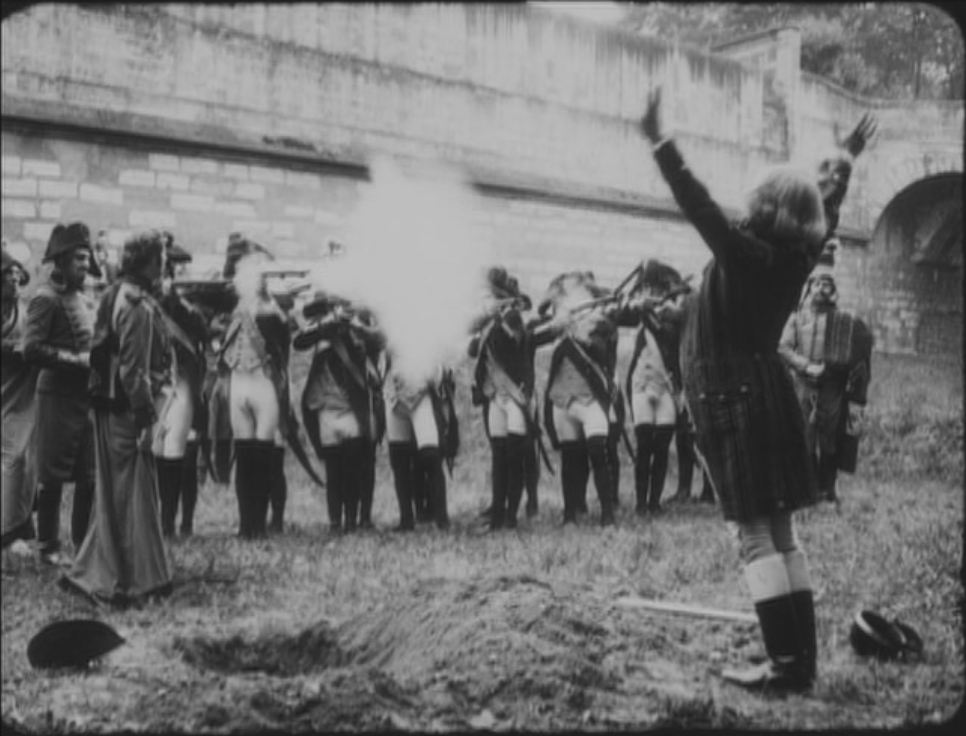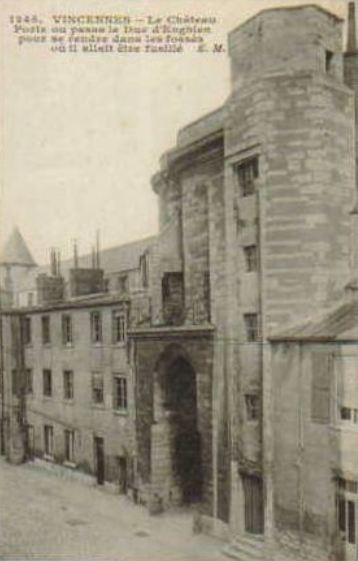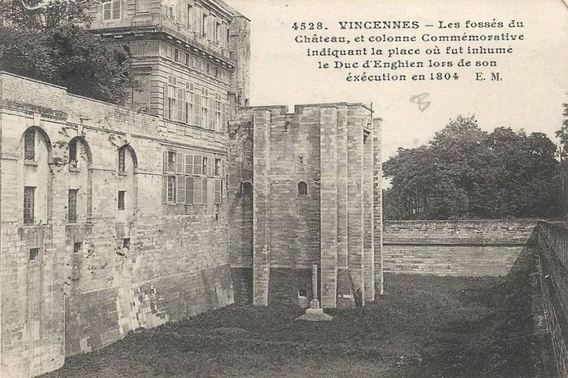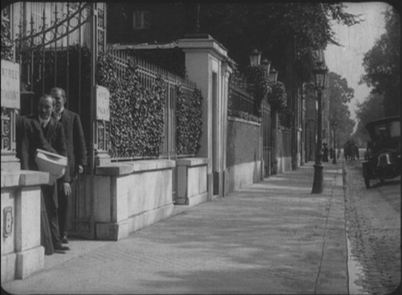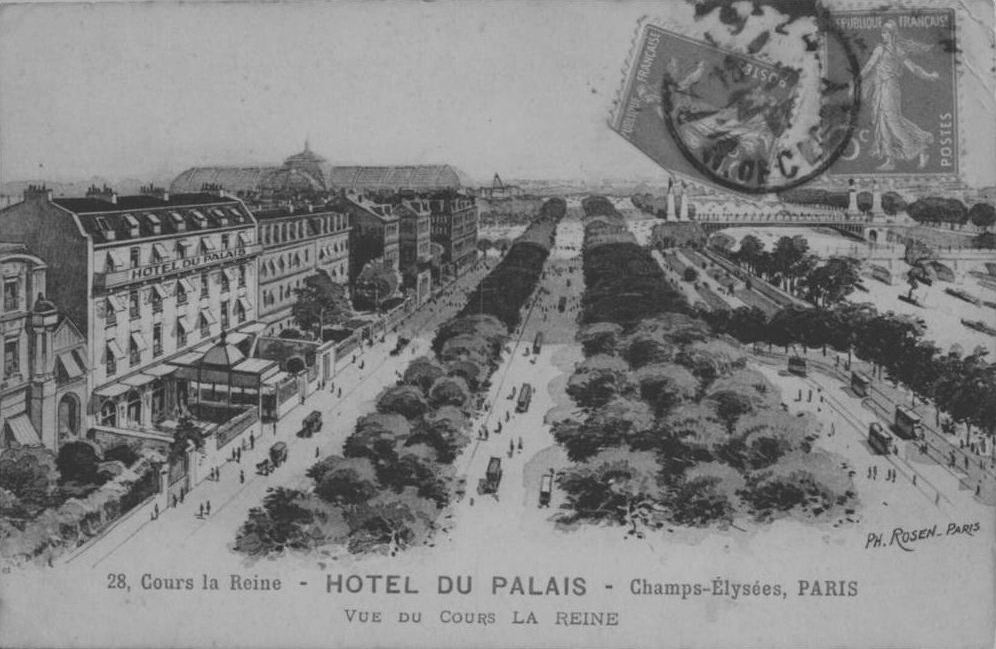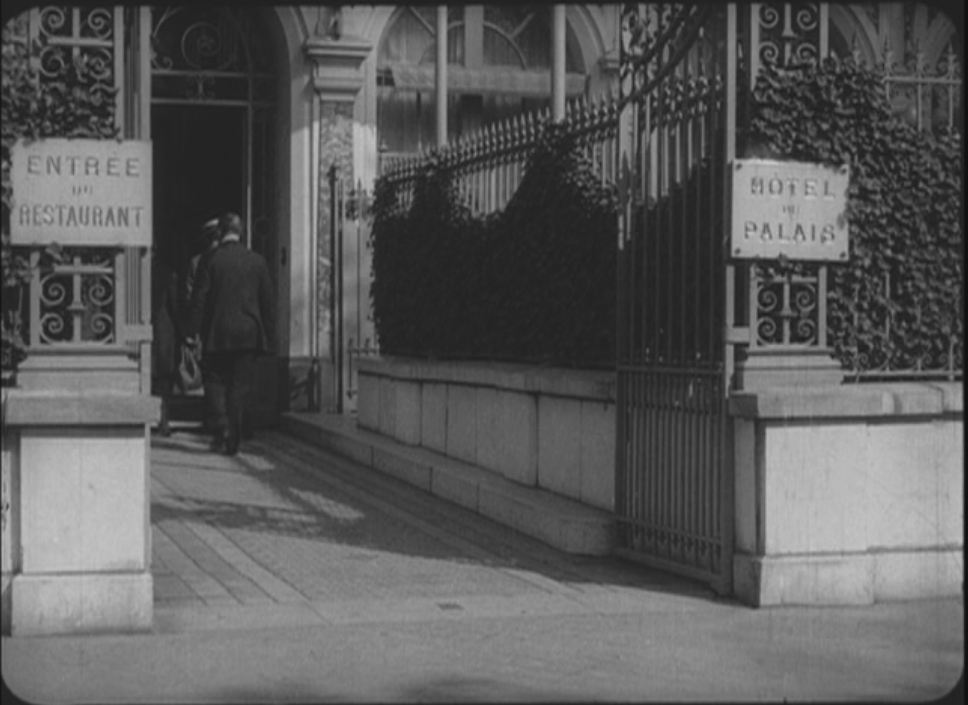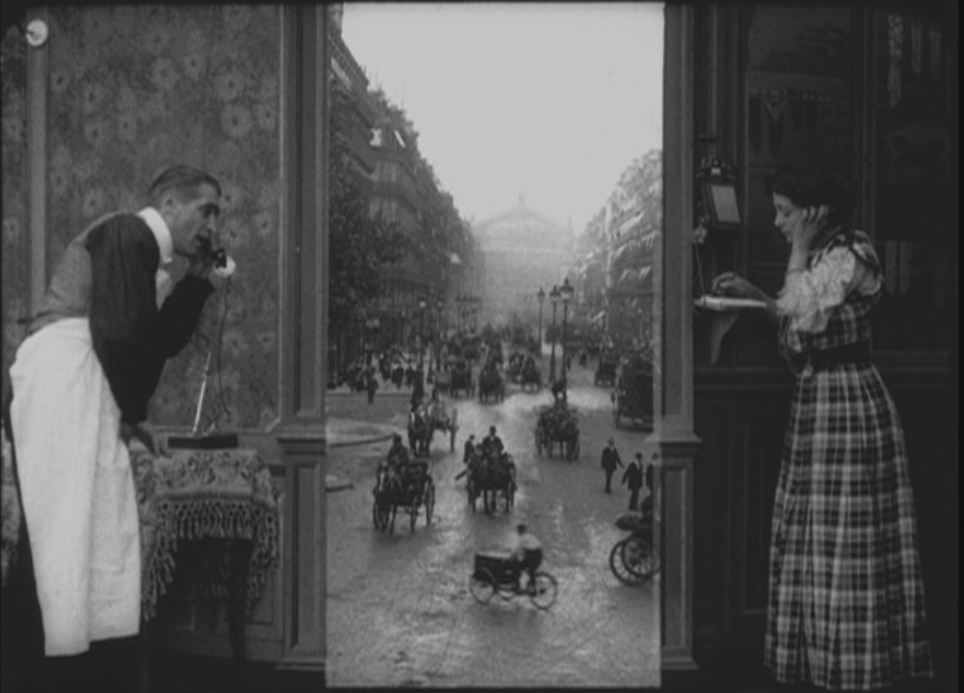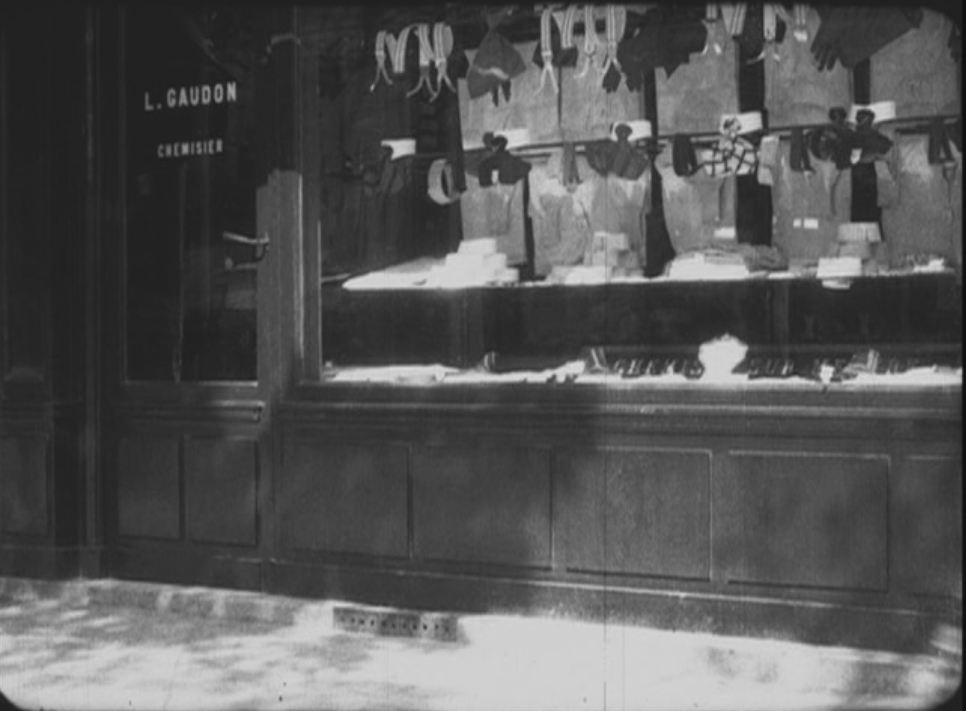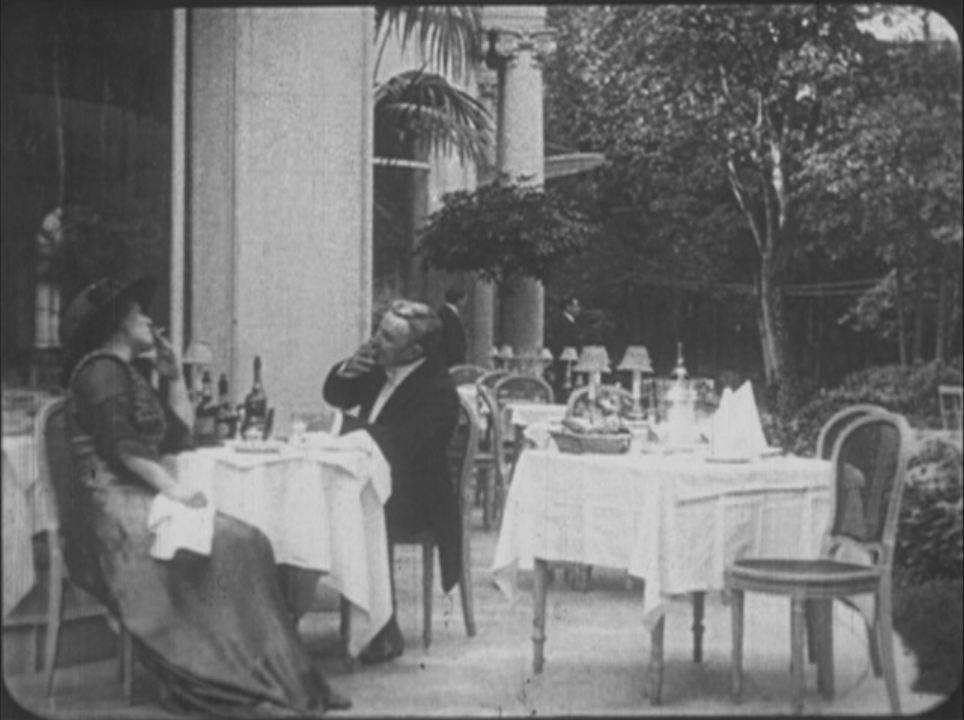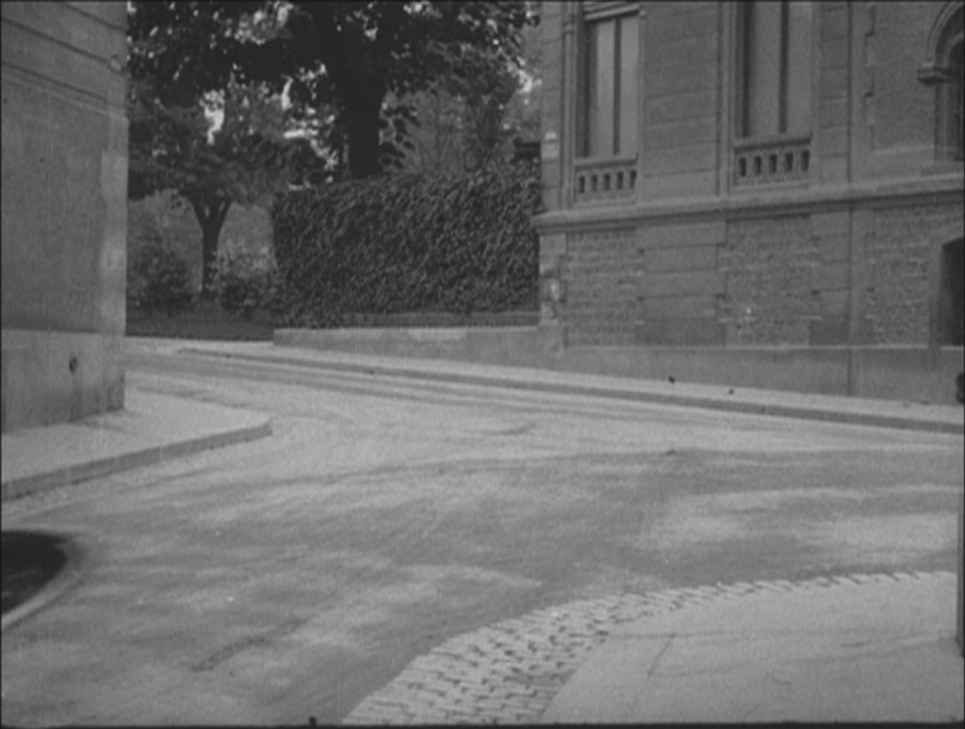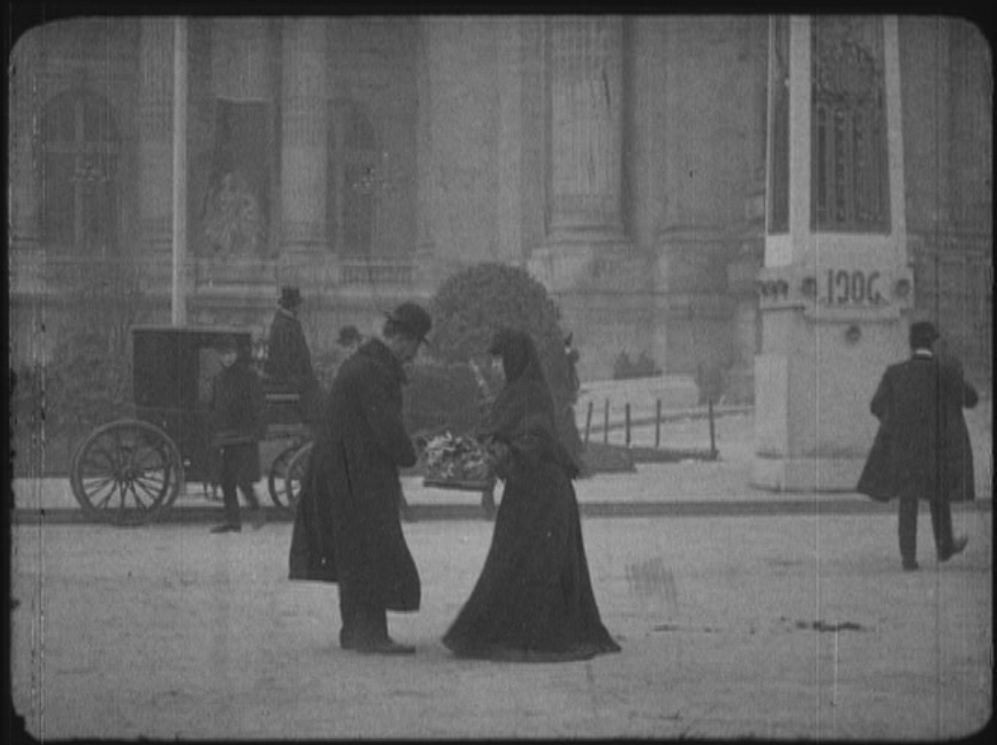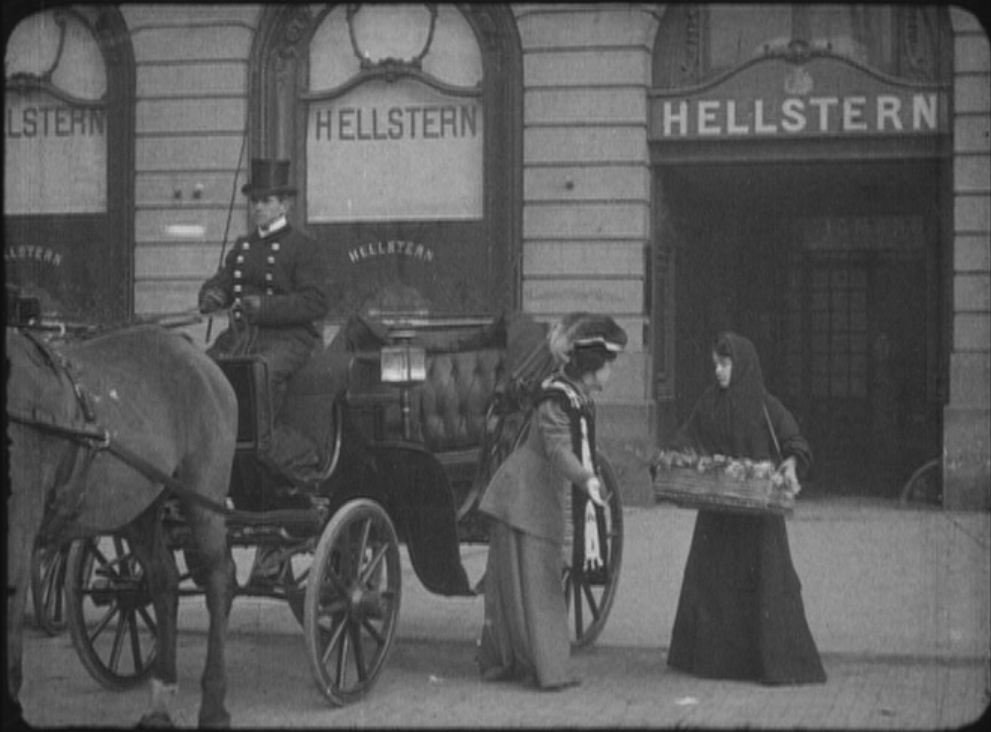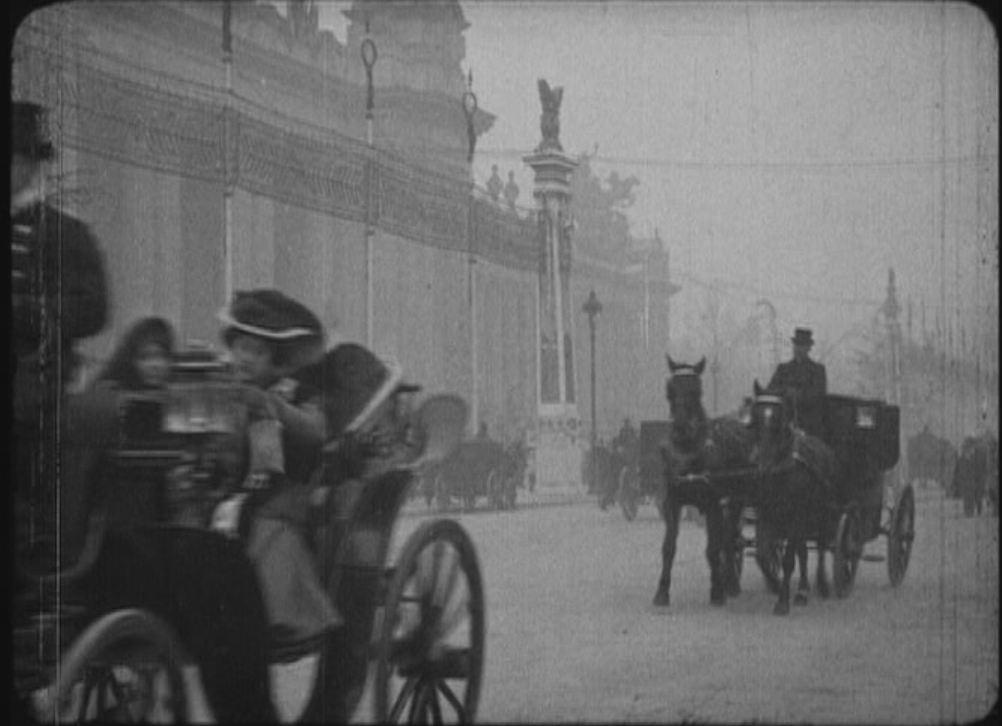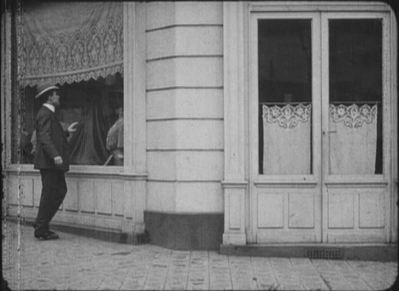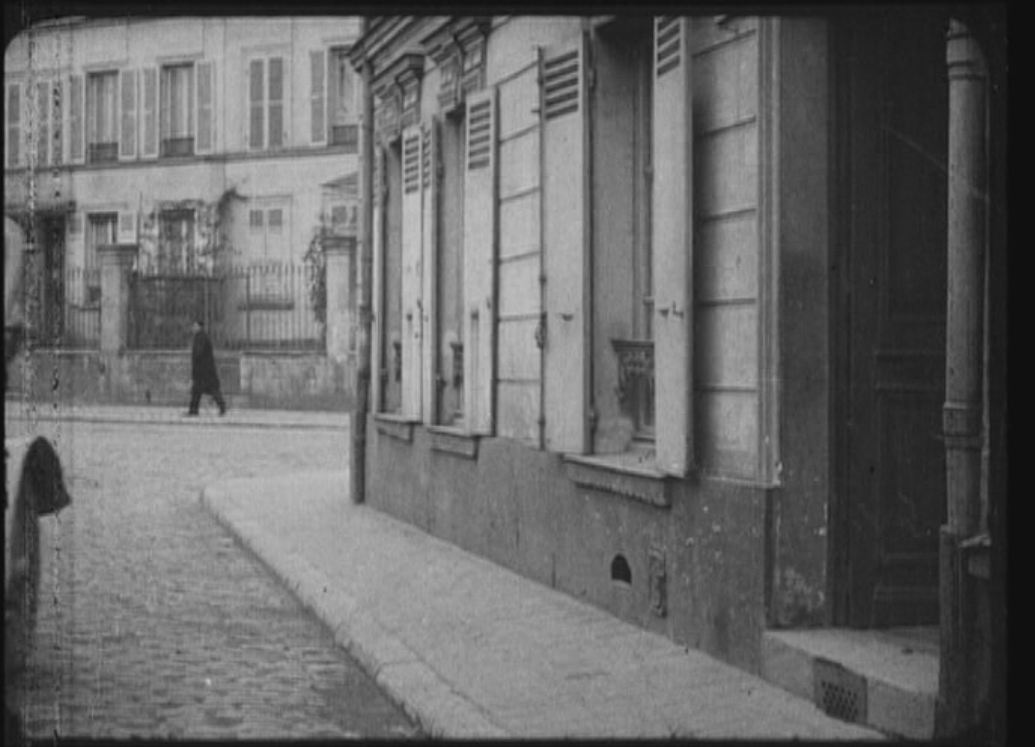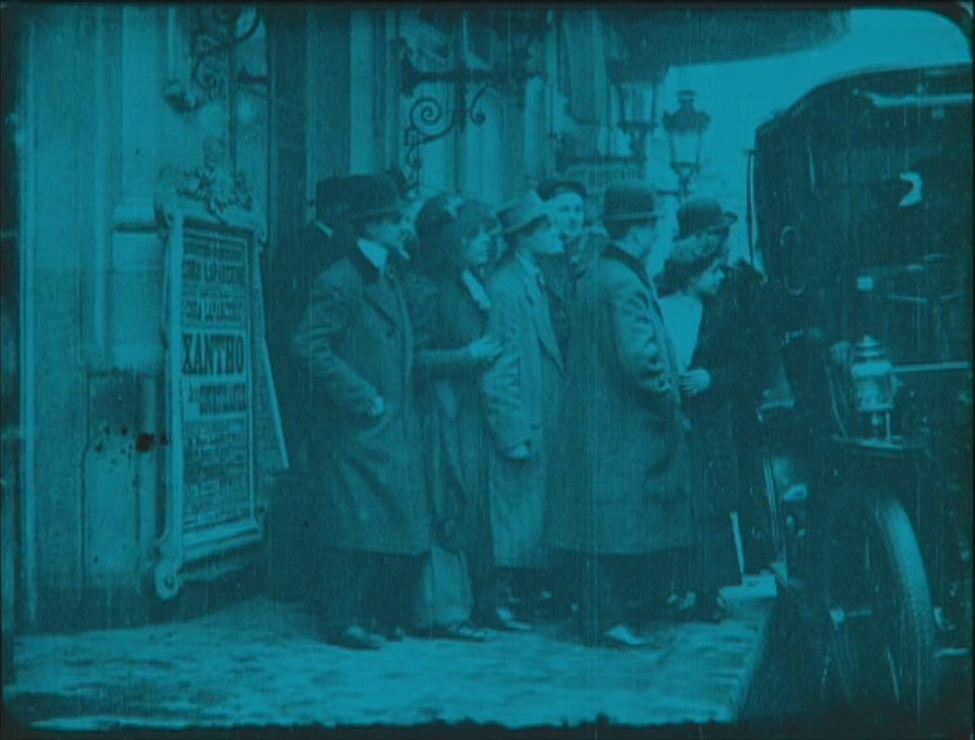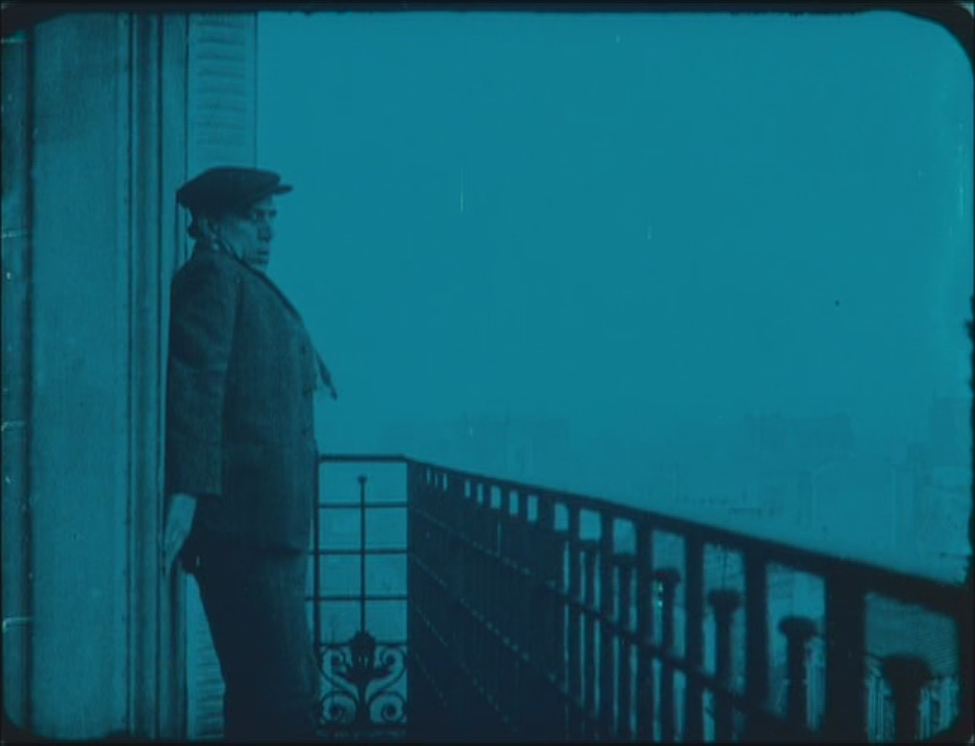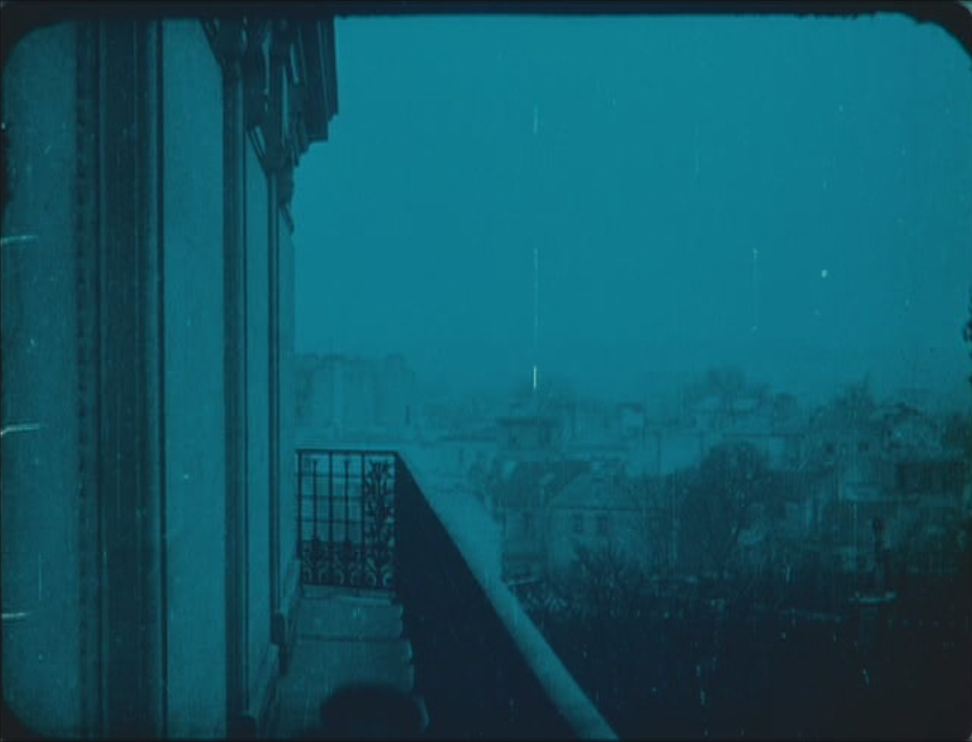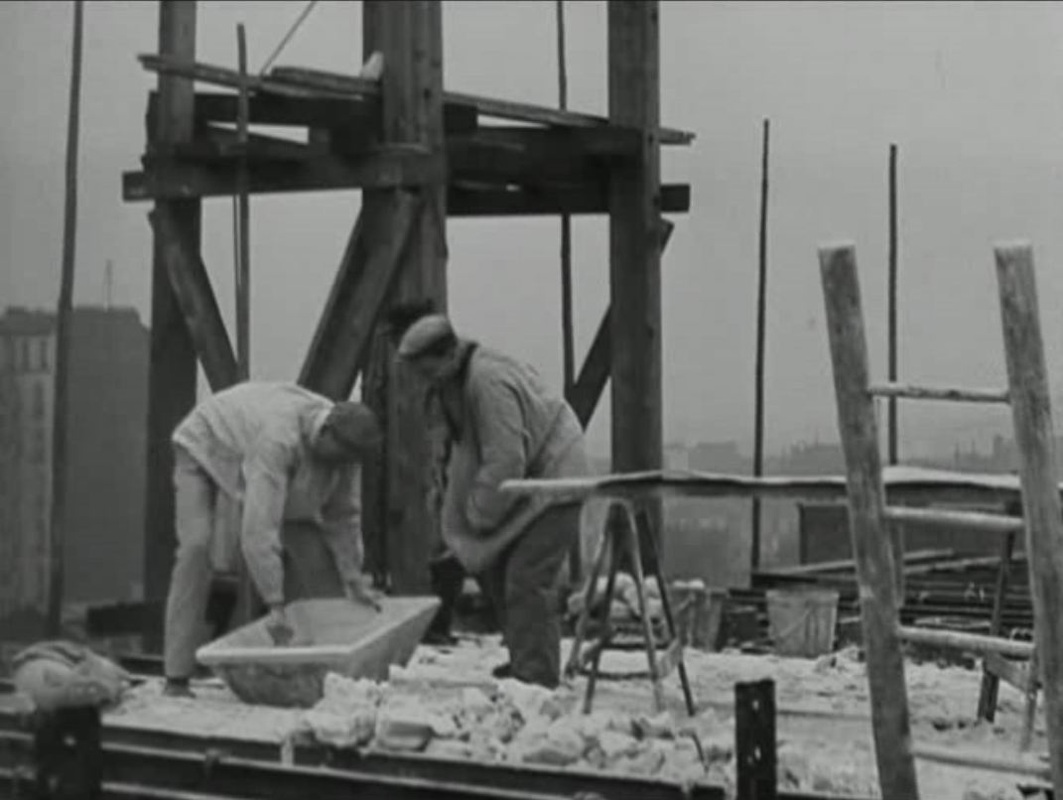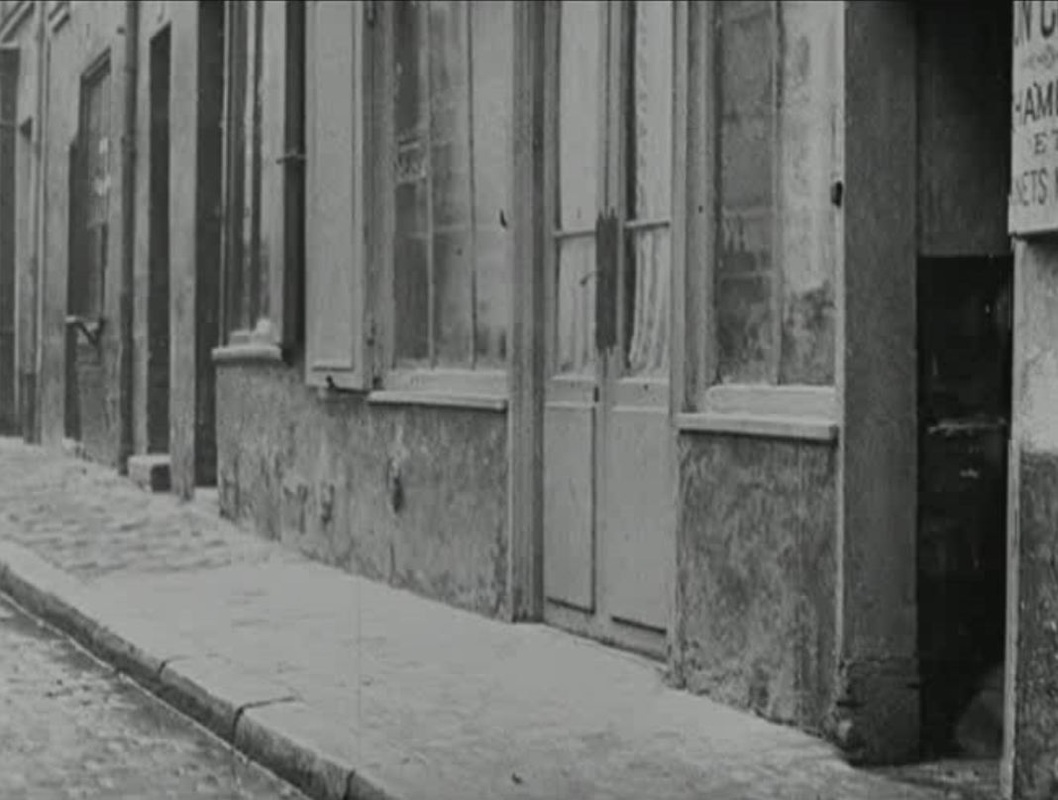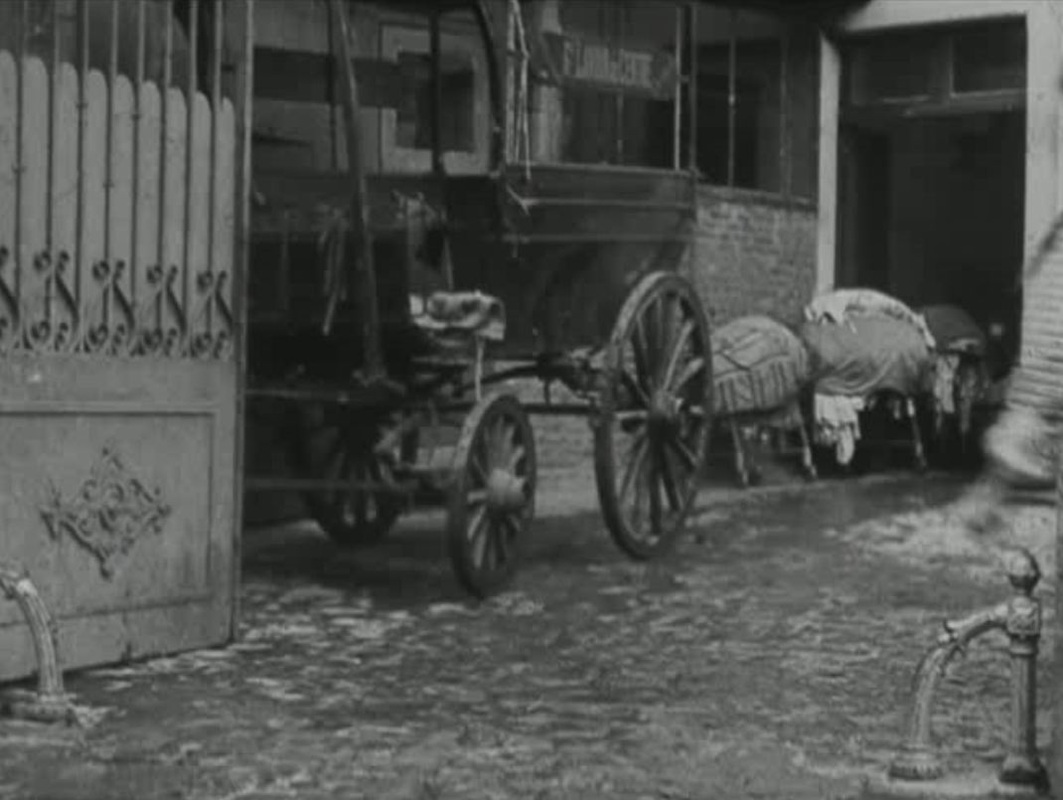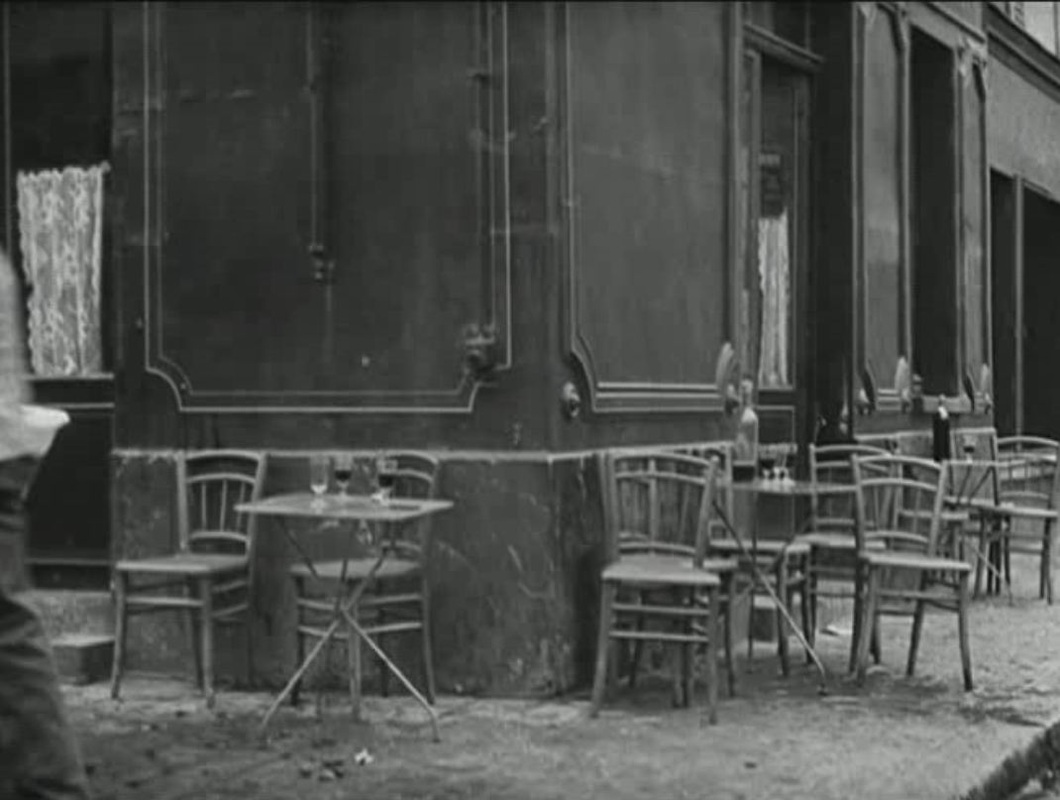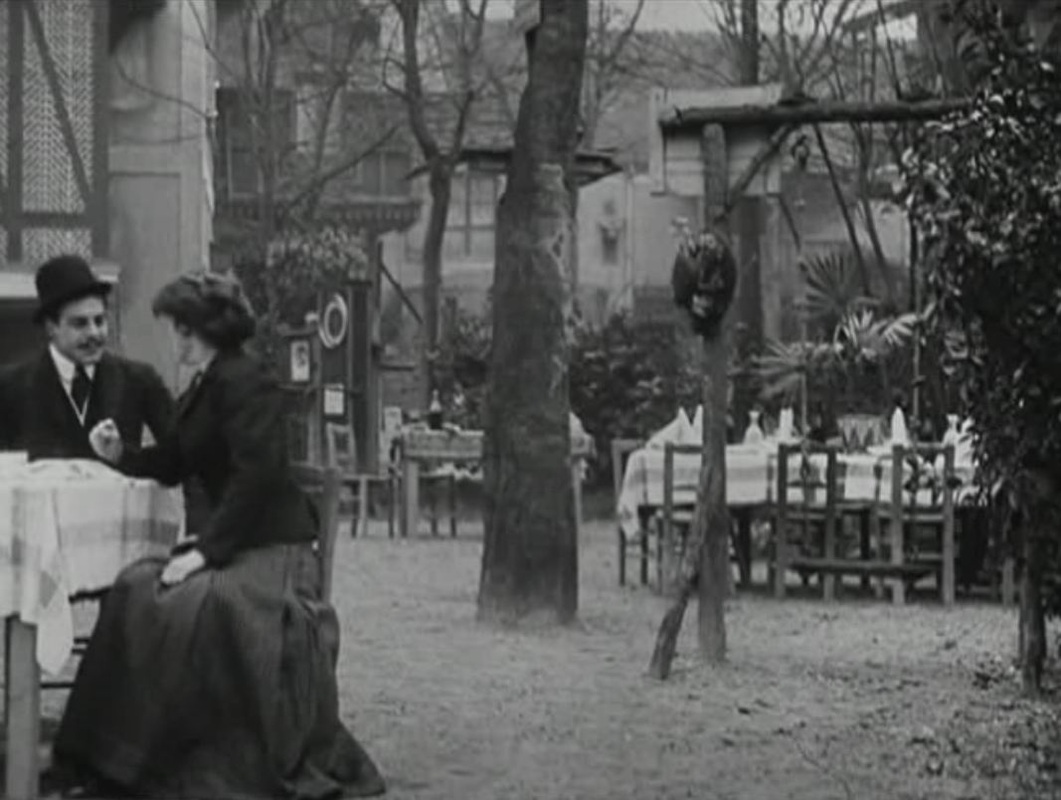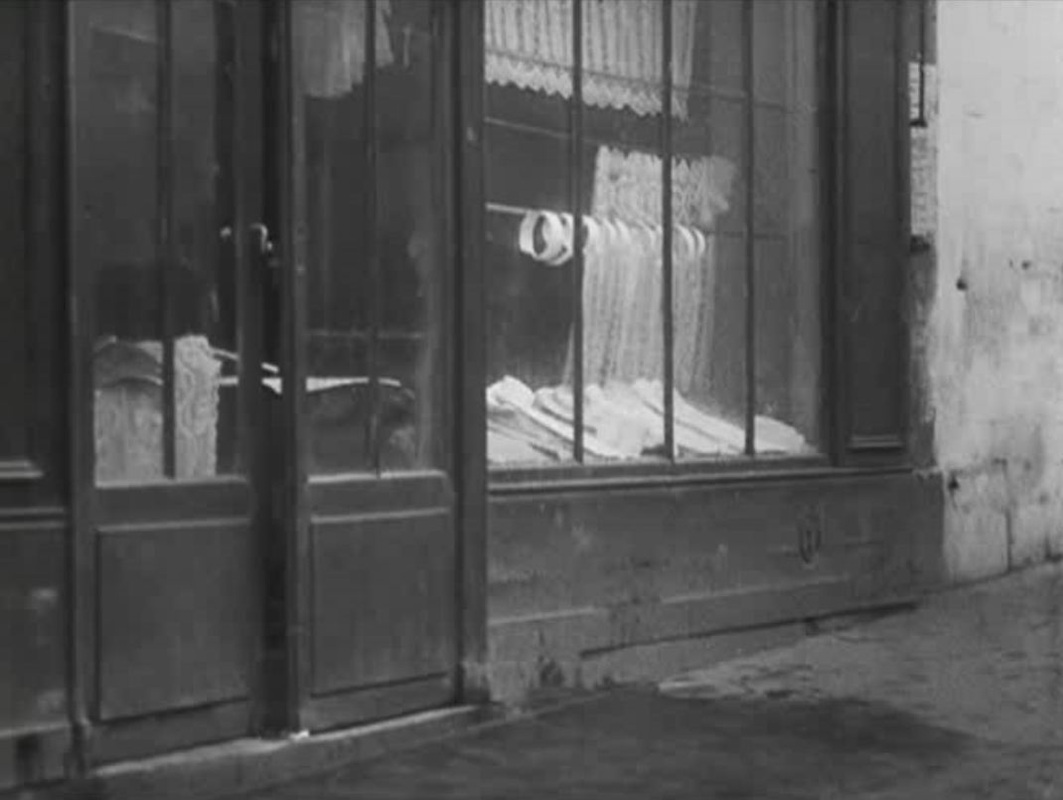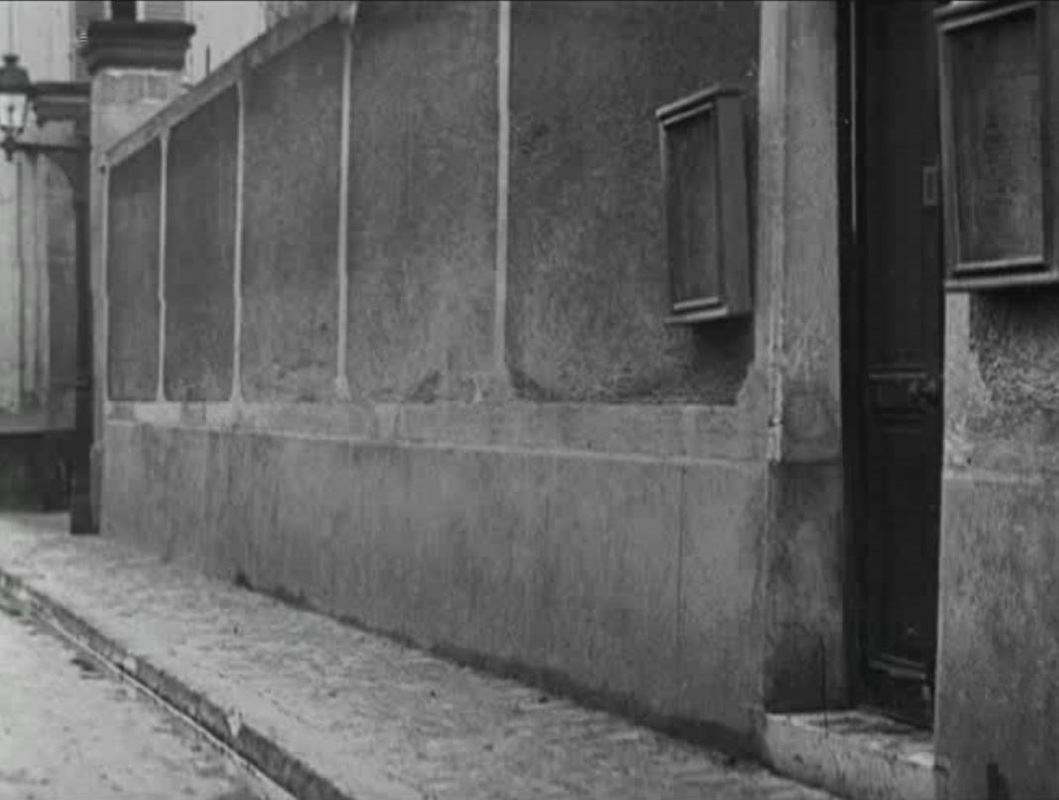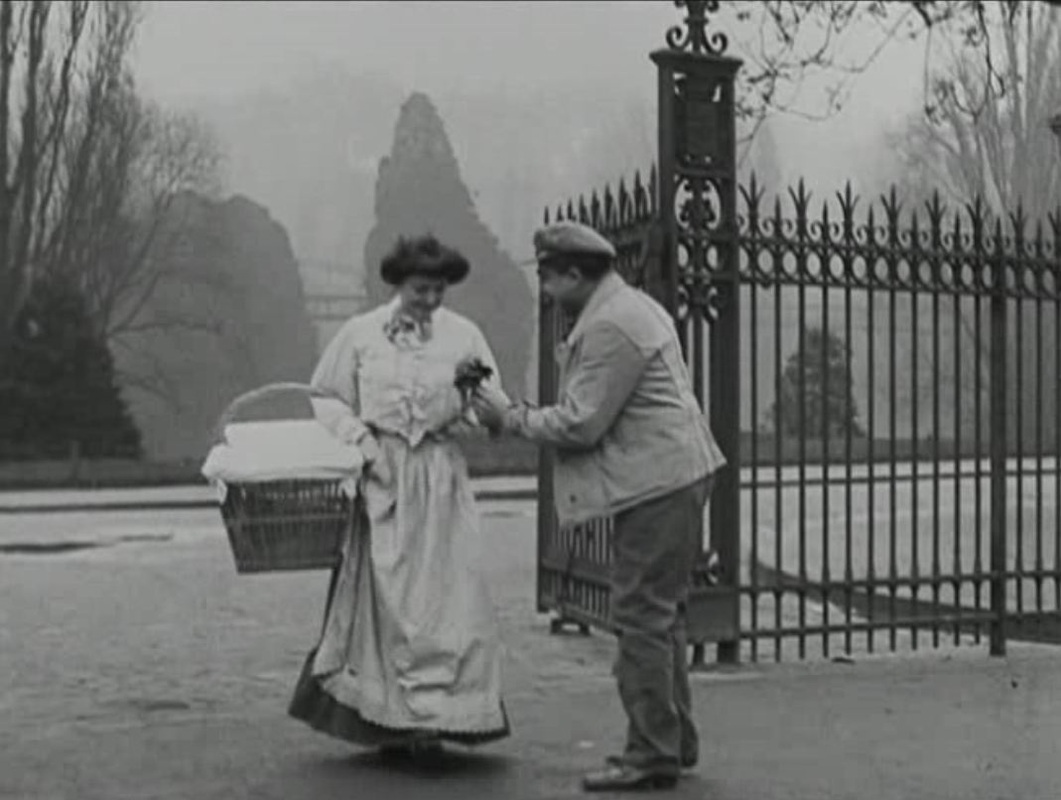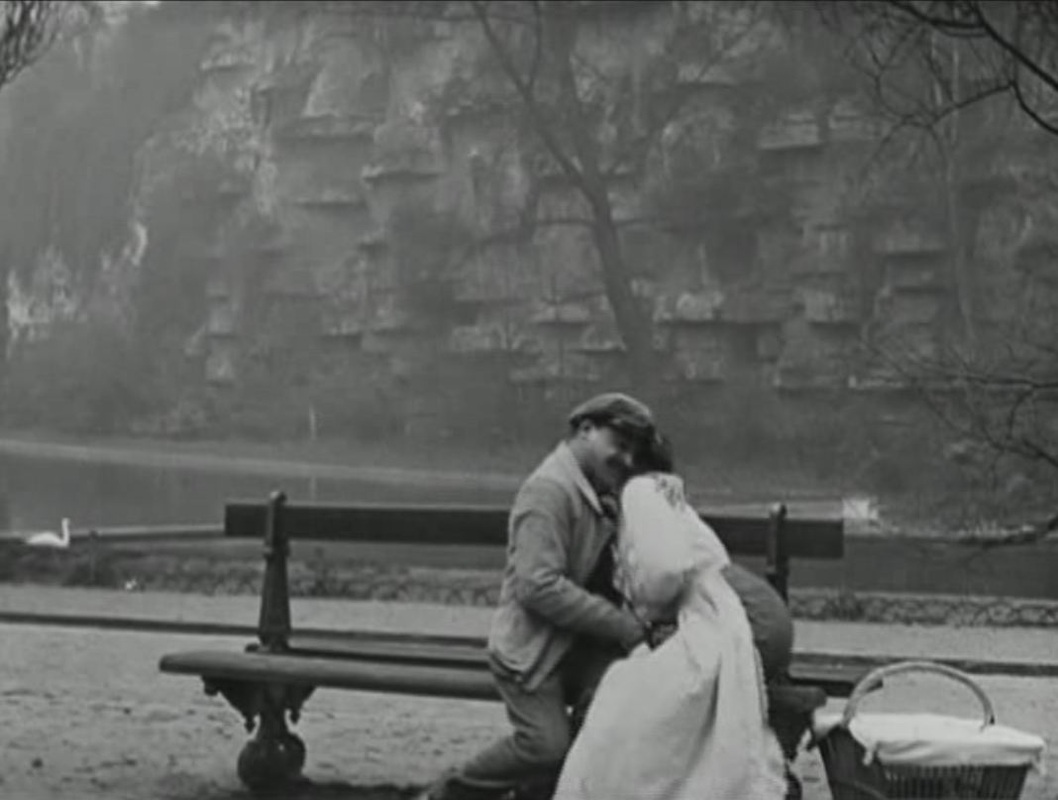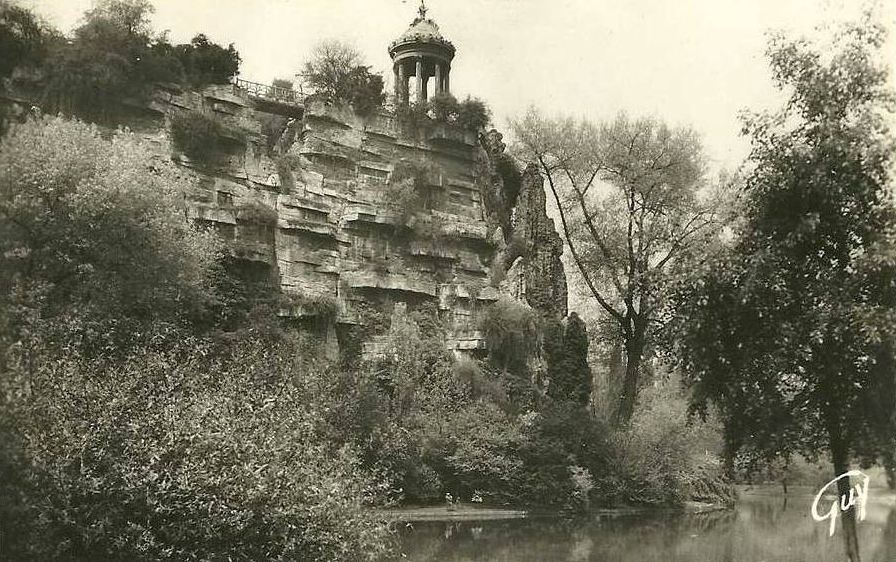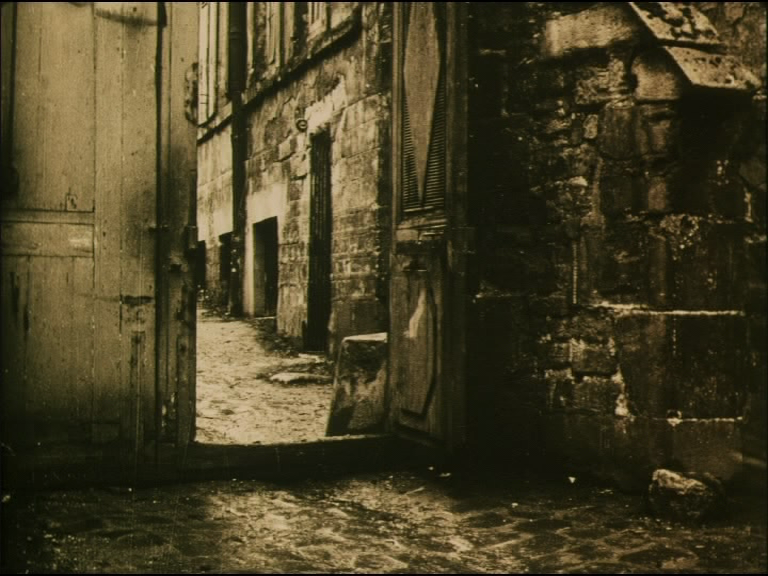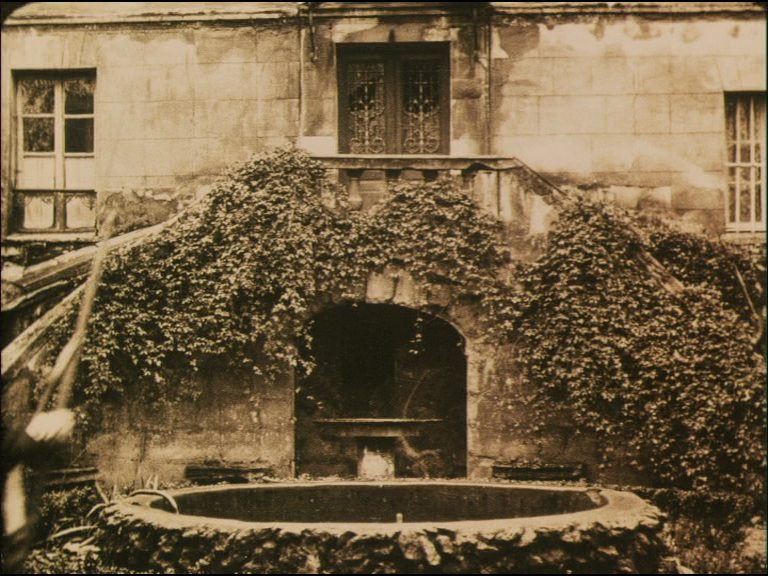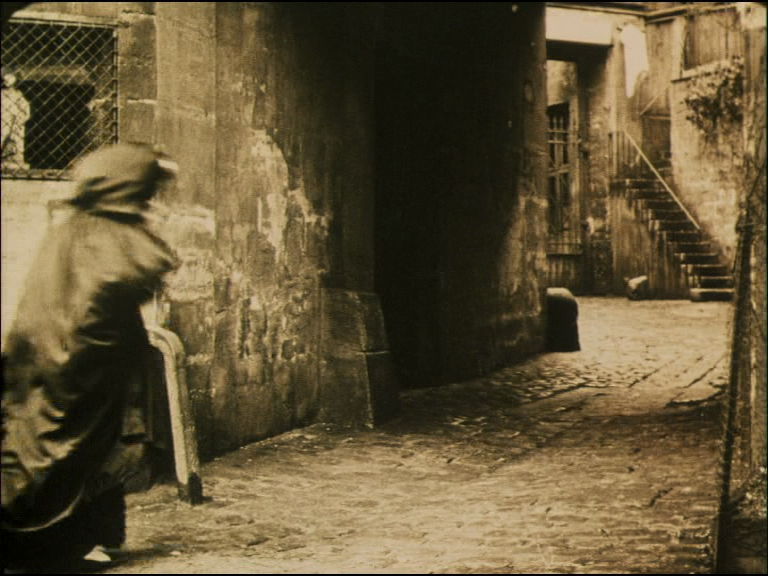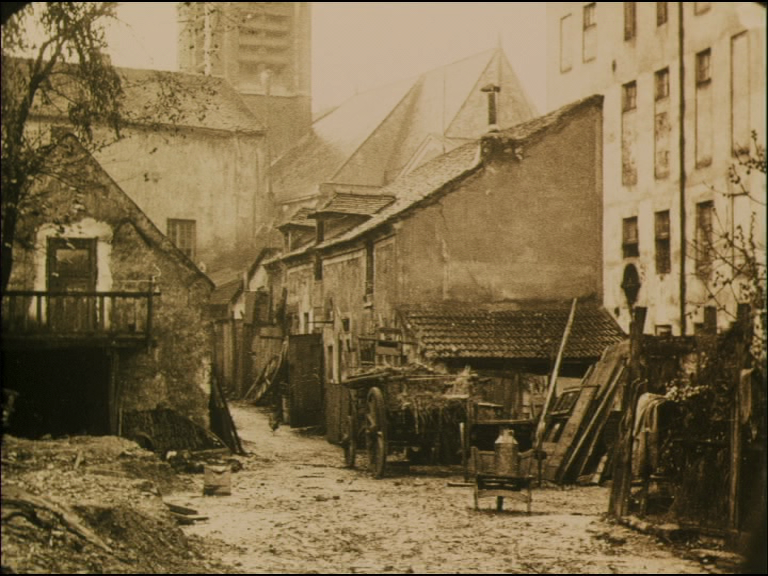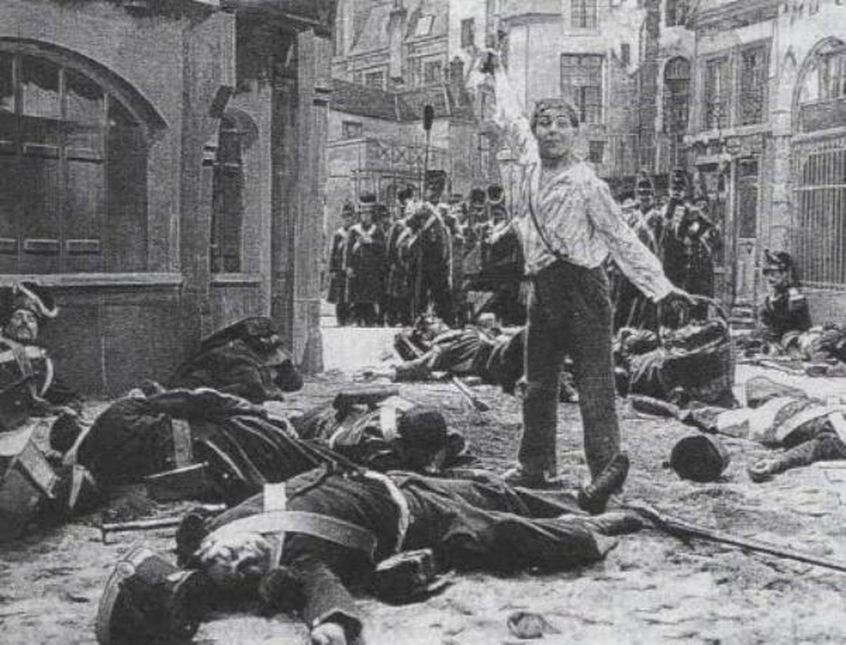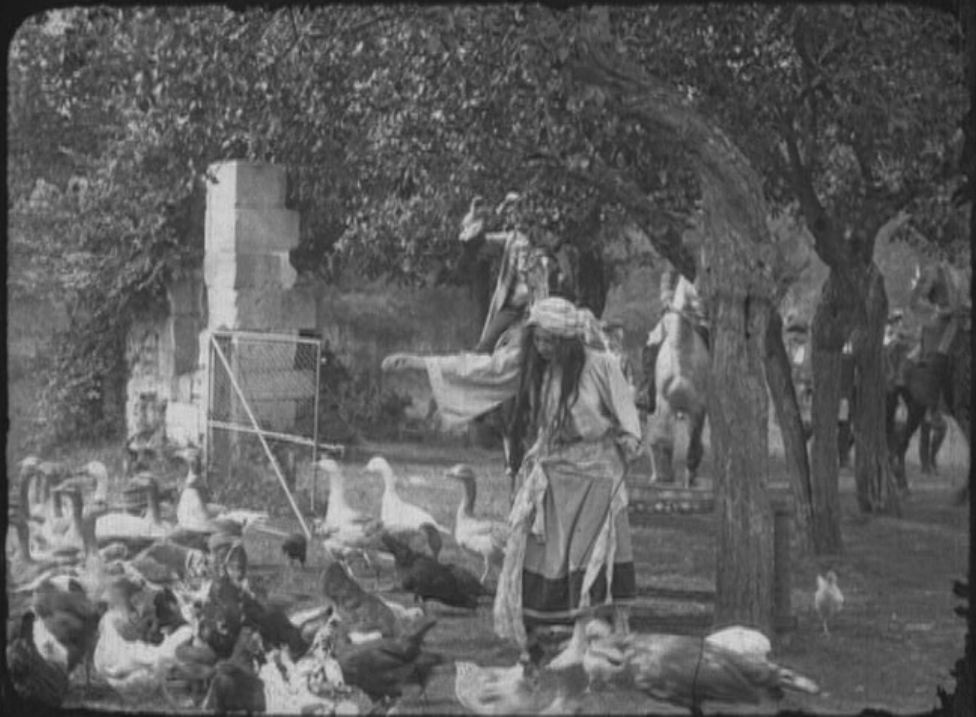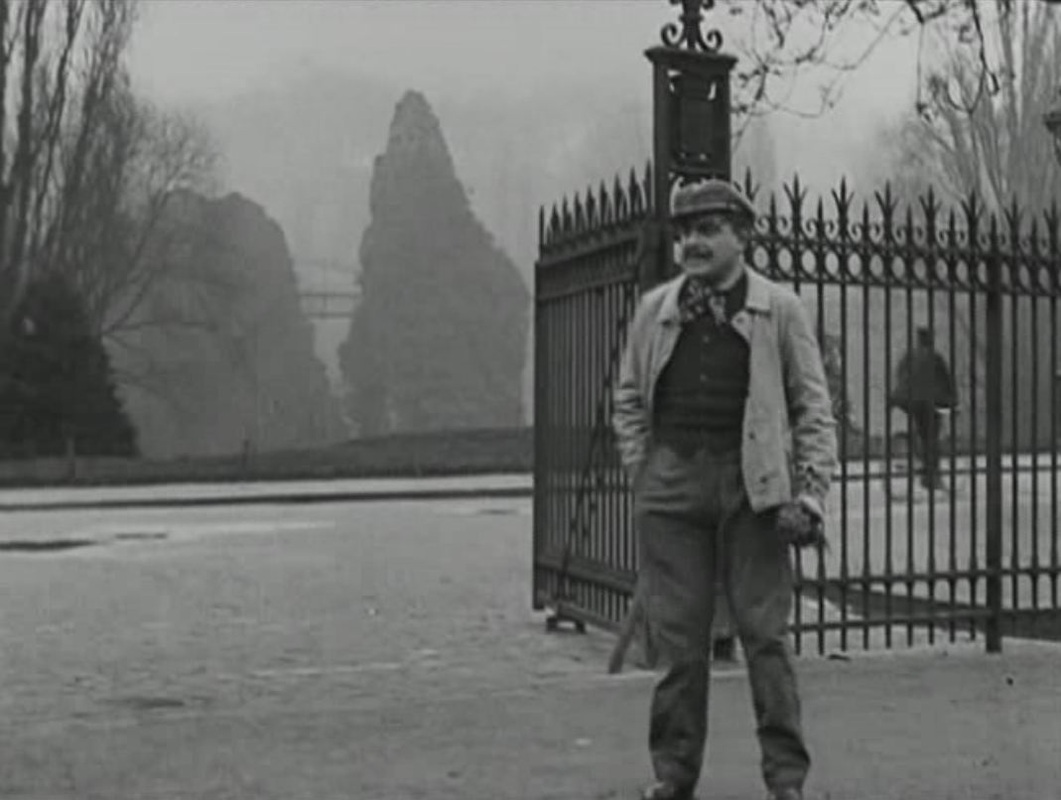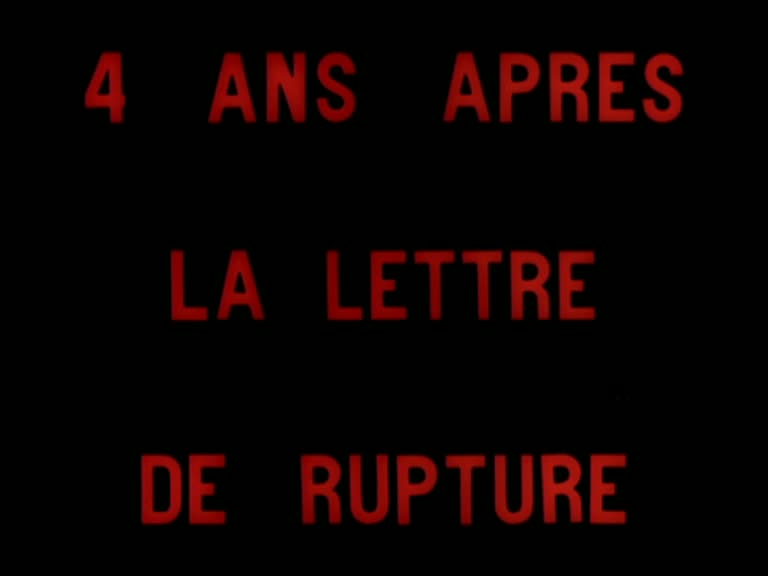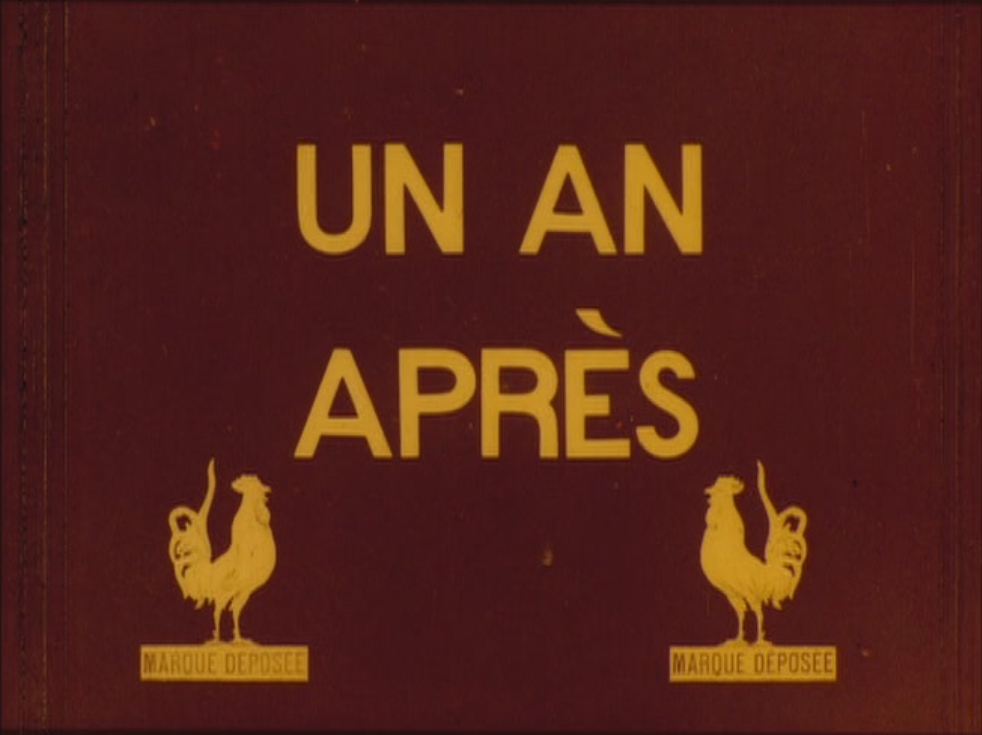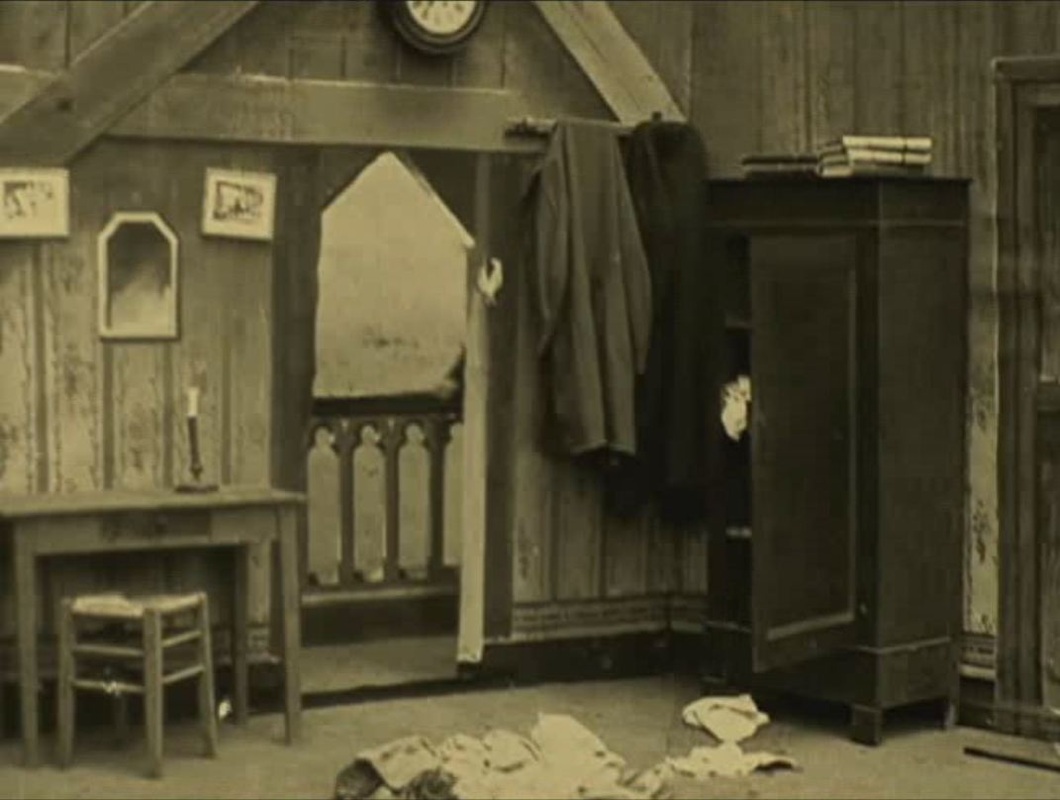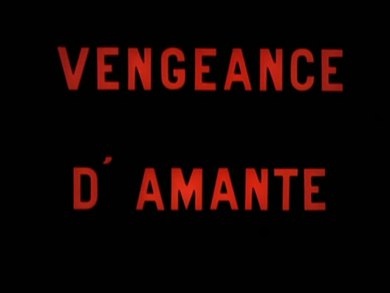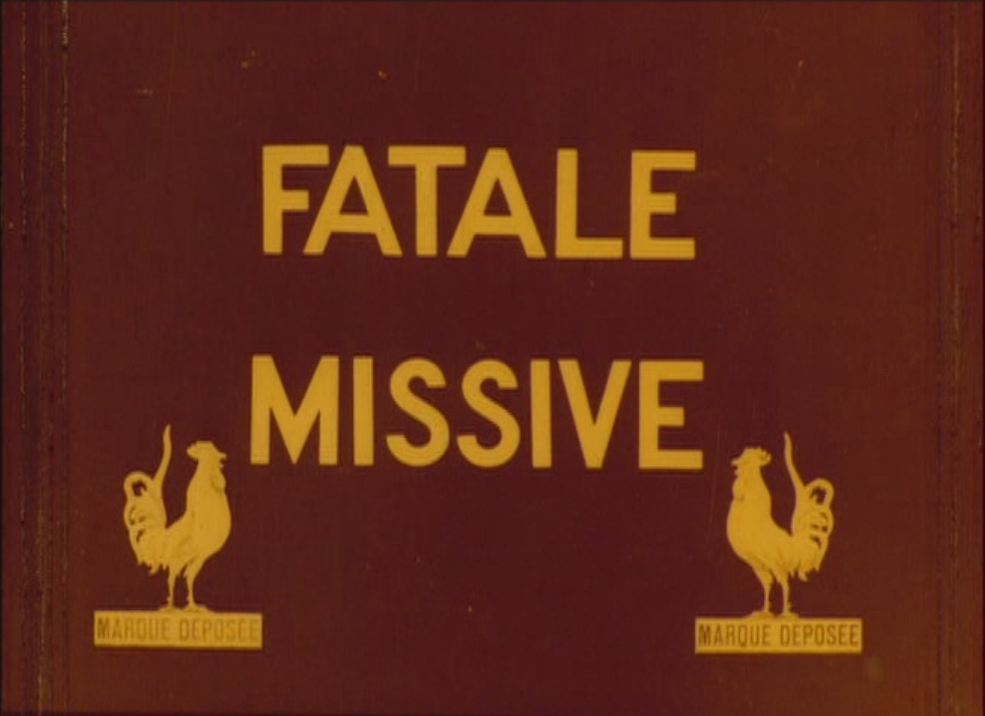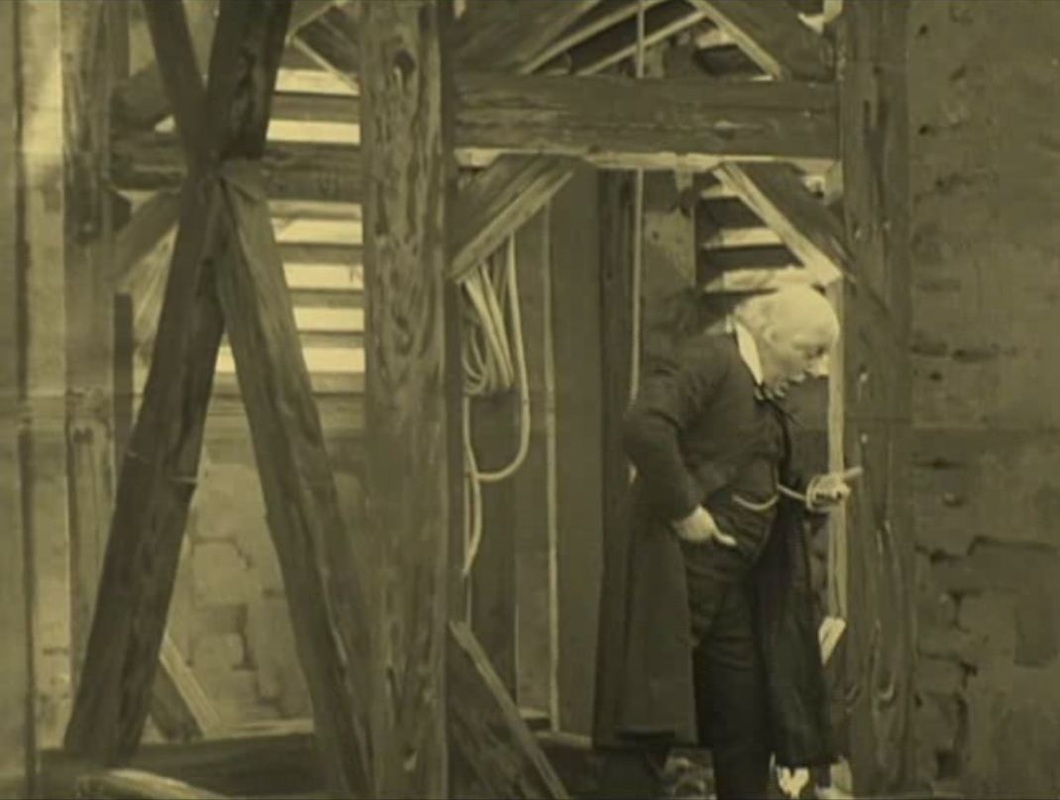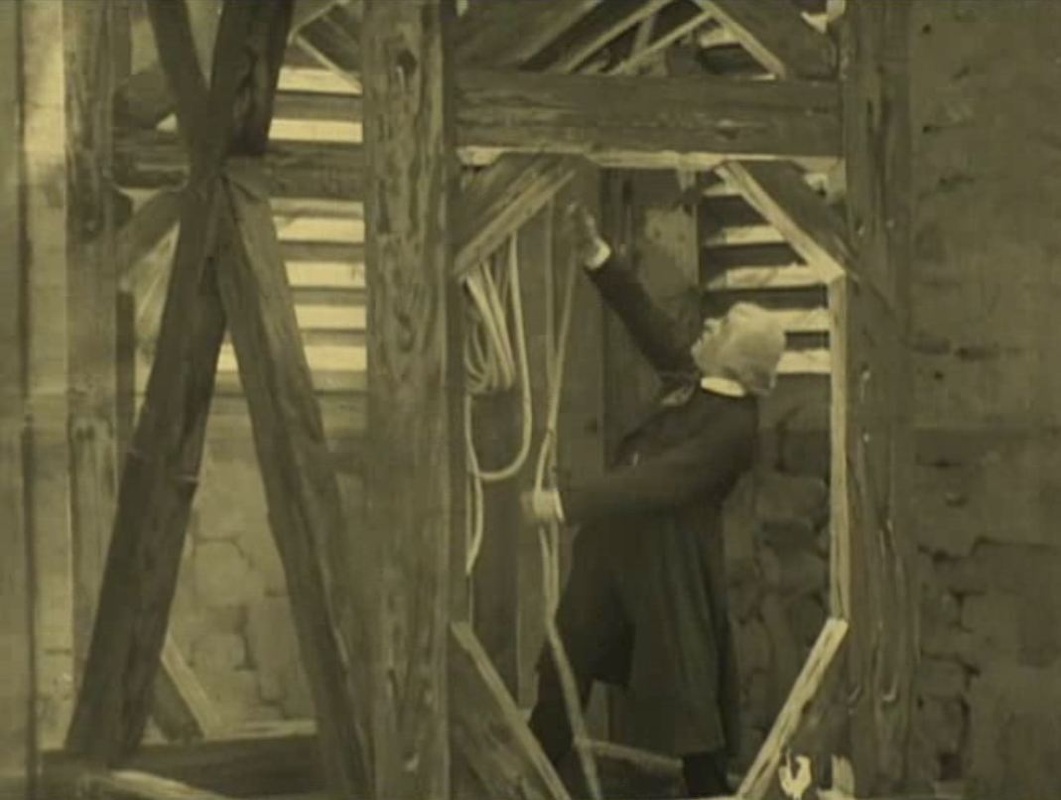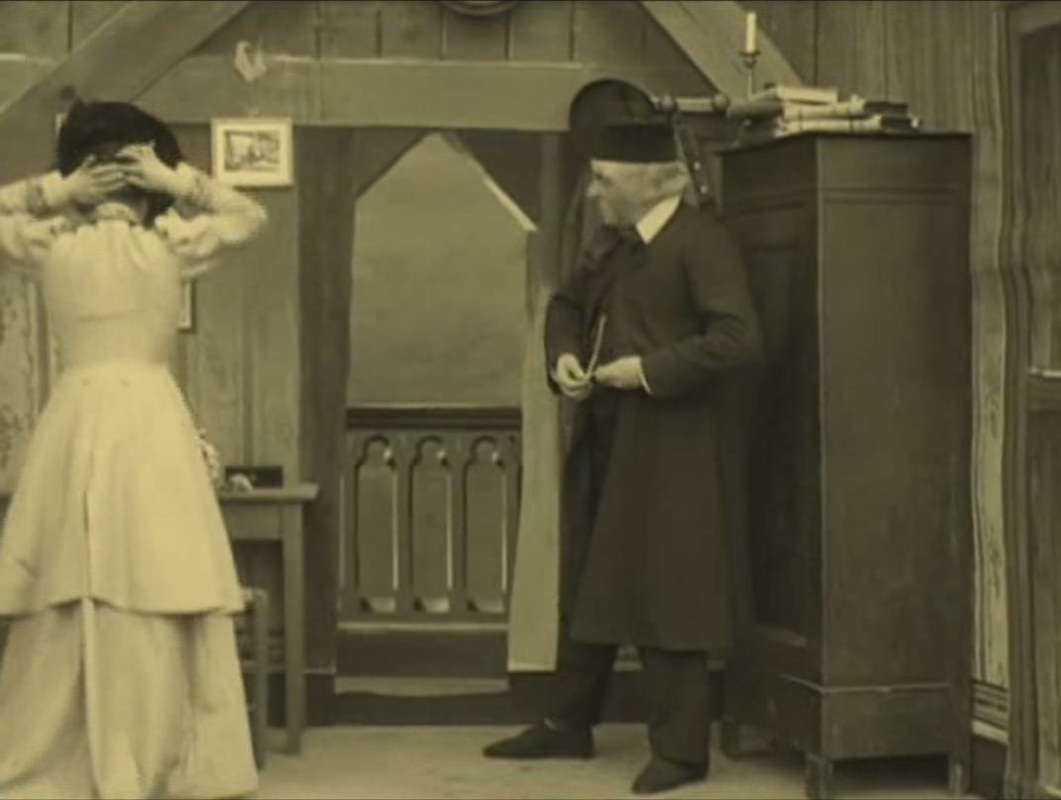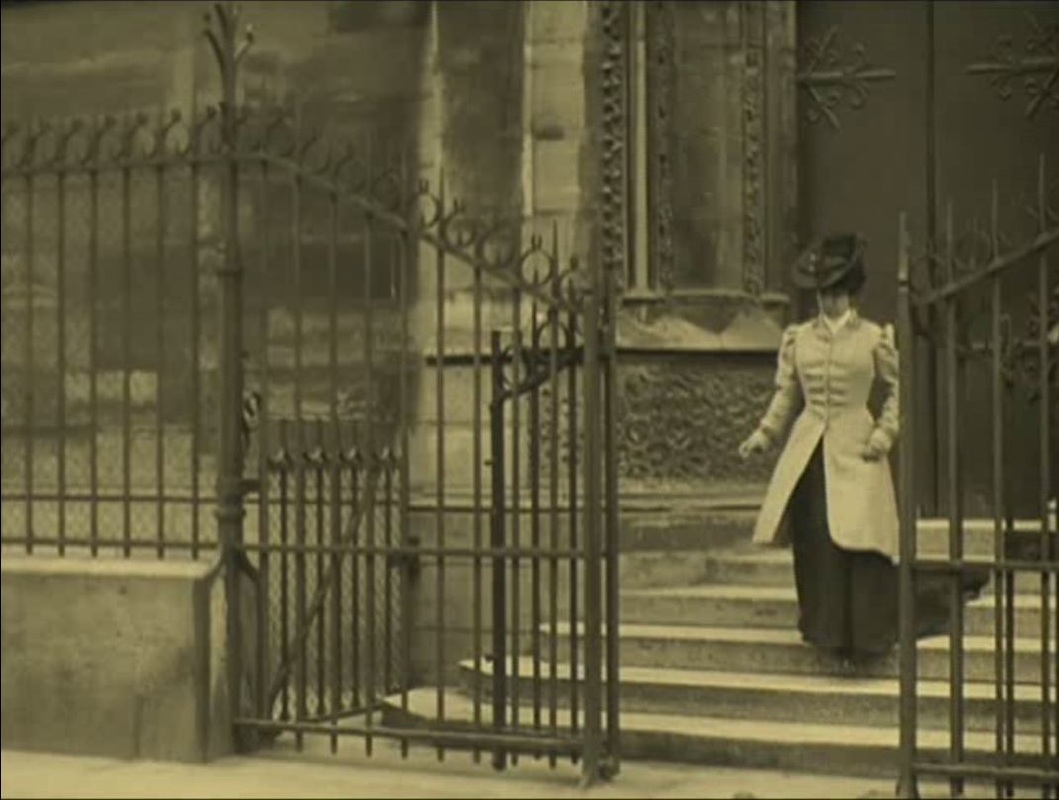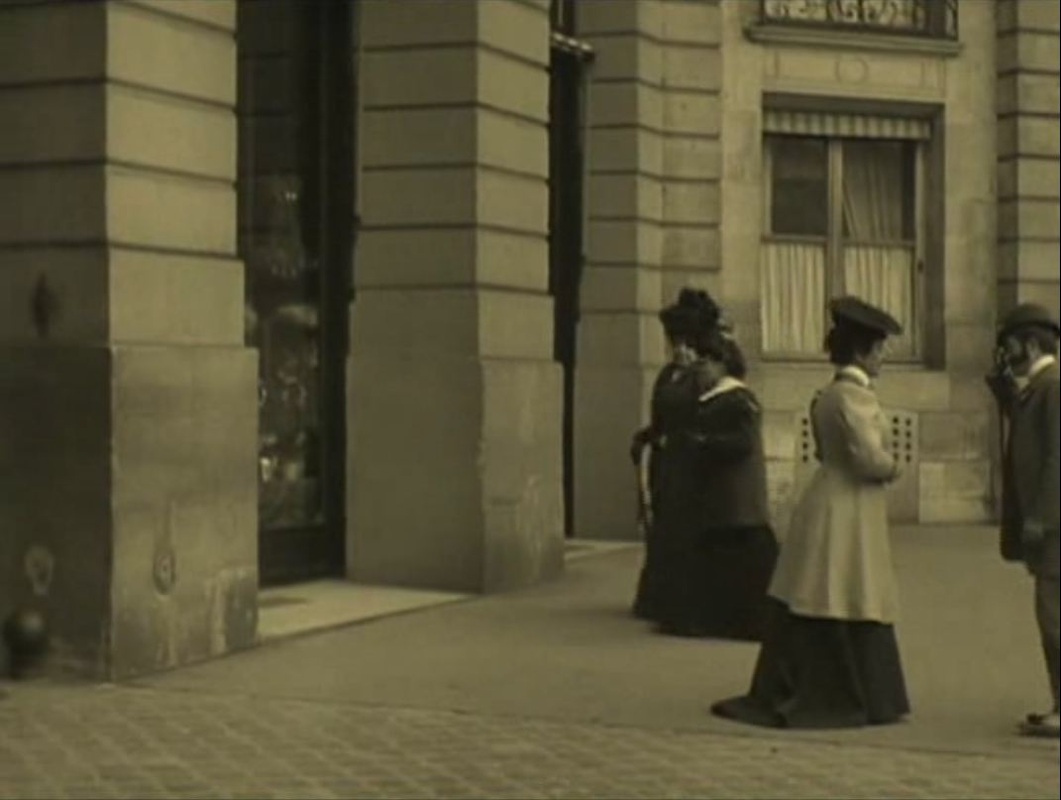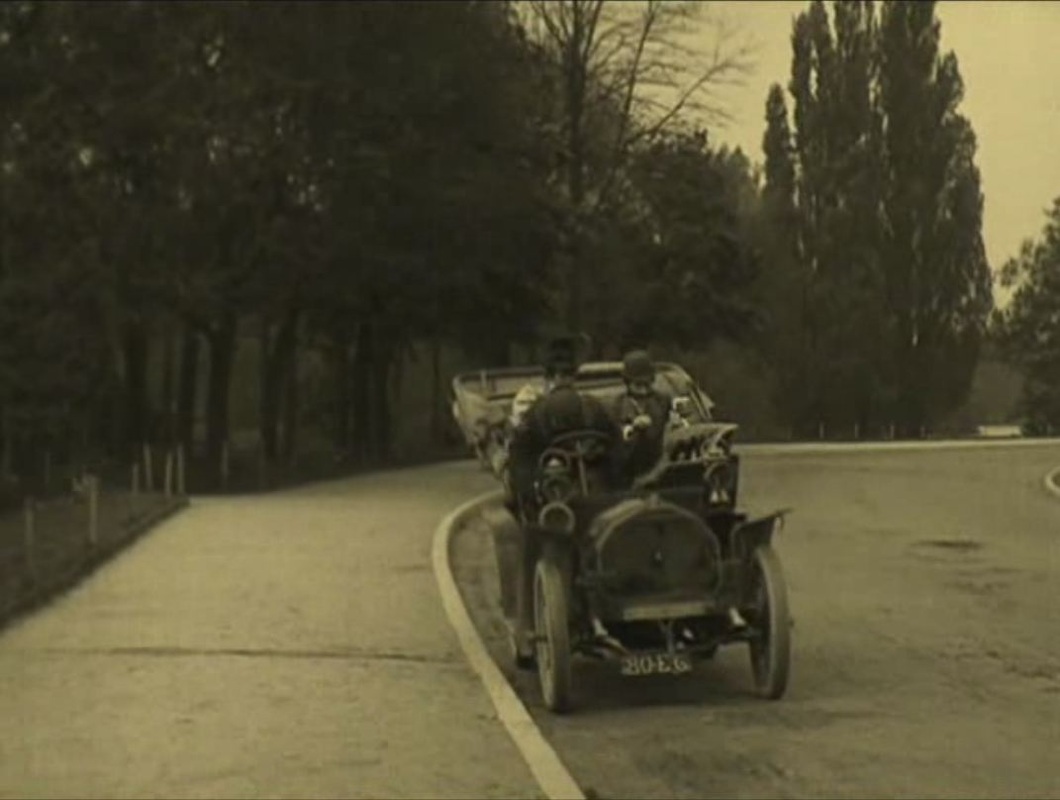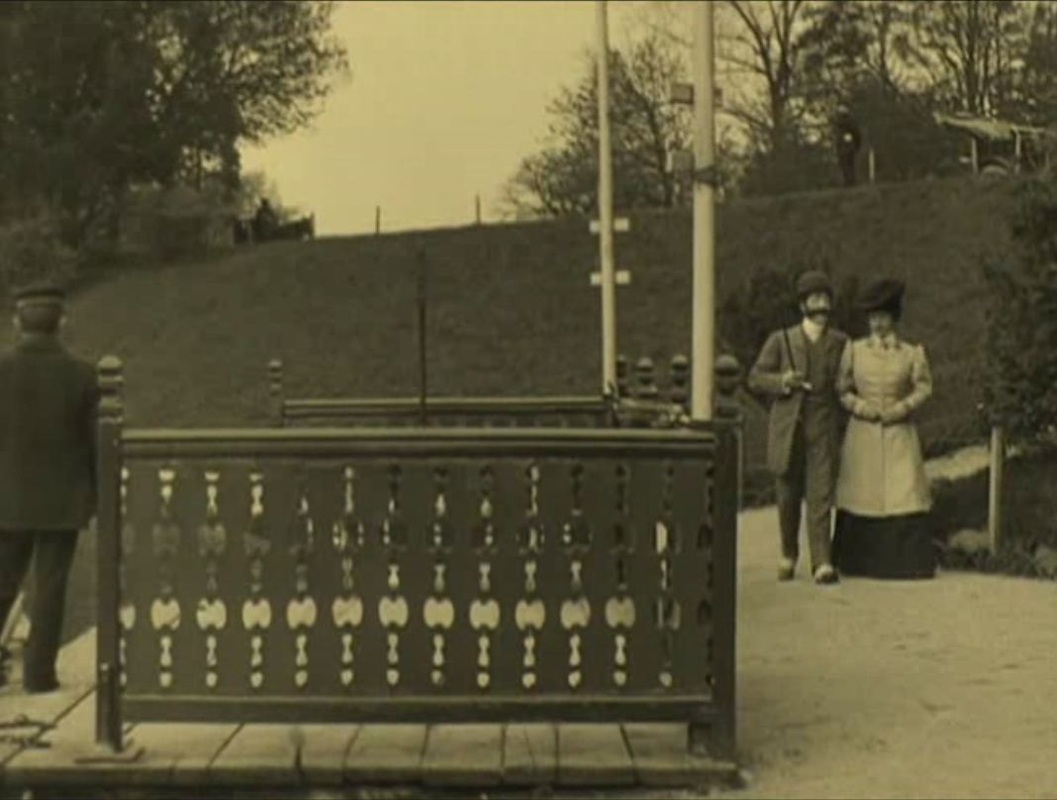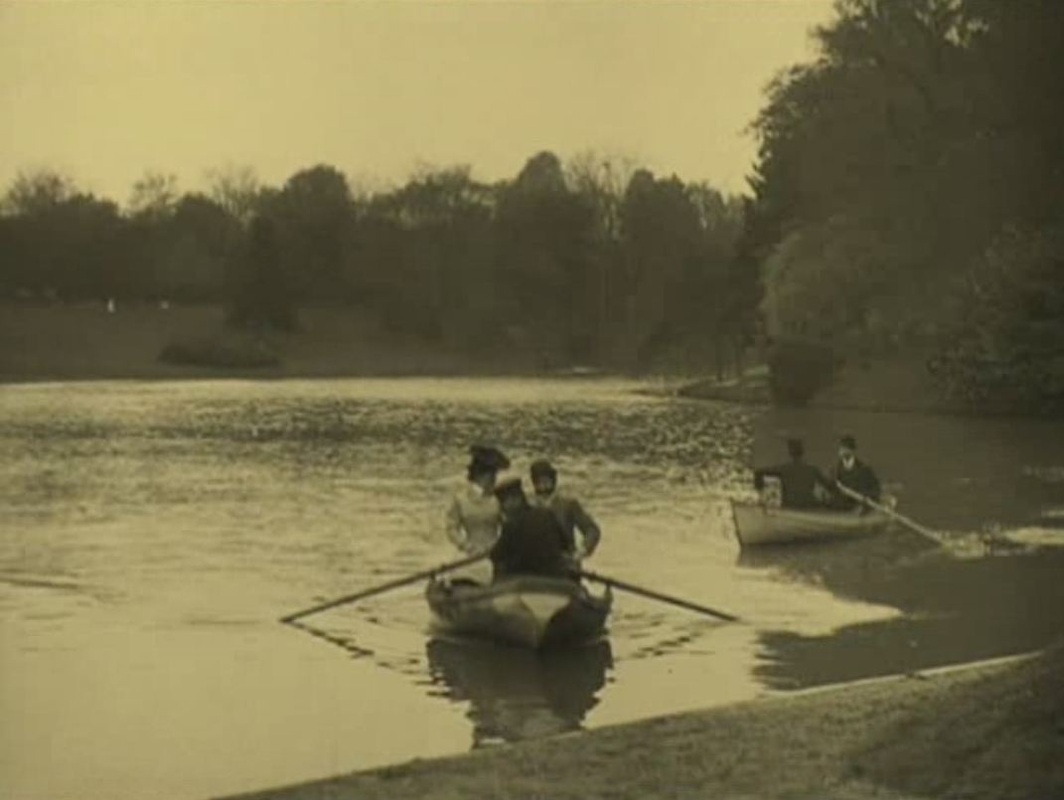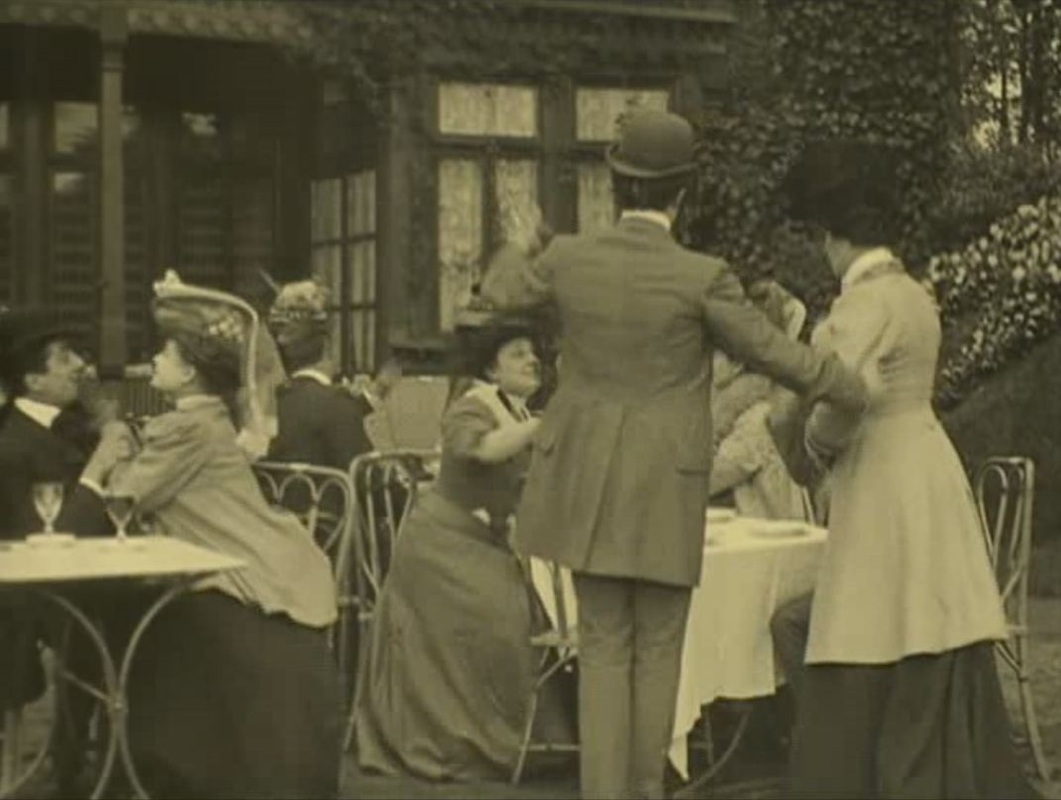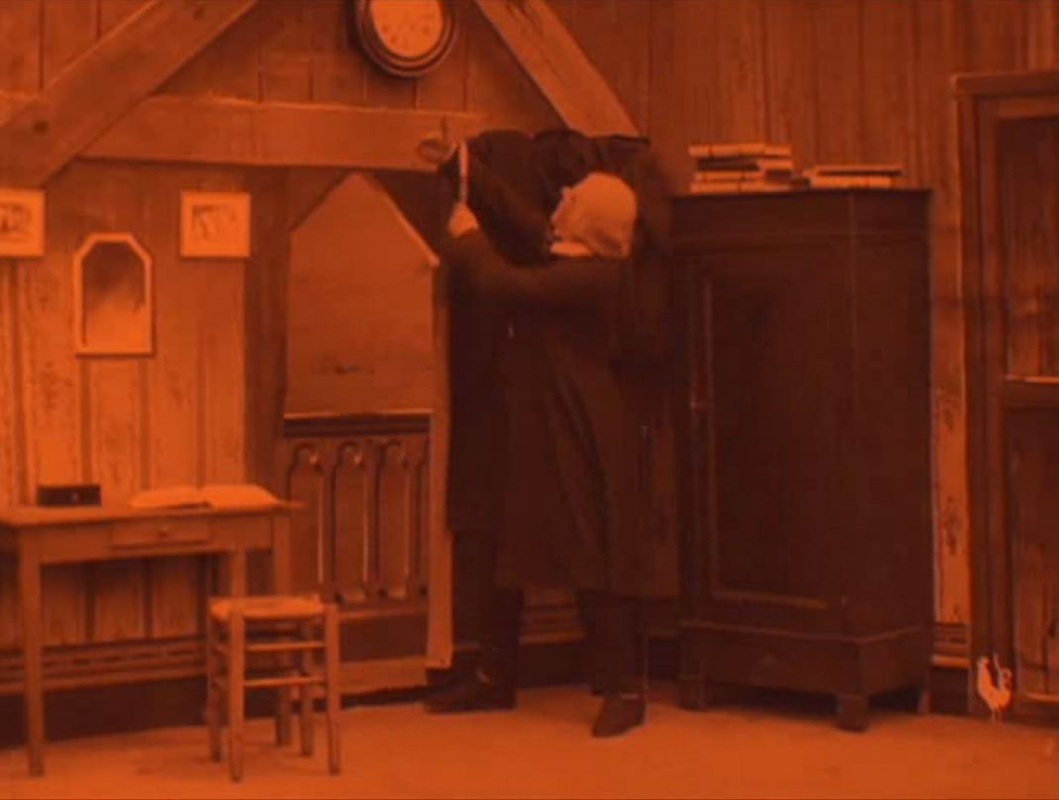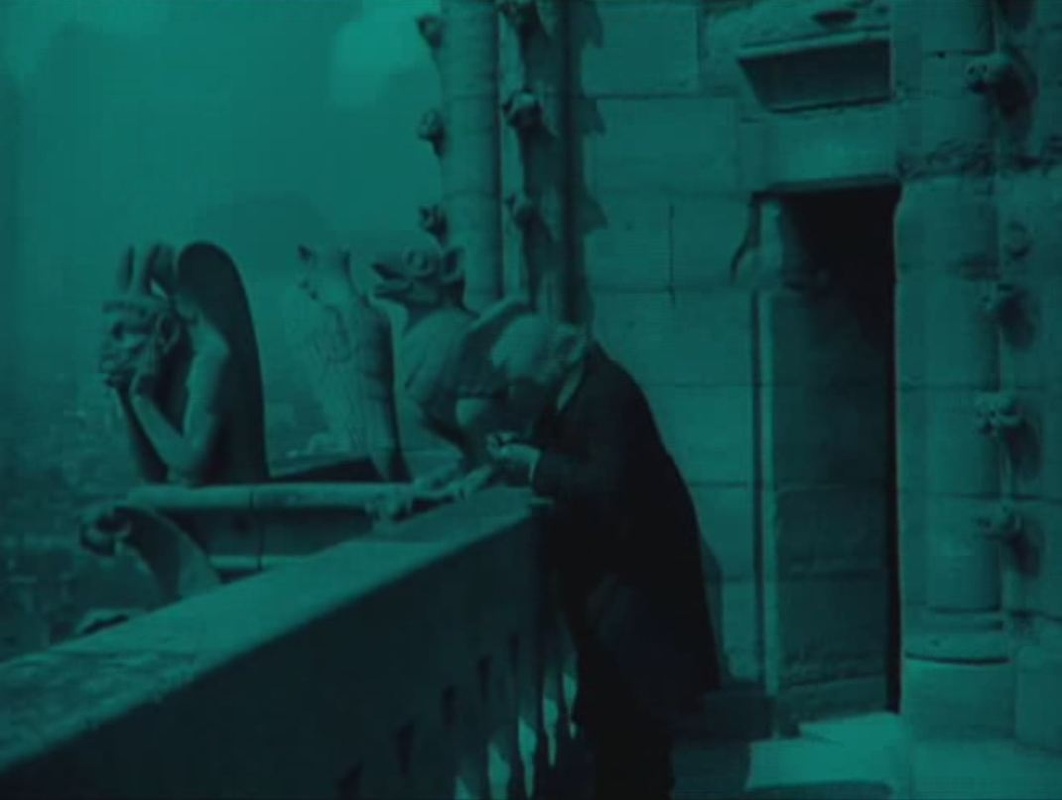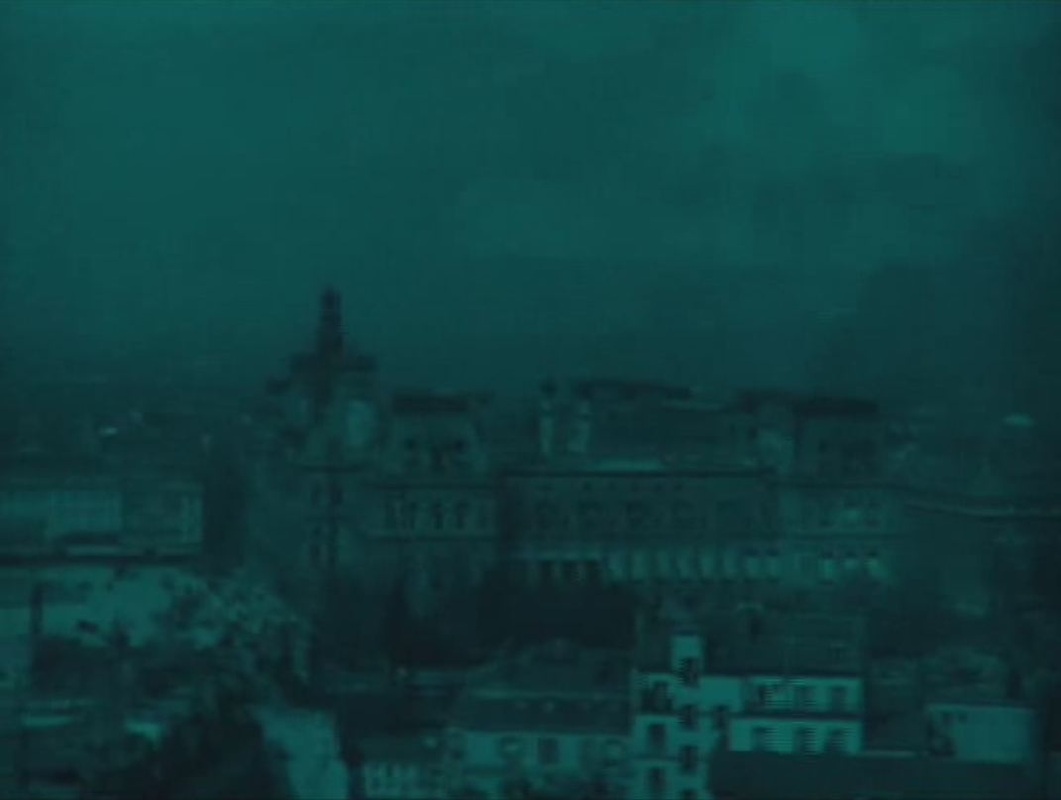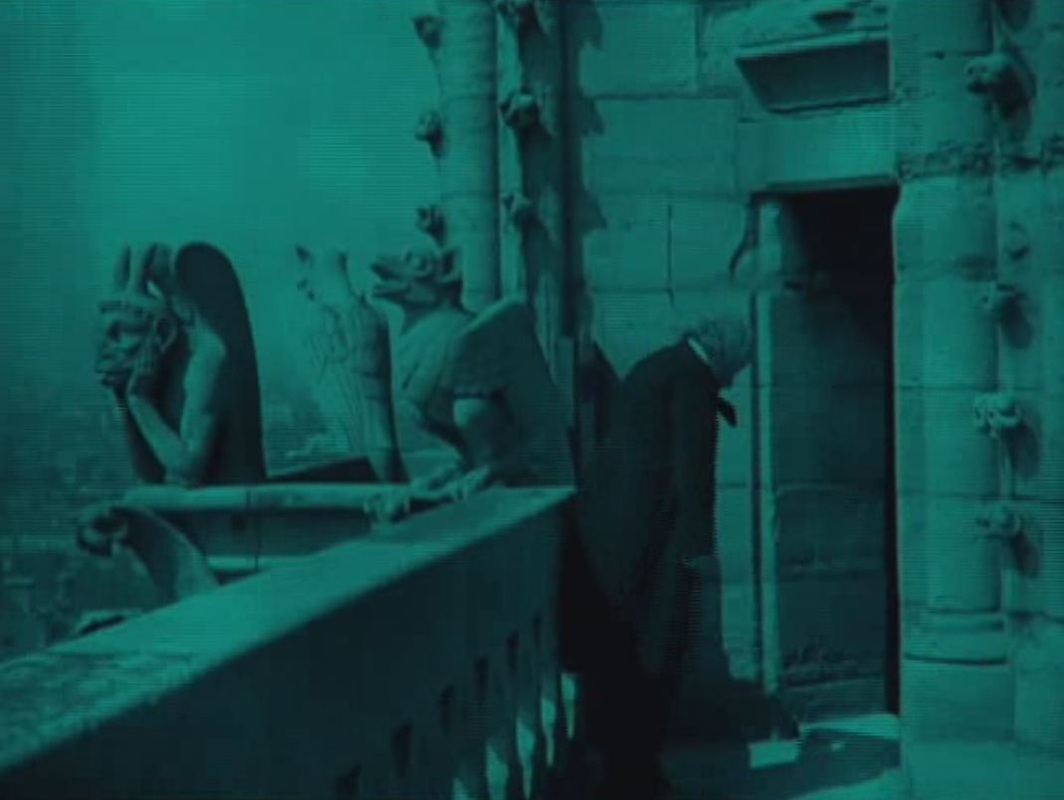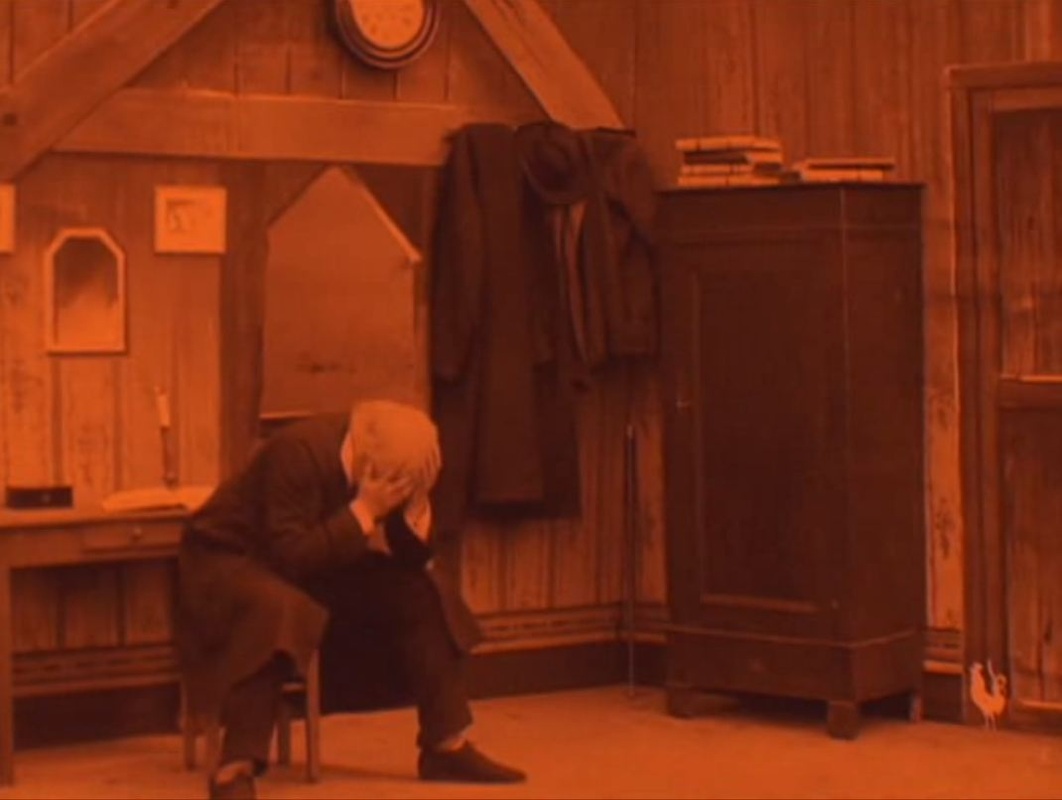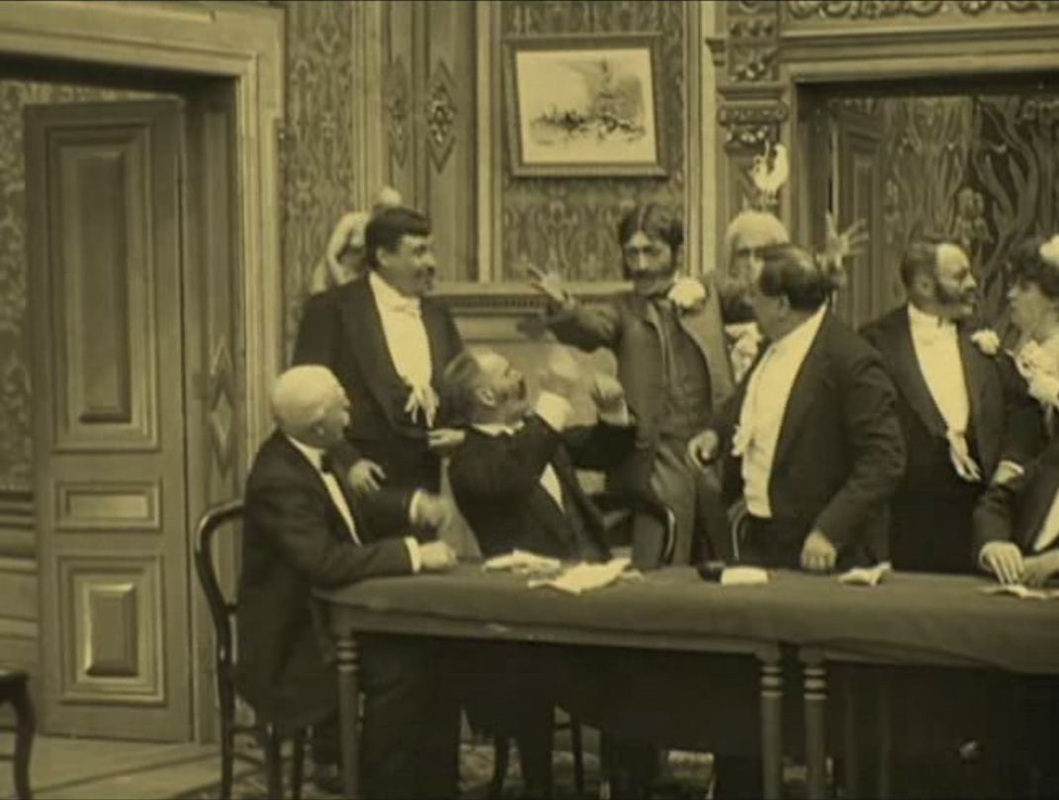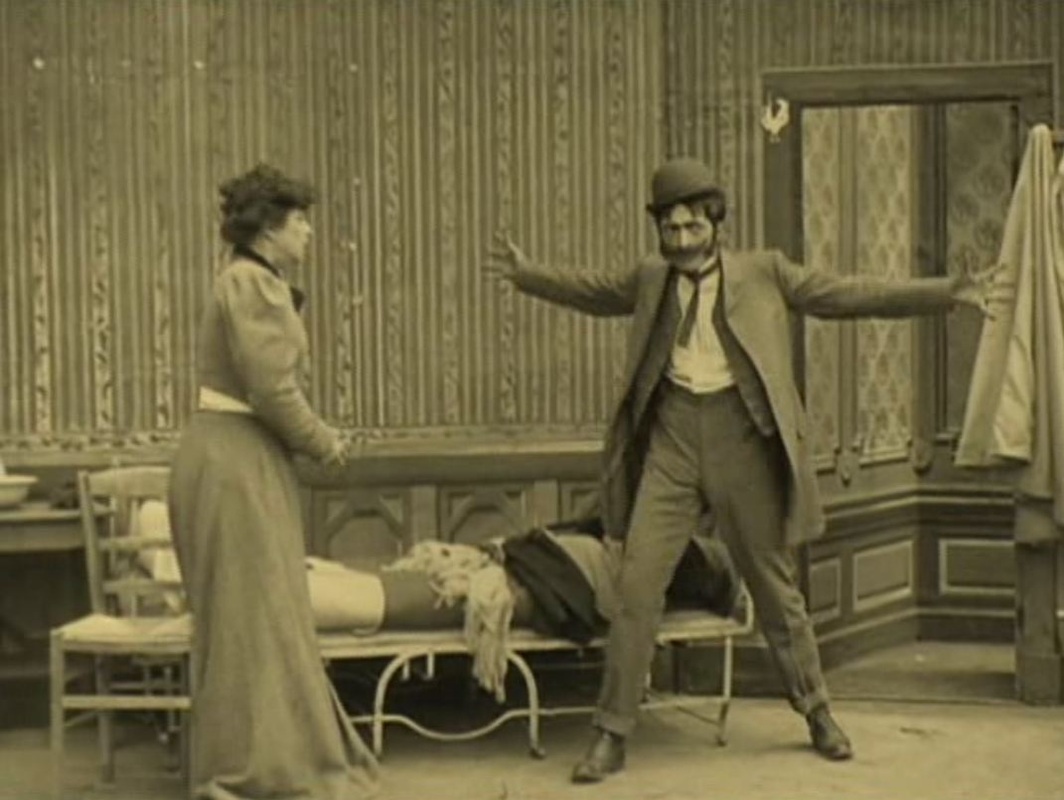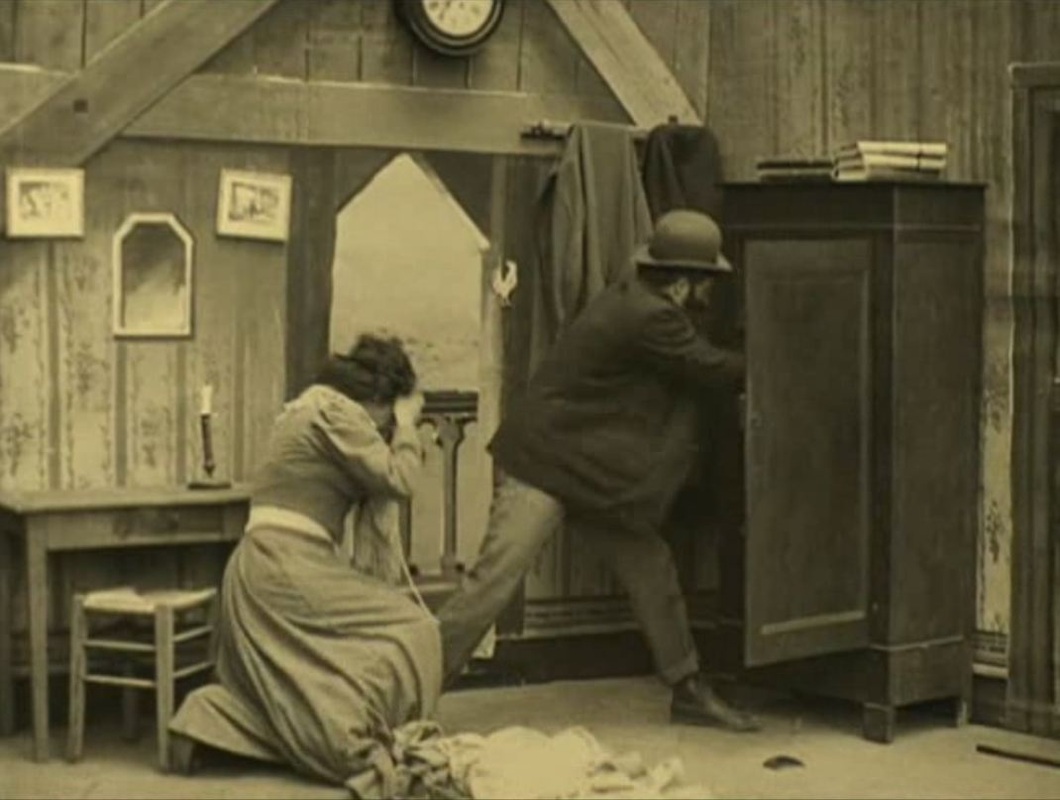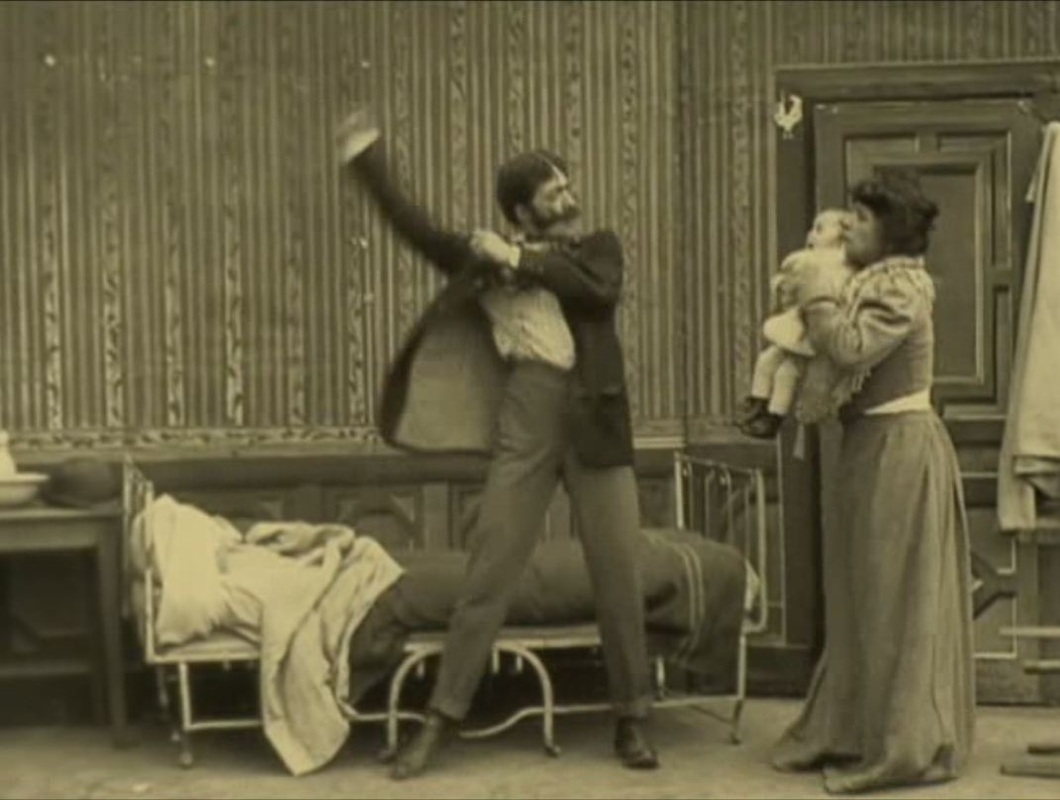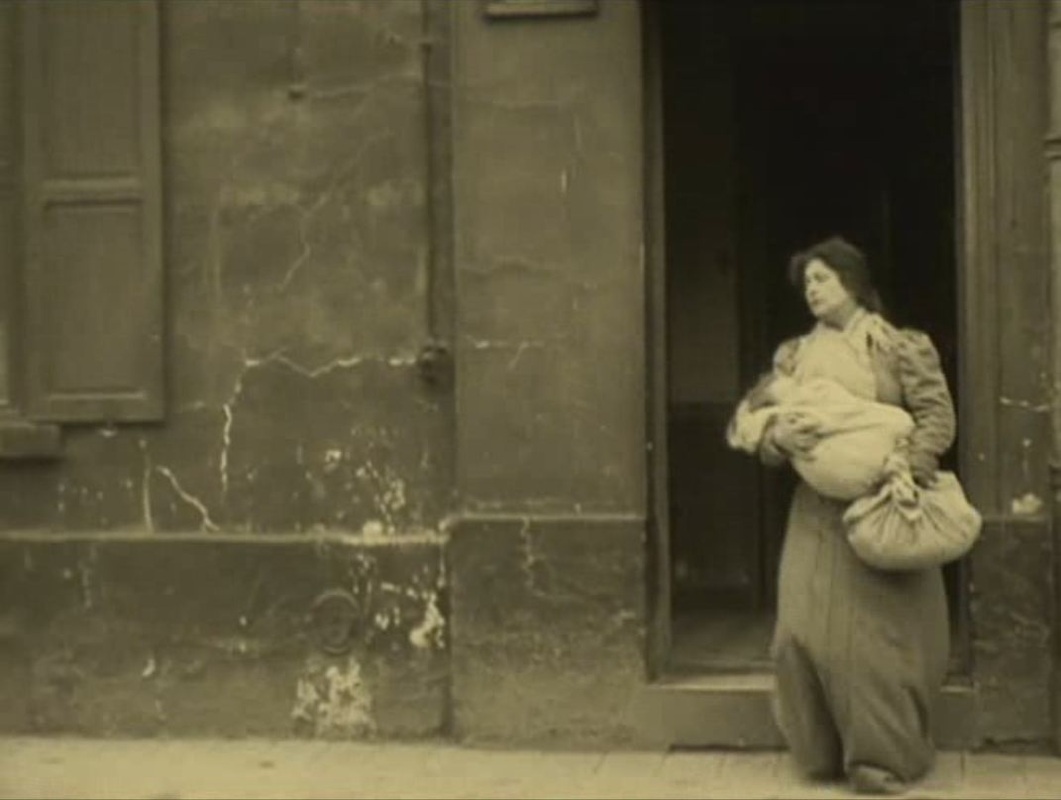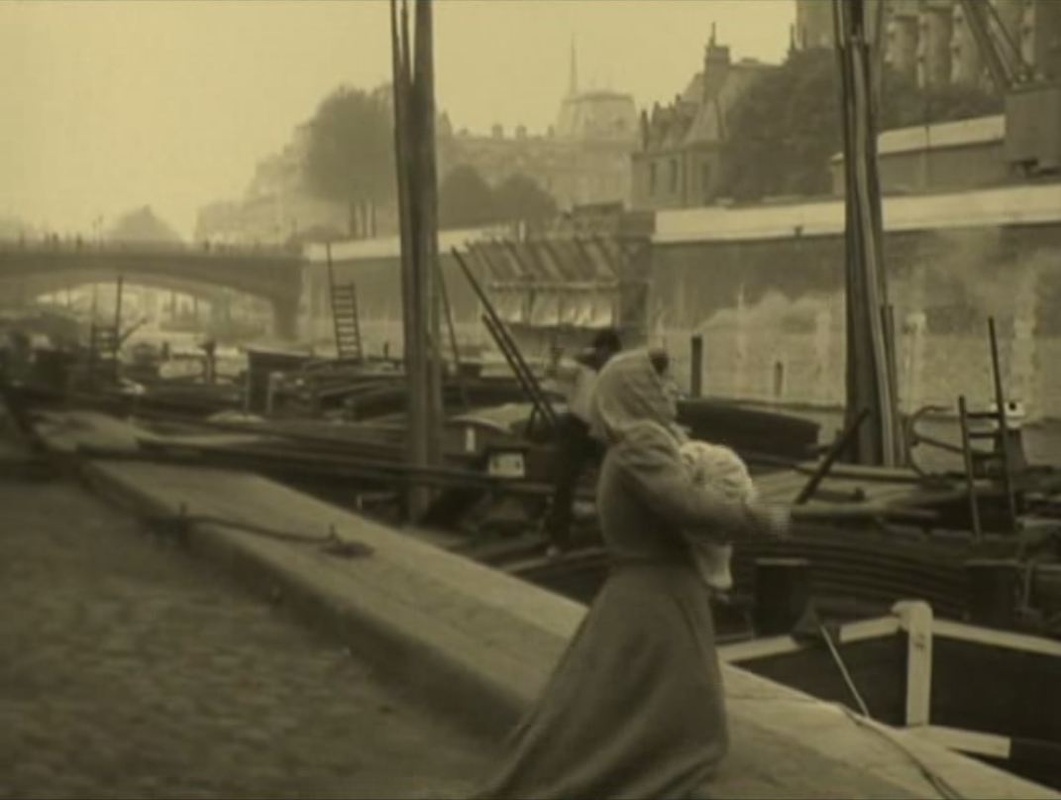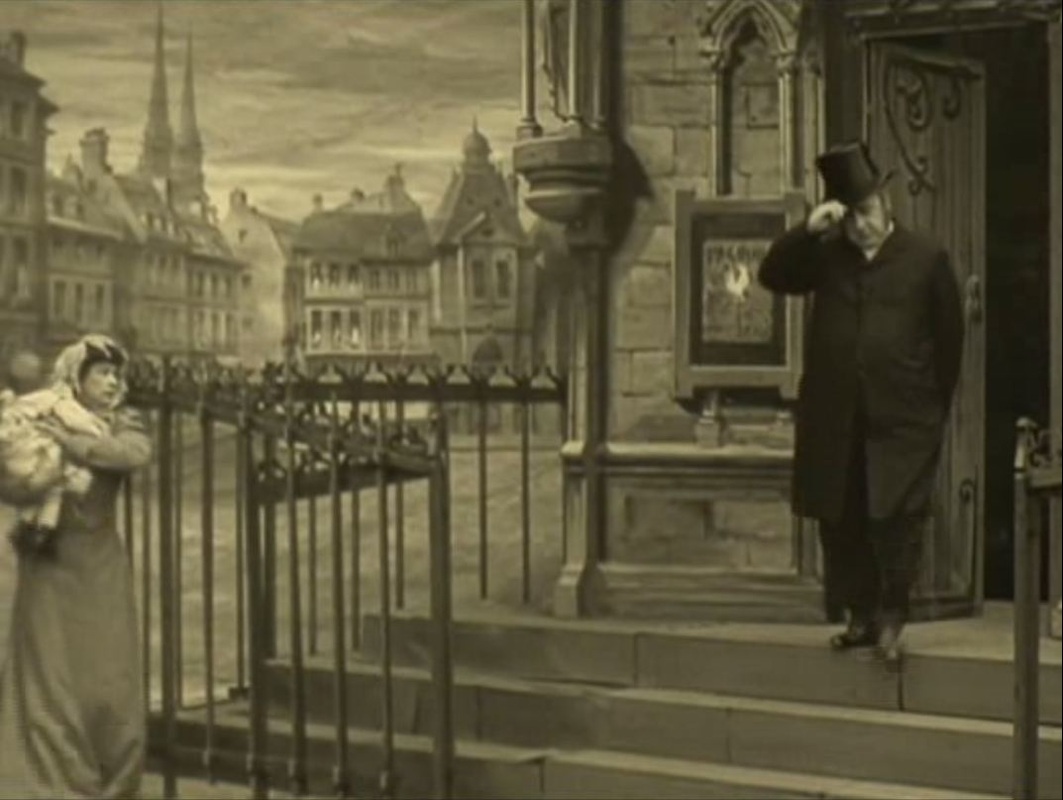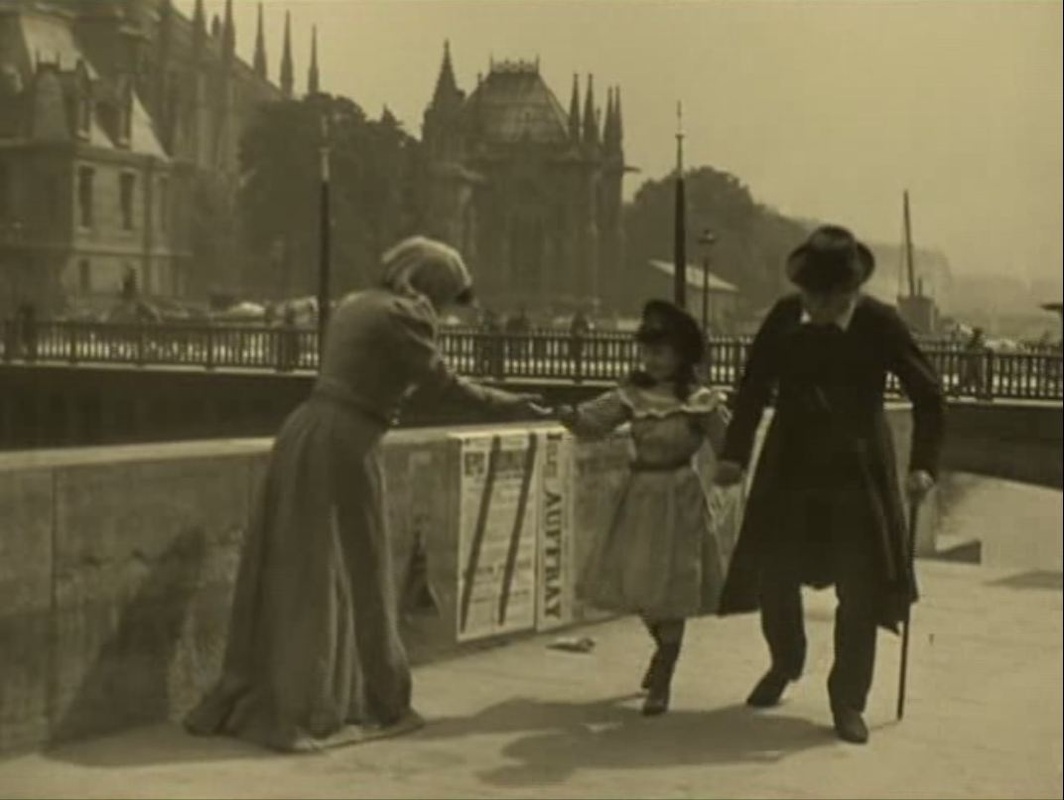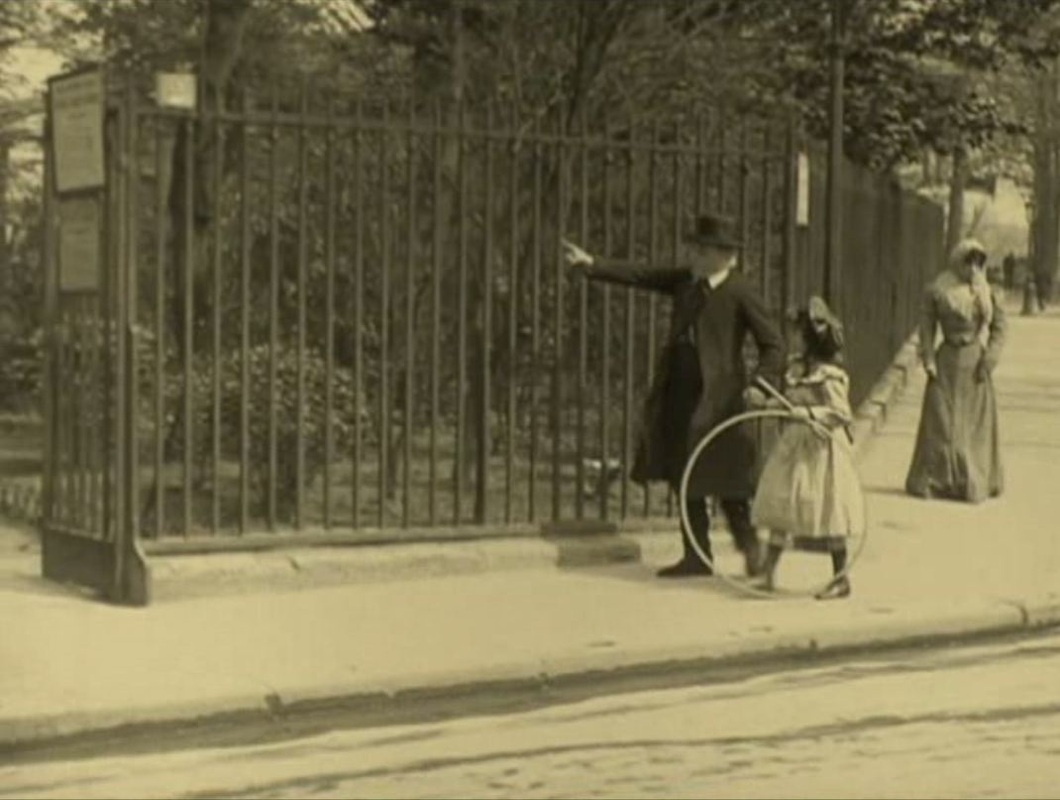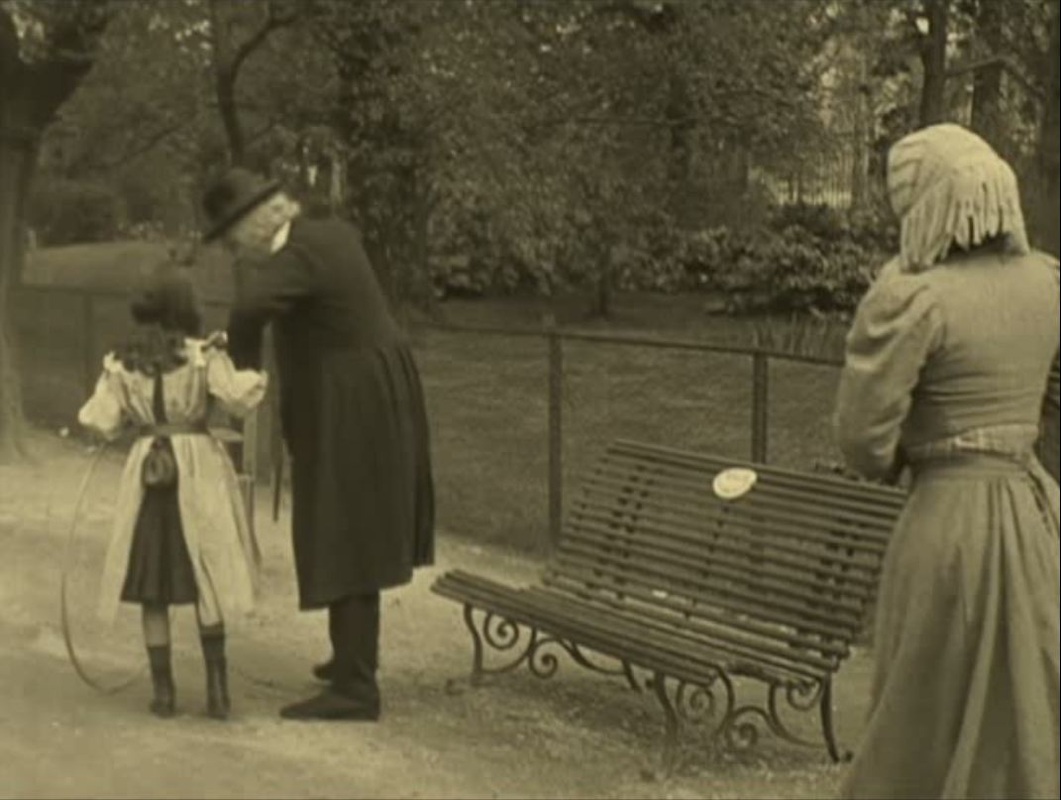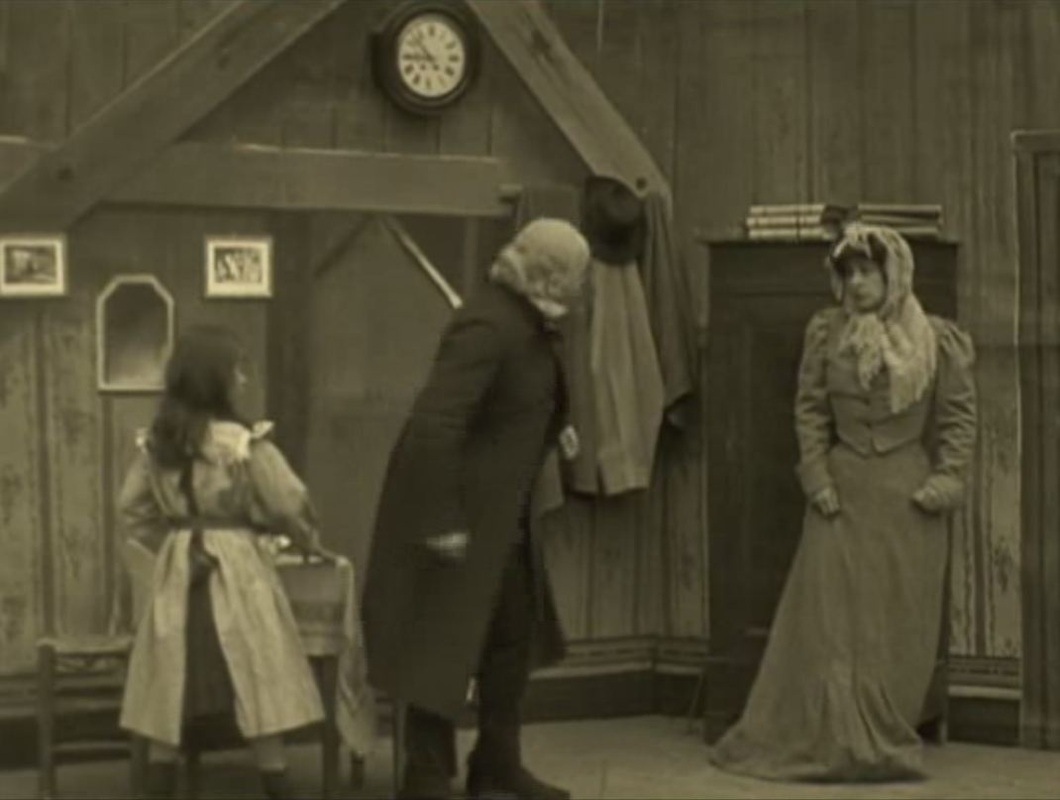Capellani in Paris (and sometimes in Vincennes)
This post is mainly about the identifiable locations in six urban melodramas made by Albert Capellani for Pathé between 1906 and 1911: La Loi du pardon, La Fille du sonneur, Les Deux Soeurs, L'Homme aux gants blancs, L'Assommoir, and L'Epouvante. The last three were made by the Société Cinématographique des Auteurs et Gens de Lettres, which Capellani headed after 1908. The main building of the SCAGL can be seen below, to the left, and here:
Often, when a Pathé production wanted views of real buildings on real streets, convenience dictated that they took the camera out of the studio and filmed on the street just outside.
I have already mapped this practice for Max Linder's films in Vincennes (here), where the main Pathé studio was situated - on the rue du Bois:
There are similar instances in other Pathé productions. Here is the avenue des Minimes, in Dix femmes pour un mari (1905) and L'Insaissable Pickpocket (1908):
Here is the avenue du Petit Parc (nos 18 & 19), in Rigadin a l'âme sensible (1911) and La Doctoresse (1911):
Here is the avenue de la Villa (now avenue Franklin D. Roosevelt), in La Course des sergents de ville (1907) and La Grève des nourrices (1907):
And here is the rue Louis Besquel in Le Cheval emballé (1908) and Bébé victime d'une erreur judiciaire (1912):
This is the rue Louis Besquel in Capellani's L'Homme aux gants blancs (1908):
This episode from L'Homme aux gants blancs is an exception among the films on the recent Capellani dvds (see here and here) because it is almost the only use of an identifiable Vincennes location in those films. It is an exception, also, among films shot on the rue Louis Besquel in being a scène dramatique rather than comique.
Like the six other examples above, and like all of the Linder films, most of the Pathé films using local streets that I have seen are comedies. Staying local may just be a function of genre - related to how melodramas are more interested in differentiating places, so they spread themselves further, or related simply to budget (were comedies cheaper?).
Or it may be that the streets around the Pathé studio were peculiarly conducive to comedy. In my piece on Linder I signalled the peculiar architecture of some houses on the rue Louis Besquel (e.g. here), but should have said more clearly that some of those buildings are just plain comical. For example, here is another man in white gloves outside 32 rue Louis Besquel, the same building we see to the left in the view above from L'Homme aux gants blancs:
Like the six other examples above, and like all of the Linder films, most of the Pathé films using local streets that I have seen are comedies. Staying local may just be a function of genre - related to how melodramas are more interested in differentiating places, so they spread themselves further, or related simply to budget (were comedies cheaper?).
Or it may be that the streets around the Pathé studio were peculiarly conducive to comedy. In my piece on Linder I signalled the peculiar architecture of some houses on the rue Louis Besquel (e.g. here), but should have said more clearly that some of those buildings are just plain comical. For example, here is another man in white gloves outside 32 rue Louis Besquel, the same building we see to the left in the view above from L'Homme aux gants blancs:
Actually, I have only found one other non-comic film using these local streets, Deux petits Jésus, here on the rue Villebois Mareuil:
Of the two urban comedies by Capellani that I can find in the online catalogue of Pathé films, one is Les Apprentissages de Boireau (1907), part of a series of more than seventy Boireau films (mostly without a credited director). From what I can see of this film's exteriors it seems to conform to the comic convention of shooting in Vincennes. The other is Pour voir Paris (1911), shot in Paris, evidently.
My impression that Capellani was less tied to the vicinity of the studio may be an accident of genre, then, or it may be an accident of chance, and perhaps when more emerges from the Pathé vaults we may see that Capellani was, no less than others at Pathé, a local Vincennes filmmaker.
My impression that Capellani was less tied to the vicinity of the studio may be an accident of genre, then, or it may be an accident of chance, and perhaps when more emerges from the Pathé vaults we may see that Capellani was, no less than others at Pathé, a local Vincennes filmmaker.
In the meantime, we can see in two of his scènes dramatiques from 1906, La Loi du pardon [The Law of Forgiveness] and La Fille du sonneur [The Bellringer's Daughter], evidence of an inclination to venture out from Vincennes, in the first case only just across the city limits into the 19e arrondissement, in the second into the heart of Paris and across to the other side.
These two films were singled out by Victorin Jasset in 1911 as early examples of 'scènes sentimentales'. Rightly, he found La Loi du pardon 'banal' and La Fille du sonneur 'more complex', from a dramatic point of view. La Loi du pardon comprises eight shots, each a self-contained scene;
La Fille du sonneur comprises twenty-four shots spread across seven sequences, with only the last of them a self-contained, single-shot sequence. (See the sequence-by-sequence breakdown in an Appendix to this post.) In their endings the films come together as very similar exemplars of the genre, with in each case the young girl (the same actress in both films, I think) soliciting forgiveness for the wayward mother, in the first case from her husband, in the second from her father:
In looking at how the films use Paris, we shall see that La Fille du sonneur is indeed more complex but that La Loi du pardon is not entirely banal, from a topographical viewpoint, though it has only two exteriors:
A mother is discovered by her husband replying to a letter from her lover and is sent from the house. The court decides that the father will have custody of the child, but without her mother the child ails. The mother finds a means to be by her child's bedside but is discovered by the father. The child brings about the reconciliation of her parents.
Set against its three studio-made interiors (a drawing room, a bedroom and a courtroom), La Loi du pardon has two real exteriors, a park and a street. This is the parc des Buttes Chaumont, in Paris's 19e arrondissement:
Set against its three studio-made interiors (a drawing room, a bedroom and a courtroom), La Loi du pardon has two real exteriors, a park and a street. This is the parc des Buttes Chaumont, in Paris's 19e arrondissement:
The park was very close not to the Pathé studios but to those of their rival, Gaumont. All scenes of children playing in a park in a Gaumont film seem to have been shot in the Buttes Chaumont, as here in Une héroine de quatre ans (Alice Guy 1907) and Le Cerceau magique (Emile Cohl 1908):
For a Pathé production to use the Buttes Chaumont as location was not, forasmuch, an invasion of territory, because this is not just the local park of the 19e arrondissement but a landmark of Paris as a whole. A 1912 Pathé documentary on Paris et ses monuments included the Buttes Chaumont alongside the Arc de Triomphe and Notre Dame de Paris among the splendours of the city.
Capellani's second choice of location is motivated by the first, an apartment building overlooking the parc des Buttes Chaumont.
Capellani's second choice of location is motivated by the first, an apartment building overlooking the parc des Buttes Chaumont.
The building we see across the street, at no.61, was from the year before and by the same architect, and together the two illustrate the rise of the Buttes Chaumont as a district for the well-off bourgeoisie.
Gaumont films in the following ten years would make the most of the new buildings by the park when evoking such a milieu. I have already discussed (here) the use in several Gaumont films of the building (from 1910) on the corner of the rue Manin and the rue Jean Ménans, below left, and below right we can see 59 rue Manin again, in a Gaumont film from 1910:
In 1909 Louis Feuillade remade La Loi du pardon for Gaumont. This version, called La Possession de l'enfant, was topographically more complex than the Pathé film, presenting the real exteriors of three different domiciles: the comfortable family home from which the wife has been ejected; the equally comfortable home of the husband's mother, from where the wife abducts her son; and the lower-class apartment in which the mother and child live in poverty:
Feuillade's locations illustrate well the territorial tendencies of Gaumont productions, each of them local to the studios - the family home, on the rue de la Villette, is in fact an entrance to the Cité Elgé. It is possible, even, to read the choice of 61 rue Manin for the grandmother's home as a riposte of sorts to Capellani, because this is the building we see across the street in La Loi du pardon. In La Possession de l'enfant we see no. 59 across the street. These two views are, in fact, across a gap of three years, shot and countershot:
This vis-à-vis is probably just a coincidence, and I have only presented it as an illustration of Capellani's roving eye for locations beyond Vincennes. Without going all the way to the Buttes Chaumont he could easily have found a building denoting bourgeois comfort in Vincennes, and could as easily have found there a lake in front of which to sit father and daughter. Here, for example, are a lake in Vincennes, from his Drame passionnel (1906), and the splendid apartment building on the rue Louis Besquel, from L'Homme aux gants blancs (1908):
Made in the same year as La Loi du pardon, La Fille du sonneur travels beyond the 19e, into the centre of Paris and out towards the city's western edge:
The choice of central location, Notre Dame de Paris on the île de la Cité, is of course determined by the story:
The daughter of a bellringer at Notre Dame leaves her father to go and live with her lover. She has a child with him, and after he has lost money at gambling he forces her to help him rob her father's lodging. The lover then ejects her, and their child, from their home. In despair she is tempted to throw herself into the Seine but instead leaves the child on the steps of Notre Dame to be found by her father. Years pass and one day the woman, reduced to begging, sees her father and daughter on the street. She attempts to be reconciled with her father and after an initial rejection the film ends with the family united.
The daughter of a bellringer at Notre Dame leaves her father to go and live with her lover. She has a child with him, and after he has lost money at gambling he forces her to help him rob her father's lodging. The lover then ejects her, and their child, from their home. In despair she is tempted to throw herself into the Seine but instead leaves the child on the steps of Notre Dame to be found by her father. Years pass and one day the woman, reduced to begging, sees her father and daughter on the street. She attempts to be reconciled with her father and after an initial rejection the film ends with the family united.
It would seem impossible to make a film around a bellringer at Notre Dame without evoking Victor Hugo's Quasimodo, in Notre Dame de Paris (1831), but Capellani's bellringer is as unlike Quasimodo as one can imagine - a dignified, white-haired old man, and not a monstrous twenty-year-old:
|
Capellani's film implicitly contrasts the banality of his modern family melodrama and the Gothic excesses associated with this chosen setting. Five years later, in his adaptation of Hugo's novel, he will have, I imagine, given full rein to Gothic excess. I imagine, because all that I have been able to see of this film is the poster, right, and a few stills, such as the above, right, and below:
|
When I do get to see it I'll be particularly keen to see what use is made of the actual cathedral, and to contrast this use with the cathedral in La Fille du sonneur. (According to Didier Nourisson, p.149, the film plays down the role of the cathedral, with only a few shots of exteriors and upper galleries - not unlike La Fille du sonneur, it seems.)
La Fille du sonneur comprises 24 shots, though if, as seems likely to me, the version of the film available is missing its intertitles, it may be that I should count 25 shots rather than 24 - see the Appendix, below, for a detailed discussion of this point.
Capellani uses both studio-constructed interiors and real exterior locations, as well as one studio-constructed exterior. The principal setting, the cathedral of Notre Dame, is presented through a combination of these. In shot 2 the daughter leaves the lodgings high up in the tower and in the next shot, after a moment (giving her time to come down the 397 steps), emerges at ground level, passing as she does so from studio to real world:
La Fille du sonneur comprises 24 shots, though if, as seems likely to me, the version of the film available is missing its intertitles, it may be that I should count 25 shots rather than 24 - see the Appendix, below, for a detailed discussion of this point.
Capellani uses both studio-constructed interiors and real exterior locations, as well as one studio-constructed exterior. The principal setting, the cathedral of Notre Dame, is presented through a combination of these. In shot 2 the daughter leaves the lodgings high up in the tower and in the next shot, after a moment (giving her time to come down the 397 steps), emerges at ground level, passing as she does so from studio to real world:
The doorway by which she leaves the cathedral is not the one that leads to the towers. This is the famous Porte rouge (c. 1270), on the rue du Cloître Notre Dame, a place recognisable even without the support of colour or a view of the distinctive carvings above the door.
The daughter doesn't linger, however, in Gothic Paris. Elegantly dressed, she has an assignation in a more modern world - specifically, in the rococo elegance of the place Vendôme (1698-1720):
Capellani likes this locale, returning to the same corner of the place Vendôme the next year, in Les Deux Soeurs, to visit a fashionable shoemakers:
(This shop has a larger place in the cultural history of Paris, thanks to a passage in Raymond Roussel's Comment j'ai écrit certains de mes livres where he explains how he generates the phrase 'Hélice tourne zinc plat se rend (devient) dôme' from the shop's address: 'Hellstern, 5 place Vendôme. That said, the address was not actually no.5 but no.23.)
The lover of the bellringer's daughter takes her by taxi to the Bois de Boulogne, where they cross by rowing boat to the fashionable restaurant on the island:
The lover of the bellringer's daughter takes her by taxi to the Bois de Boulogne, where they cross by rowing boat to the fashionable restaurant on the island:
The Chalet des Iles was built in Berne in the 1850s and then transported piece by piece to Paris as a souvenir of Helvetic Romanticism. Here is the setting, c. 1862, from Zola's La Curée:
This is where the dinner to celebrate the completion of Zola's Rougon Macquart cycle was held in 1893, but it was also associated with more intimate encounters. Proust's narrator had hoped to seduce Mlle de Stermaria there, in Sodome et Gomorrhe. In La Fille du sonneur, the couple share a drink with carousing friends on the terrace, then he leads her inside, to a more private space:
The third sequence of La Fille du sonneur shows the woman's father in his tower at Notre Dame, anxious that she has not returned. Another transition from studio interior to real exterior is effected, this time more immediately. Through the doorway at the back of the interior space we can see a balustrade. The next shot takes us out, via a cut on the action, into the space beyond that doorway, and onto a famous belvedere over Paris:
Here the film enters an iconographic world created not so much by Hugo's novel and its illustrators as by the artists and photographers who recorded the restorations of the cathedral by Viollet-le-Duc and his associates. The famous chimera, le stryge, as illustrated by Charles Meryon, above right, was imagined by Viollet-le-Duc and sculpted by Joseph Pyanet in the 1850s, twenty years after the publication of Hugo's novel.
Capellani follows this with a panorama over Paris that includes the one background detail isolated by Meryon, the Tour Saint Jacques:
Capellani follows this with a panorama over Paris that includes the one background detail isolated by Meryon, the Tour Saint Jacques:
This right-to-left pan over Paris, from the eglise Saint Gervais, past the Hôtel de ville and the Hôtel Dieu to finish looking towards the dome of the Institut, continues a tradition of panoramic views documenting the city, but this must be one of the first to have so strong a narrative motivation. The accompanying plot summary develops the theme:
'Paris, the great city, stirred by so much misery and so much passion, stretches out beneath him. His anxious gaze searches the silent crowd of countless pointed rooftops. Where is his daughter, his child? Which way, in this immensity? Little by little, the silhouette of the city fades into the night. The old man, alone beside these huge gargoyles, like impassive monsters, falls back, overwhelmed, his head in his hands.' (See here for the full text of the summary, in French.)
The sequence ends back inside, after a second view of the stryge and the open-beaked bird, reiterating how strongly Notre Dame is identified with these 'monsters of modernity' (as Michael Camille calls them):
'Paris, the great city, stirred by so much misery and so much passion, stretches out beneath him. His anxious gaze searches the silent crowd of countless pointed rooftops. Where is his daughter, his child? Which way, in this immensity? Little by little, the silhouette of the city fades into the night. The old man, alone beside these huge gargoyles, like impassive monsters, falls back, overwhelmed, his head in his hands.' (See here for the full text of the summary, in French.)
The sequence ends back inside, after a second view of the stryge and the open-beaked bird, reiterating how strongly Notre Dame is identified with these 'monsters of modernity' (as Michael Camille calls them):
The following sequence has four studio interiors (a gambling den, the garret occupied by daughter and lover, the bellringer's lodging, the garret again) and one real exterior, showing the doorway of the building by which the daughter and her child leave, ejected by the lover:
Unsurprisingly, I have not been able to identify this exterior, though there were - and are still - streets of this type near the Vincennes studio (e.g. the rue du Moulin, now rue Jean Moulin). The type of street matches the melodramatic moment, as here, in Denola's Deux petits Jesus, a Pathé film from 1910:
Or here, in Capellani's version of Zola's L'Assommoir (1908):
As I have suggested, La Fille du sonneur may be missing its intertitles, and we might imagine a title that named the location, drawing a topographical contrast between the home in the cathedral that the woman had shared with her father and this sordid dwelling in a working-class district. But the contrast made in the film as it stands is between types of doorway. More specifically, between the types of doorway through which the woman exits, and between the ways she is dressed each time:
A slight change in apparel suggests that some time has passed before the next shot, in which the woman approaches the river in despair:
This cannot be the first such moment in film melodrama, and certainly isn't the last. Denola's desperate mother finds herself in a similar attitude four years later, as does Kirsanoff's heroine, twenty years on:
The bellringer's daughter contemplates suicide on the quai de Montebello, in the shadow of Notre Dame. Dissuaded by a nearby worker, the next shot finds her at an entrance to Notre Dame, where she leaves her child:
Between these two shots she has gone from the water's edge up to street level, then along the street to the pont au Double, crossed to the île de la Cité and found her way to this doorway into Notre Dame.
She has also moved from the real world back into the studio. This last shift is striking, given that earlier Capellani had used a real doorway into the cathedral, rather than an approximate reconstruction thereof:
The story suggests that these are supposed to be the same place, since she couldn't expect her father to find the child at just any entrance to the cathedral, but the reconstruction is all wrong: on a corner by a large square rather than half way along the north wall; three steps rather than six; and the architectural details are very different. (Also, the earlier shot doesn't feature a proprietary emblem, the Pathé cock placed on the notice board by the reconstructed door.) The corner-position corresponds better to the actual access to the towers, but if that is supposed to be the place du Parvis Notre Dame then the entrance is at the wrong corner.
Of course at this point we are supposed to be entirely absorbed by the drama of a woman abandoning her child, and not distracted by topographical minutiae. Still, it is curious that this second scene at the cathedral entrance was not shot like the first at the actual cathedral. Since Capellani did film inside the cathedral, up in the north tower, I assume he had official permission, but perhaps that permission didn't extend to depositing live babies on the cathedral steps, however briefly.
Surely a missing intertitle signalled that the next sequence is set some ten years later. The woman is now a beggar, and is again on the quai de Montebello, but to the west of the pont au Double rather than to the east, and at street level rather than by the water's edge.
Trying not to be distracted by the incongruously placed electoral posters for the anti-semitic nationalist Jules Auffray (n.b. he lost his seat as député in this election), we note the clear view of Notre Dame, from which her father and daughter have just come. After they pass her she follows them to a park:
To the Jardin des Plantes, actually. They have gone from the top left hand corner of the map below to the bottom right hand corner, about a mile's walk:
|
There were perfectly adequate public spaces nearer to the cathedral in which to film, such as the square de l'Archevêché, just behind Notre Dame (right), so the choice of the Jardin des Plantes is an odd one, especially as the sequence makes no use of the Jardin's distinctive layout or features. We might at least have expected a glimpse of some animals:
|
|
Perhaps Capellani had originally planned to exploit these resources, and then realised that the sight of camels and elephants would be detrimental to the tragic tone of the episode.
Another theory (my wife's) is that they went to the Jardin des Plantes just to please 'la petite Ransart', the girl who plays the granddaughter - a reward for all her hard work. |
In the film, all we see of these vast and varied gardens is one of the lesser entrances, at the top of the rue Buffon, and a bench:
Compared with Notre Dame and the Bois de Boulogne, even with the place Vendôme, this last location brings with it no associations that might justify its choice. It wasn't chosen for convenience, since there were suitable gardens nearer to where they had already been shooting, nor was it chosen out of topographical realism, since in walking west along the quai de Montebello the bellringer and his granddaughter are heading away from the Jardin des Plantes, not towards it:
An anonymised Jardin des Plantes is merely generic, like the unidentified street where the daughter had lived with her lover.
Any thematisation of place in this film will be more interested, of course, in the place at its centre, Notre Dame. The views of it and from it make this a Paris film of a certain type, a tourist cinema displaying the landmarks and monuments of tourist Paris, not the local cinema that typifies Pathé's 'école de Vincennes'.
Any thematisation of place in this film will be more interested, of course, in the place at its centre, Notre Dame. The views of it and from it make this a Paris film of a certain type, a tourist cinema displaying the landmarks and monuments of tourist Paris, not the local cinema that typifies Pathé's 'école de Vincennes'.
|
Vincennes itself could of course be visited by tourists, and even by cine-tourists. The Edison company filmed there the visit of Edward VII and Président Loubet to review troops in 1903 (as on the postcard, right).
Many visitors came in 1900 for the Paris Olympics, when several events took place at the Vélodrome de Vincennes, including cycling, football and cricket. Disappointingly, there is no film record of these (see The Bioscope on this, here). |
Aside from the Vélodrome, the chief attractions for visitors to Vincennes were the Bois de Vincennes, with its several lakes, and the Château. Here, in Mortelle idylle (1906), Capellani has been filming in the Bois de Vincennes, on the bridge that takes tourists across Lac Daumesnil to the Greek temple and grotto:
|
Capellani seems to be making the most of an opportunity: Georges Sadoul tells us (p.322) that filming in the Bois de Vincennes was banned in 1906 because of criminals pretending to be film crews as cover for their crimes.
For the 1909 film La Mort du duc d'Enghien en 1804, Capellani followed crowds of tourists to the Château de Vincennes to visit the actual places where the Duc d'Enghien was imprisoned, executed and buried: |
In his excursions into the Bois de Vincennes or to the Château, Capellani is the same cine-tourist who visits the Bois de Boulogne or Notre Dame in La Fille du sonneur. I suggested earlier that seeing more of his films may reveal a stronger attachment to Vincennes, but actually I doubt that. Given a choice, I suspect Capellani would go and film in Paris every time. L'Homme aux gants blancs, for example, despite its climax in Vincennes, is a film turned towards Paris. Its first location is a luxury hotel on the Cours la Reine, just down from the Grand Palais and the Champs Elysées:
Any one of Vincennes's many avenues could have provided a similar exterior, with plenty of buildings that could pass as the Hôtel du Palais - they'd just need to put up a fake name plate - but Capellani goes for the real thing. It has to be an authentic Paris hotel:
Later, when one of the hotel's servants has to telephone a Paris chemisier, the call is represented by a striking split-view moment centred on a view of the avenue de l'Opéra, contrasting the authentic city with the artifice of studio settings:
Three other exteriors in L'Homme aux gants blancs need identifying, all of which - the chemisier's, a 'night time restaurant' and a street outside a club - are positioned by the narrative as being more likely in Paris than not:
There are significant excursions into Paris in other Capellani films. Les Deux Soeurs (1907) features a very nice juxtaposition of shots: an impoverished woman is selling flowers outside the Grand Palais; in the next shot she meets her long lost and now better-off sibling, getting into her carriage outside a fashionable shoe shop on the place Vendôme:
The punchline is in the third shot, where the two sisters ride off in that carriage, past the Grand Palais:
Again, this film has exteriors to be identified, implicitly but not necessarily Paris:
L'Epouvante, from 1911, has only two real locations, the theatre at which the actress (played by Mistinguett) has been performing, and the apartment building in which she lives. The first is the Théâtre des Bouffes parisiens, rue Marigny, in the 2e arrondissement:
|
This still functioning theatre (see here) is identifiable from the poster announcing the play Xantho chez les courtisanes, which opened at the Bouffes parisiens in March 1910, starring Cora Laparcerie and written by her husband Jacques Richepin. (We might conclude that Mistinguett's persona in L'Epouvante is based on Cora Laparcerie, but in the film she doesn't seem to have a husband.)
The other location, the apartment building, is impossible to identify from the glimpses of the view from the balcony, but we can see that it is a high building, perhaps seven or eight storeys, signifying Paris rather than the lower-rise Vincennes. |
That said, few of the buildings visible from the balcony are particularly tall, suggesting Vincennes rather than Paris. I can't decide. Unlike the panorama from the tower of Notre Dame, this is not a view that helps to localise us:
A similarly unhelpful panorama from atop a high building appeared in L'Assommoir (1908):
The source novel places this building on the rue de la Nation (now the rue de Sofia, 18e), in the Goutte d'or district, the novel's principal location. Zola's precise delineations of topography are lost in the film adaptation, but La Goutte d'or is necessarily the principal setting of the film as well. That said, these generic aperçus of an impoverished milieu could be anywhere, even Vincennes:
Against these anonymous locales, Capellani sets one unmistakable Paris landmark, the parc des Buttes Chaumont:
I expect to find more of Paris in the several urban melodramas by Capellani that I haven't seen - four are described as having scenes in Paris - La Poupée de l'orpheline (1911), Le Rideau noir (1911), Péché de jeunesse (1911), Le Nabab (1913) - and possibly more of Vincennes.
In a different genre, there are exteriors representing Paris, and shot there, in the 1790s-set Le Chevalier de Maison Rouge (1914):
(The staircase in the image top right is in the cour de Rohan, 6e, see here.)
And from what I can see of the vignettes on the Pathé-Gaumont archive site, there are similar fragments of what looks like old Paris in other films set in the past - L'Evadé des Tuileries (1910), Le Courrier de Lyon (1911), La Bohème (1912) and Les Misérables (1913) - though from the vignettes I cannot tell which are real places and which are studio constructions like this:
And from what I can see of the vignettes on the Pathé-Gaumont archive site, there are similar fragments of what looks like old Paris in other films set in the past - L'Evadé des Tuileries (1910), Le Courrier de Lyon (1911), La Bohème (1912) and Les Misérables (1913) - though from the vignettes I cannot tell which are real places and which are studio constructions like this:
|
I have no substantial conclusions to draw from this overview of Capellani's Paris - I can't even say that there is a 'Capellani's Paris', in the sense that there is a 'Feuillade's Paris' (see here, here, here, here and here).
I would say that the reason he doesn't seem to be more often on the streets of Vincennes is that he doesn't make many comedies: his féeries keep him in the studio or in more bucolic environs (see right), and his melodramas, both modern and historical, take him into the city just west of Vincennes, as we have seen. |
Those of us who never tire of seeing what early cinema does with Paris are very glad of that.
Appendix: La Fille du sonneur, shot-by-shot
This ten-minute, 24-shot film comprises 7 sequences. The version available in Pathé's Coffret Albert Capellani has no intertitles, and though I am prepared to believe that audiences could work out quickly that there is a jump of about a year between sequences 3 and 4, and a jump of about 10 years between sequences 5 and 6, I doubt that the risk of confusion would have been taken.
In Drame passionnel (1906) and Les Deux Soeurs (1907), intertitles are used to signal similarly substantial passages of time:
This ten-minute, 24-shot film comprises 7 sequences. The version available in Pathé's Coffret Albert Capellani has no intertitles, and though I am prepared to believe that audiences could work out quickly that there is a jump of about a year between sequences 3 and 4, and a jump of about 10 years between sequences 5 and 6, I doubt that the risk of confusion would have been taken.
In Drame passionnel (1906) and Les Deux Soeurs (1907), intertitles are used to signal similarly substantial passages of time:
Furthermore, there is a moment in sequence 4, shot 16, where it seems obvious that an intertitle is missing. The robbery has just taken place, the bellringer's daughter has just gone, heading left from the doorway. Her lover has just held aloft the valuables he has stolen, and now he is about to leave:
Suddenly, in the next frame, he has disappeared, and moreover a hand is visible on the balustrade beyond the doorway:
That is the hand of the bellringer, returning. He cannot be arriving just as his daughter and her lover leave. He would have seen them. The jumpcut here, in which the lover disappears and the bellringer's hand appears, must be the trace of an ellipsis-marking intertitle, probably something like 'TERRIBLE DECOUVERTE', in the constative style of these intertitles from Drame passionnel (1906) and Les Deux Soeurs (1907):
(And if there was a title marking ellipsis where the jumpcut now is, wouldn't the two parts of this shot have to be counted as two separate shots, even if the set up is exactly the same?)
If I could be sure that La Fille du sonneur had no intertitles I would teach it very dfferently, as something like a proto-modernist play on perceptions of time. The film opens with the bellringer ringing, either marking the hour or signalling a moment in liturgical chronology, but he straightway consults his watch, as if he didn't know the time at all. In the time he takes, later, worrying that his daughter is not home, she has given birth to a child, and in the time it takes for the daughter to leave her child on the steps of Notre Dame and cross over to the quai de Montebello, ten years pass.
As fixated as I am on place in this film, I would be very glad to find that the real issue here is time.
If I could be sure that La Fille du sonneur had no intertitles I would teach it very dfferently, as something like a proto-modernist play on perceptions of time. The film opens with the bellringer ringing, either marking the hour or signalling a moment in liturgical chronology, but he straightway consults his watch, as if he didn't know the time at all. In the time he takes, later, worrying that his daughter is not home, she has given birth to a child, and in the time it takes for the daughter to leave her child on the steps of Notre Dame and cross over to the quai de Montebello, ten years pass.
As fixated as I am on place in this film, I would be very glad to find that the real issue here is time.
In the meantime, here is a shot-by-shot breakdown of La Fille du sonneur:
sequence 1 (3 shots): Notre Dame (the bell tower, the bellringer's room and the Porte rouge).
The bellringer finishes ringing then says goodbye to his daughter, who is going out (to a rendez-vous with her lover).
The bellringer finishes ringing then says goodbye to his daughter, who is going out (to a rendez-vous with her lover).
sequence 2 (5 shots): place Vendôme; the Bois de Boulogne (le lac inférieur and the Chalet de l'île).
The daughter meets her lover who takes her by taxi to the Bois, and then they are rowed over to the restaurant on the island in the lake.
The daughter meets her lover who takes her by taxi to the Bois, and then they are rowed over to the restaurant on the island in the lake.
sequence 3 (5 shots): Notre Dame (the bellringer's room, a balcony with gargoyle, panorama over Paris).
Meanwhile her father is anxious that she is out so late. He looks out over Paris and despairs that she has not returned.
Meanwhile her father is anxious that she is out so late. He looks out over Paris and despairs that she has not returned.
(at least nine months later)
sequence 4 (5 shots): a gambling den; the home the daughter shares with her lover (by whom she now has a child); the bellringer's room; their home again; the street outside.
The man loses his money at gambling, returns home and forces her to come to her father's lodging so that he can rob him. After they have returned home the lover turns her out onto the street, with their baby daughter.
sequence 4 (5 shots): a gambling den; the home the daughter shares with her lover (by whom she now has a child); the bellringer's room; their home again; the street outside.
The man loses his money at gambling, returns home and forces her to come to her father's lodging so that he can rob him. After they have returned home the lover turns her out onto the street, with their baby daughter.
sequence 5 (2 shots): looking west, on the quai de Montebello, by the Seine, with view of the pont au Double and Notre Dame; an entrance to Notre Dame.
In despair she contemplates suicide but a nearby worker dissuades her. She leaves her daughter on the steps by Notre Dame for her father to find.
In despair she contemplates suicide but a nearby worker dissuades her. She leaves her daughter on the steps by Notre Dame for her father to find.
(ten years later)
sequence 6 (3 shots): looking east, on the quai de Montebello, with view of the pont au Double and Notre Dame; the entrance to the Jardin des Plantes at 2 rue Buffon, then inside the Jardin des Plantes.
She is begging and recognises her father and daughter as they pass. She follows them into the park and hugs her daughter, but is repudiated by her father.
sequence 6 (3 shots): looking east, on the quai de Montebello, with view of the pont au Double and Notre Dame; the entrance to the Jardin des Plantes at 2 rue Buffon, then inside the Jardin des Plantes.
She is begging and recognises her father and daughter as they pass. She follows them into the park and hugs her daughter, but is repudiated by her father.
sequence 7 (1 shot):
the bellringer's room.
She comes and begs her father to forgive her, and he is persuaded by her daughter to do so.
She comes and begs her father to forgive her, and he is persuaded by her daughter to do so.
References
- Richard Abel, The Ciné Goes to Town: French Cinema 1896-1914 (Berkeley: University of California Press, 1994)
- Richard Abel, 'Albert Capellani, cinéaste Pathé-frères, 1906', text accompanying Pathé's Coffret Albert Capellani
- Michael Camille, The Gargoyles of Notre Dame: Medievalism and the Monsters of Modernity (Chicago: The University of Chicago Press, 2009)
- Victorin Jasset, ‘Etude sur la mise en scène en cinématographie’, Ciné-Journal,165-70 (1911), reprinted in Marcel Lapierre (ed.), Anthologie du cinéma (Paris: La Nouvelle Édition, 1946) and translated in Richard Abel, French Film Theory and Criticism, 1 (Pricenton: Princeton University Press, 1993)
- Mariann Lewinsky, 'Albert Capellani, un cinema di grandeur 1905-1911', text accompanying the dvd Albert Capellani
- Didier Nourisson, 'La caméra explore le temps: Notre Dame de Paris', in Jean-Bernard Vray (ed.), Ecrire l'image: littérature et cinéma (Saint Etienne: Université de Saint Etienne, 1999)
- Georges Sadoul, Les Pionniers du cinéma (de Méliès à Pathé (1897-1909) (Paris: Denoël 1947)
- Kristin Thompson, 'Capellani ritrovato', Observations on film art 11.7.2010: here
- Kristin Thompson, 'Capellani trionfante', Observations on film art 14.7.2011: here
- Emile Zola, The Kill [La Curée, 1872], trans. Brian Nelson (New York: Oxford World's Classics, 2008)
